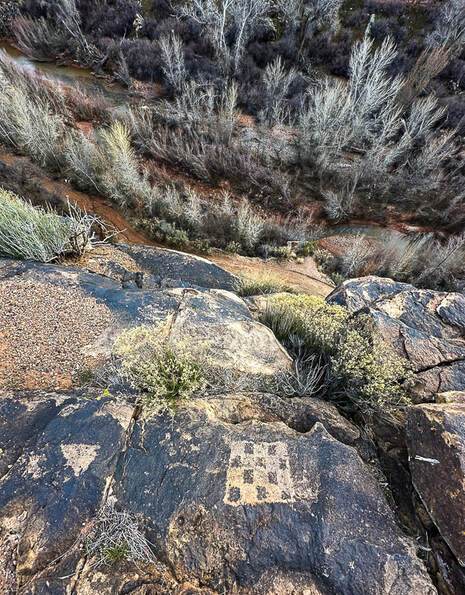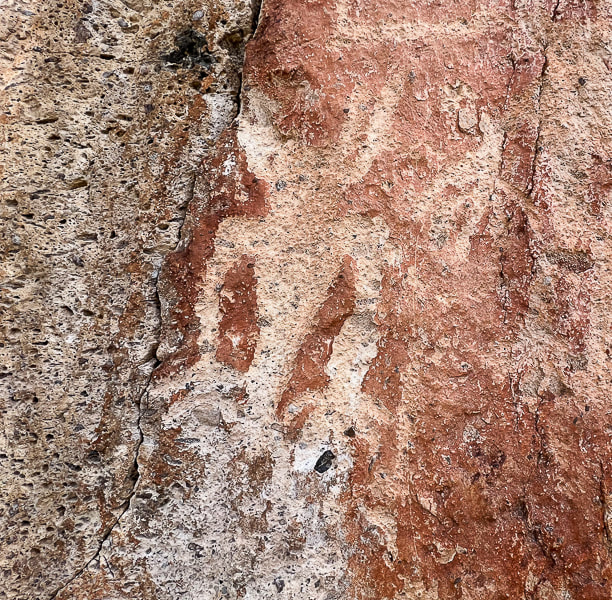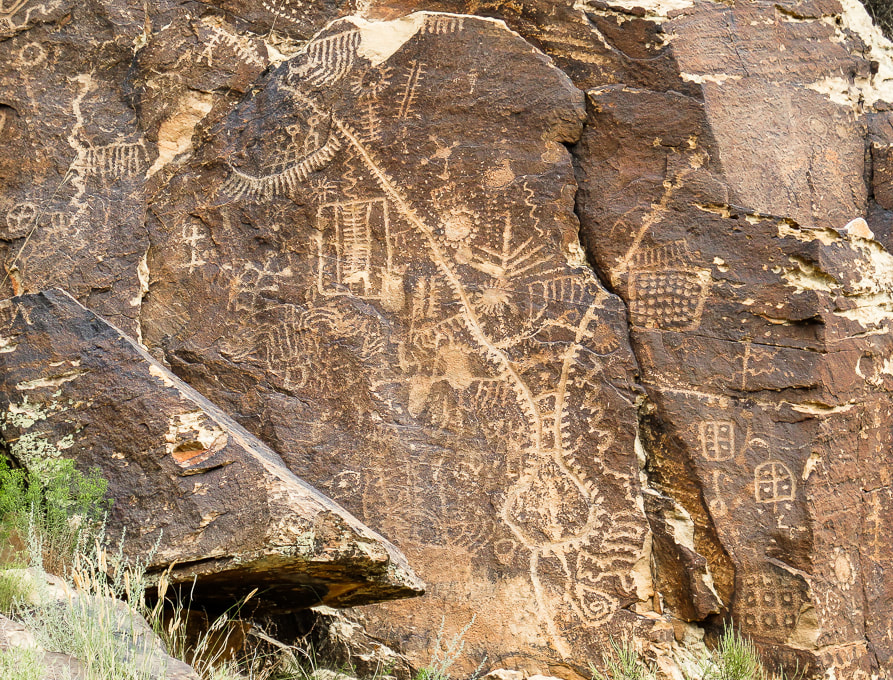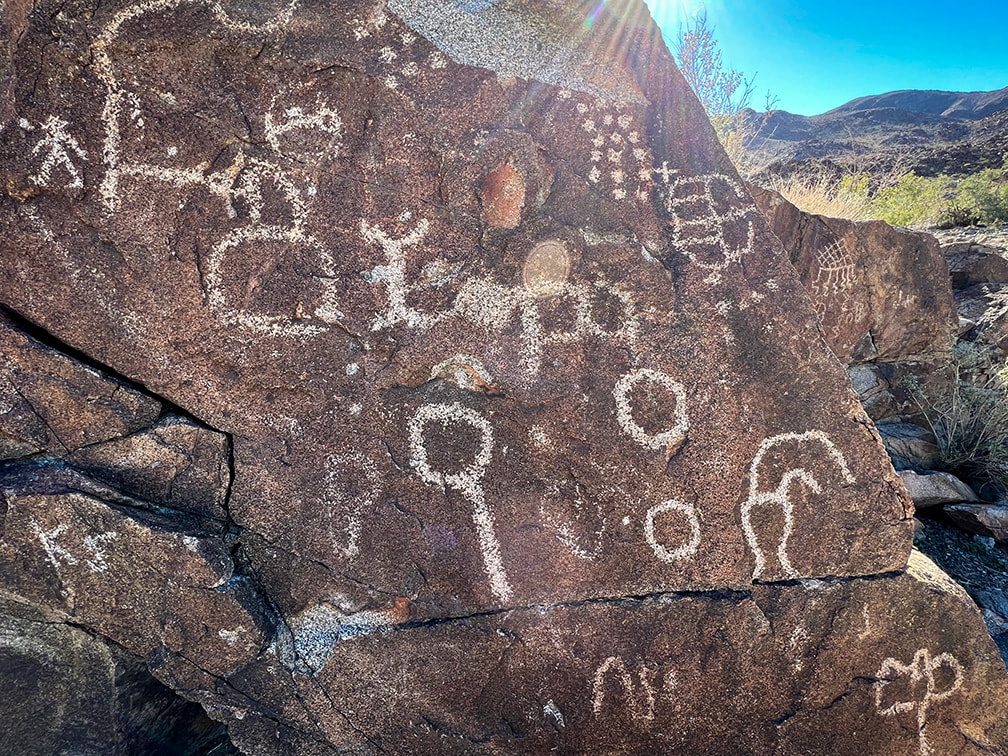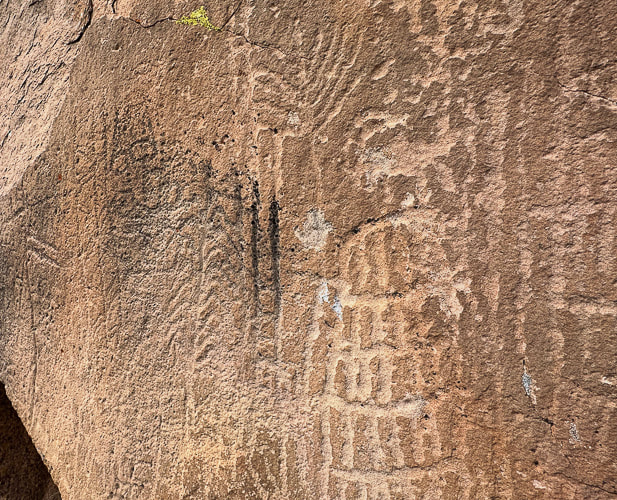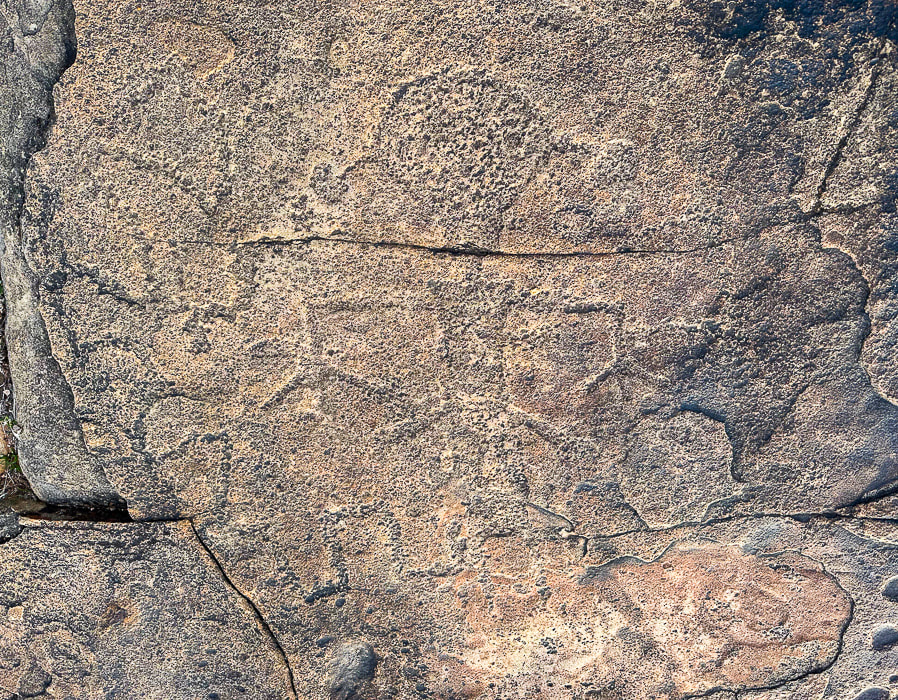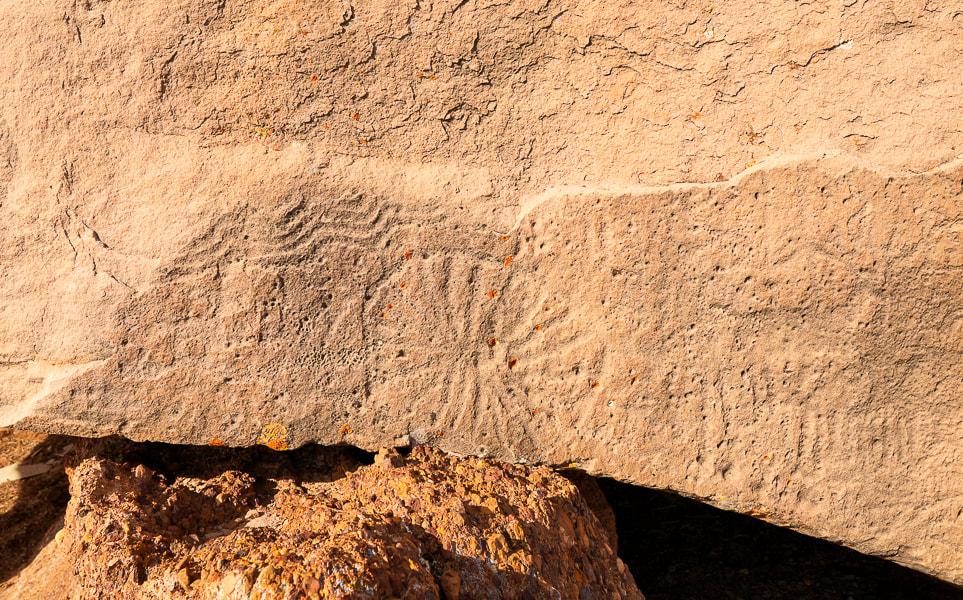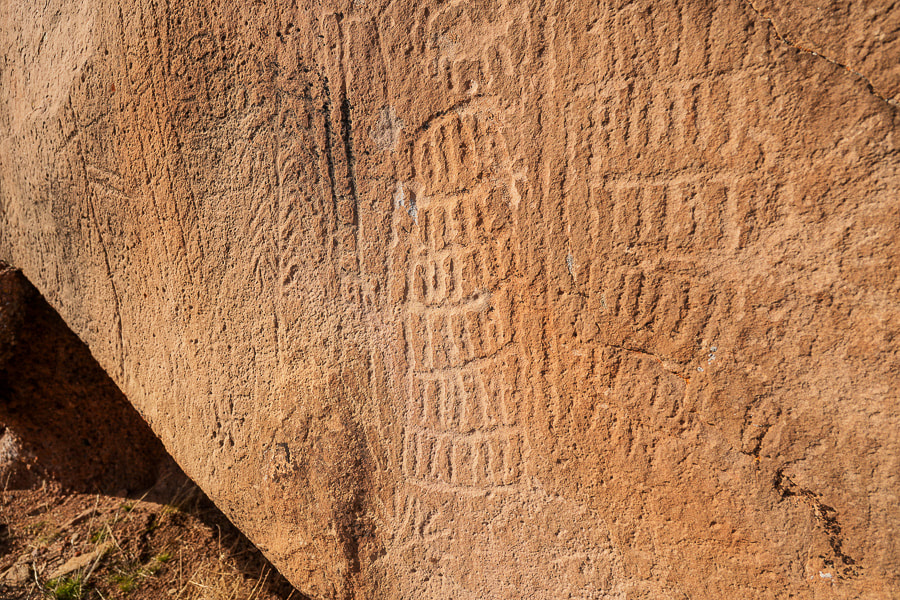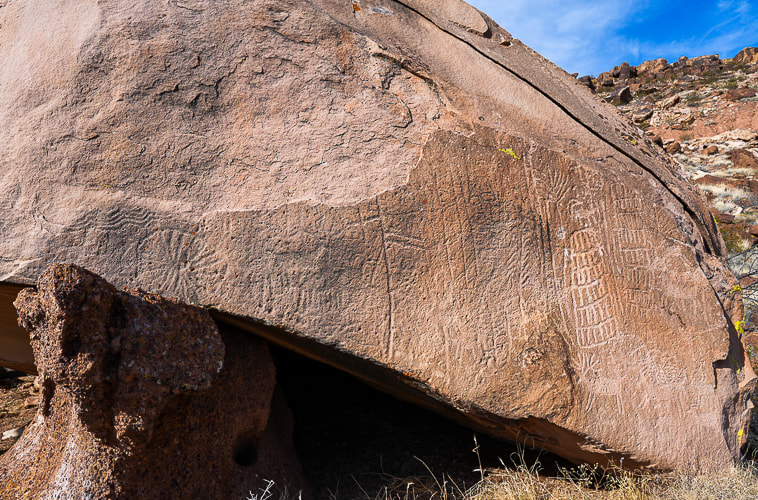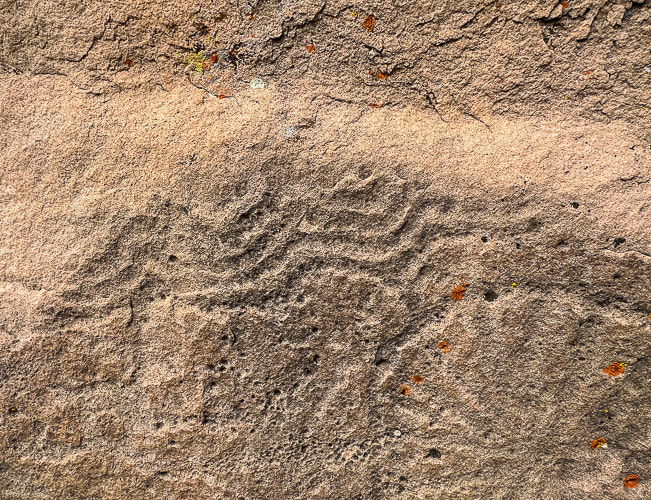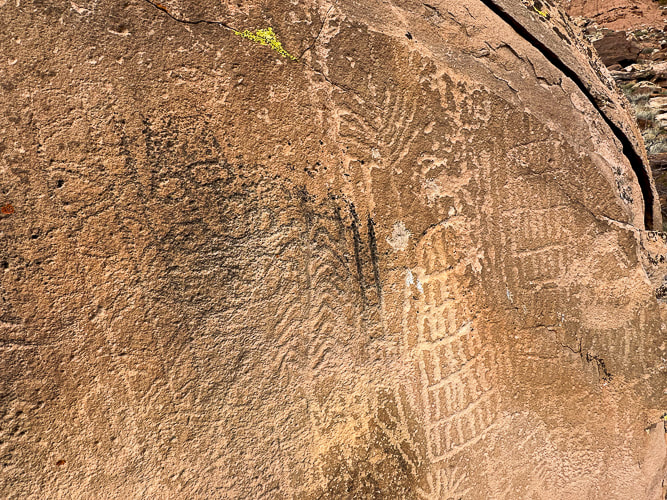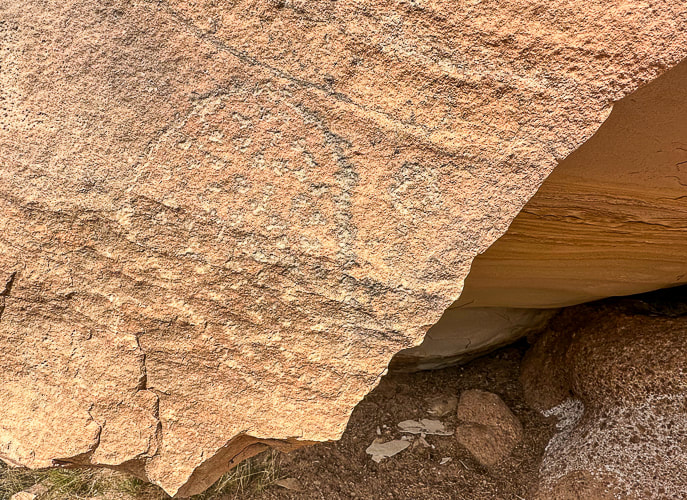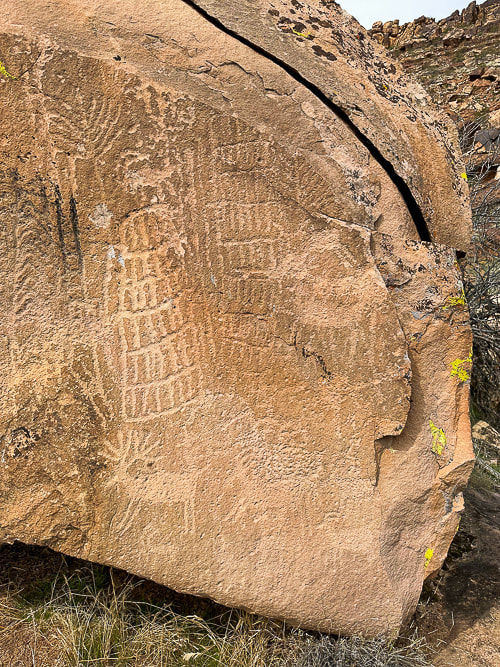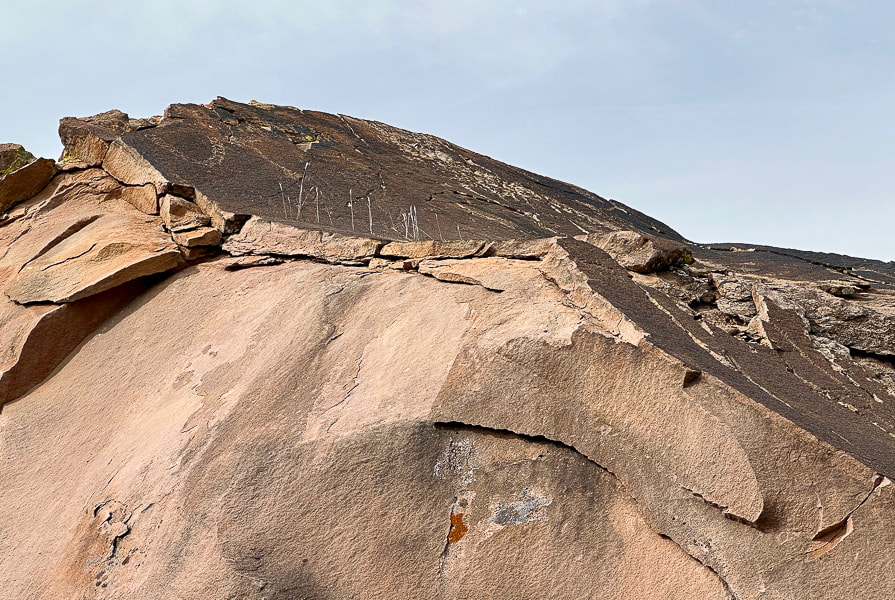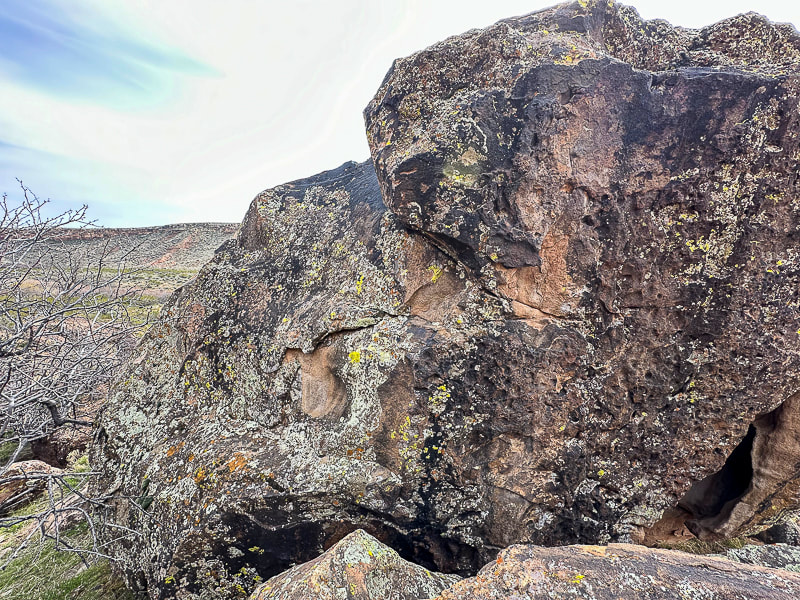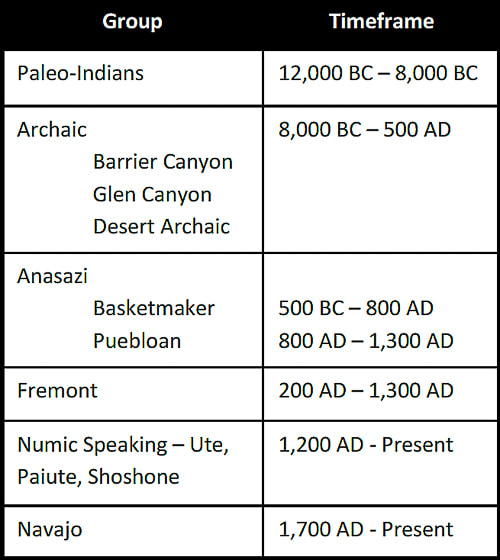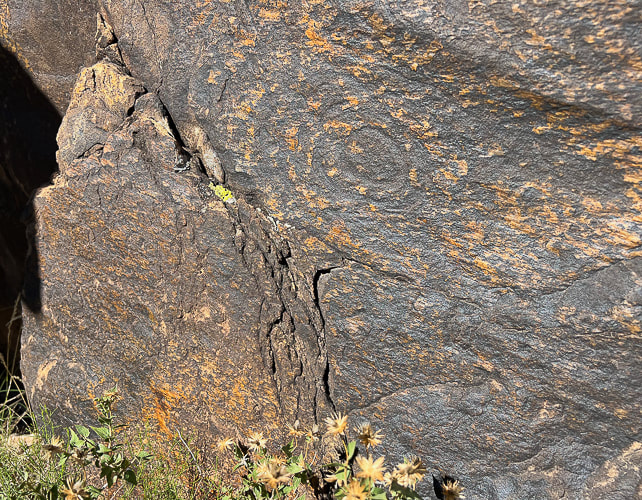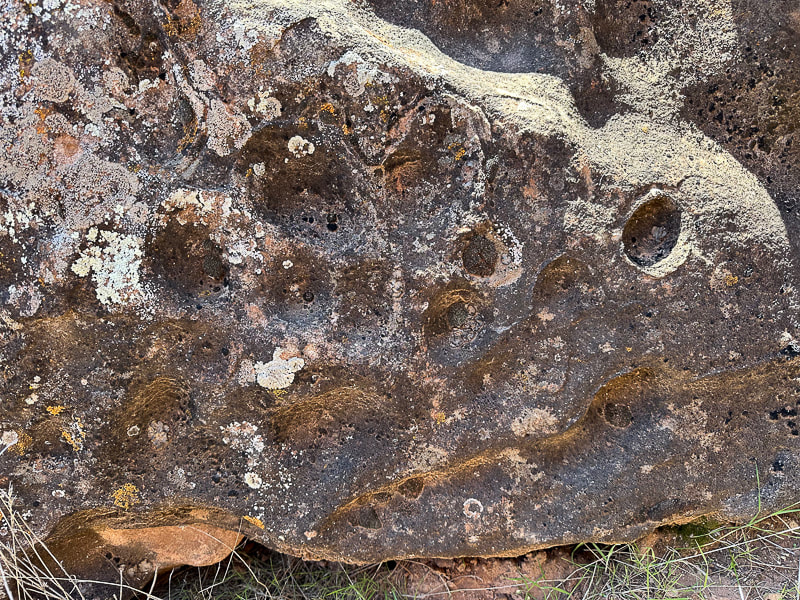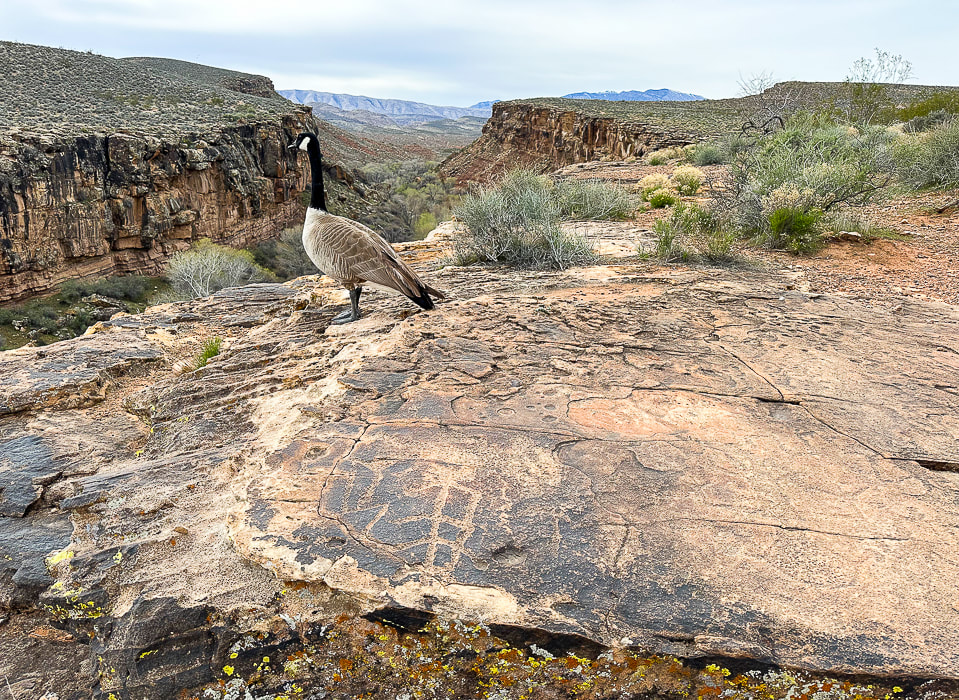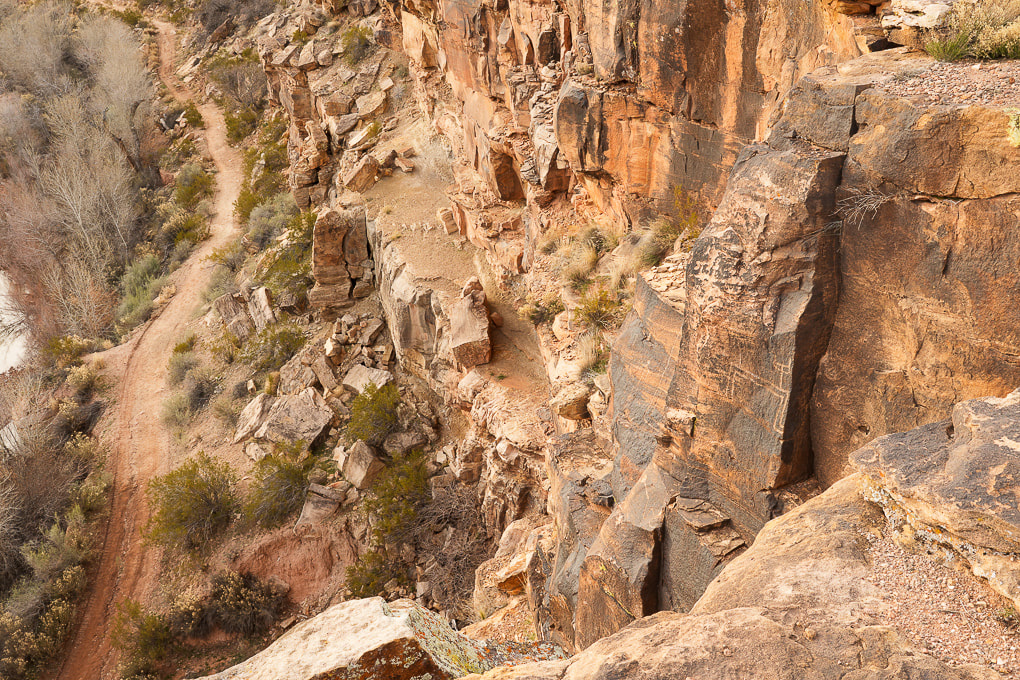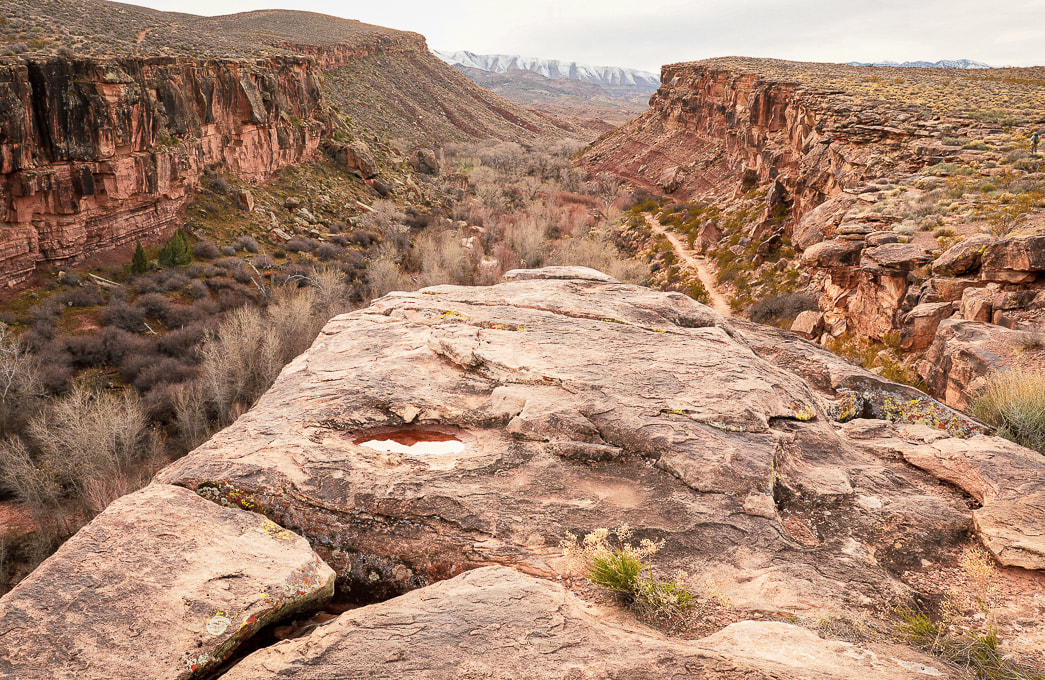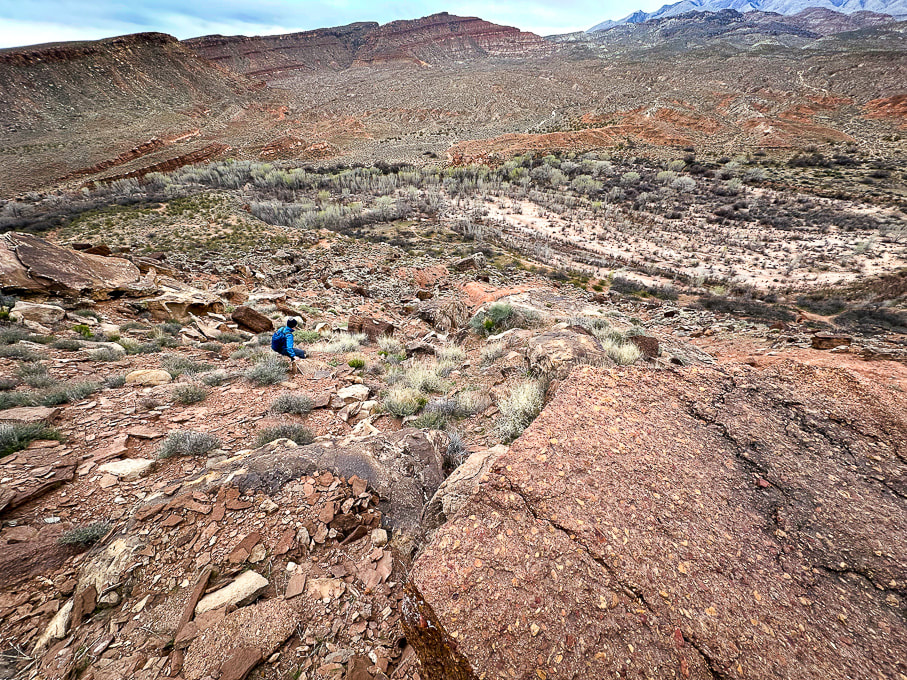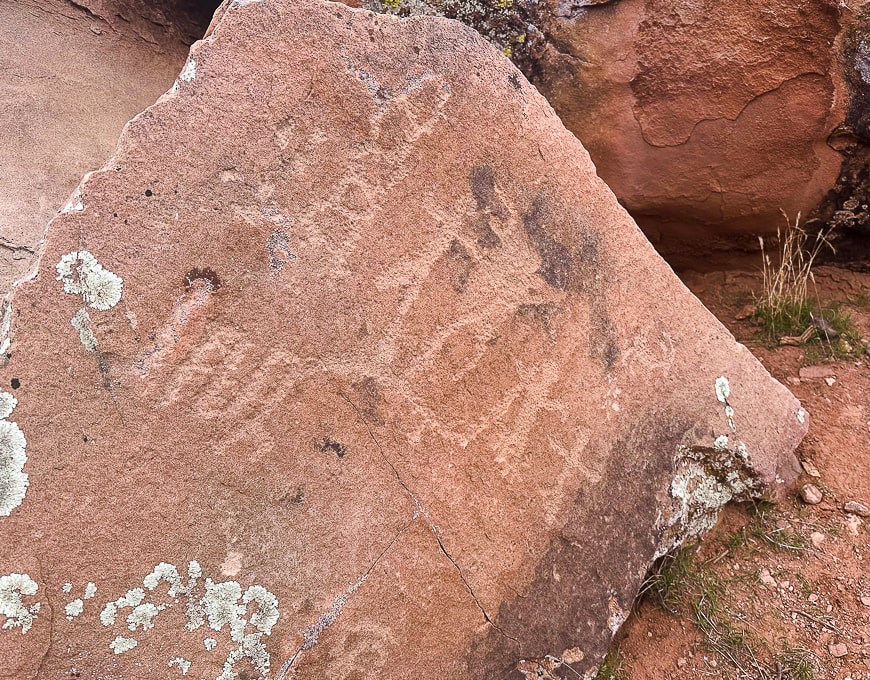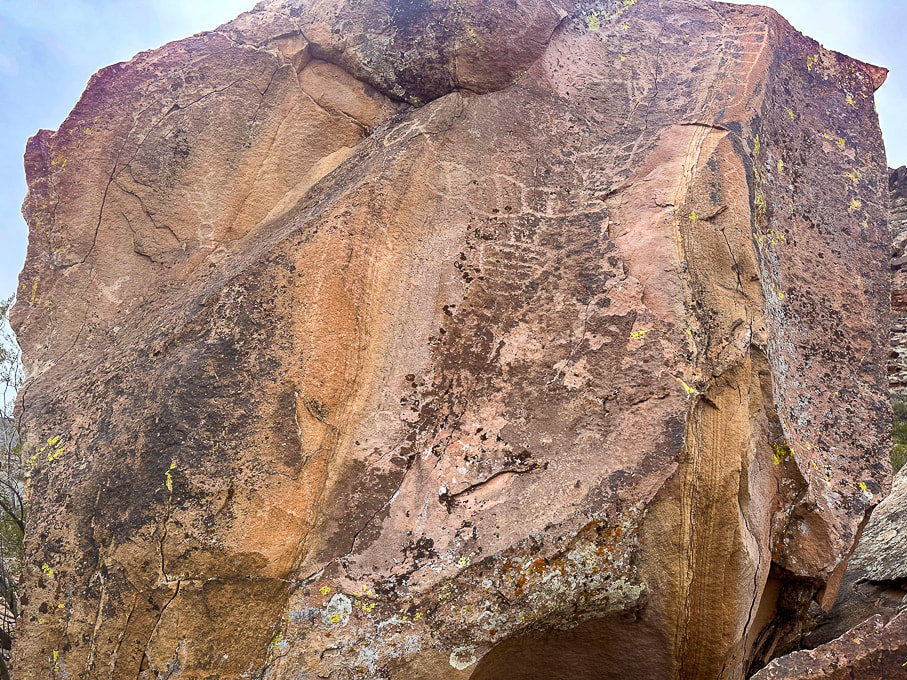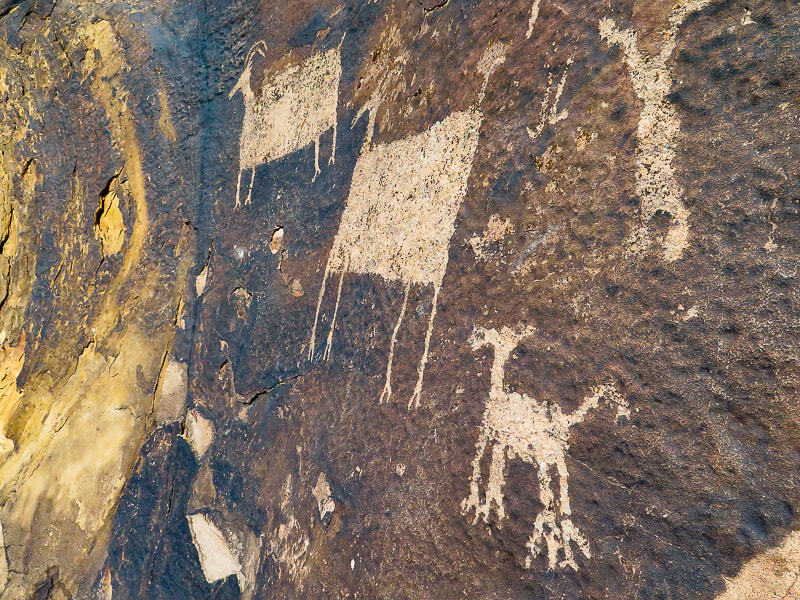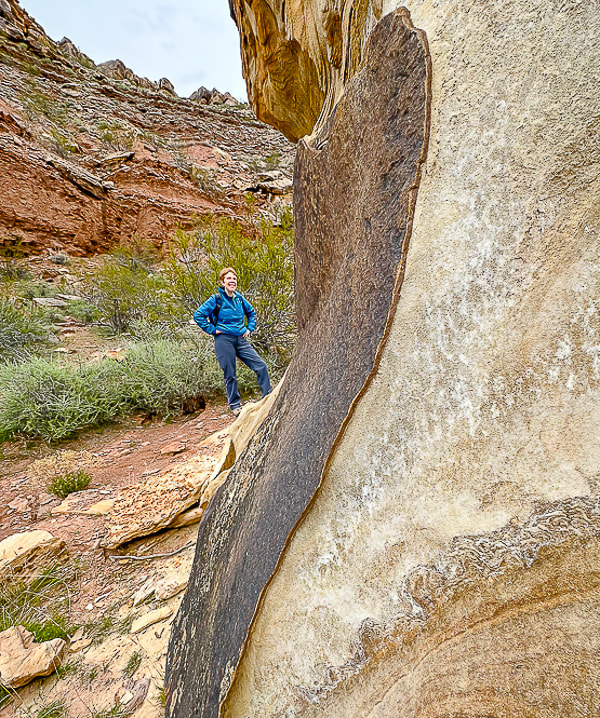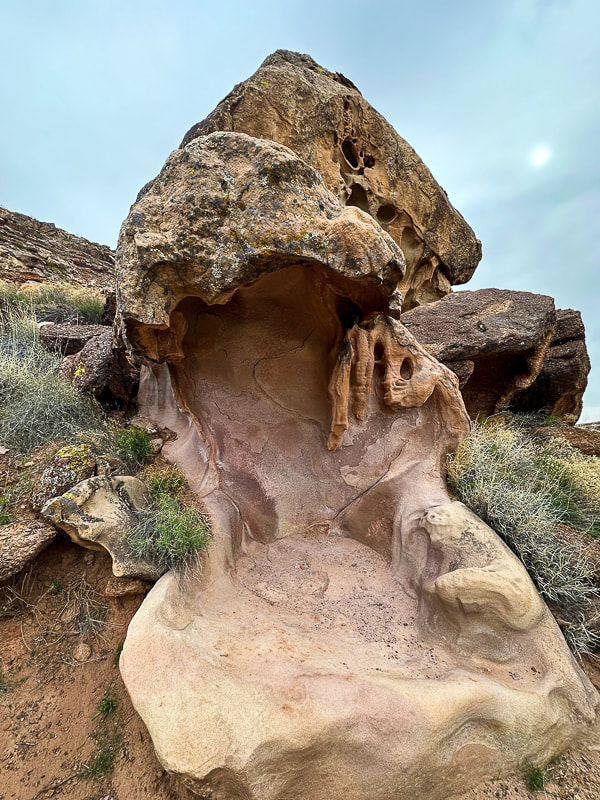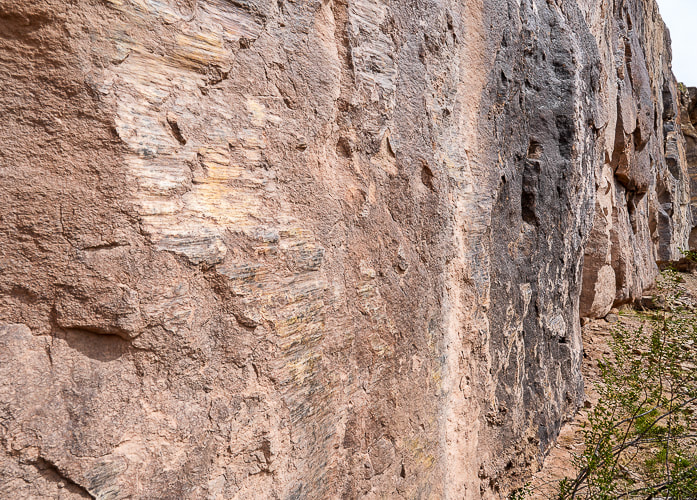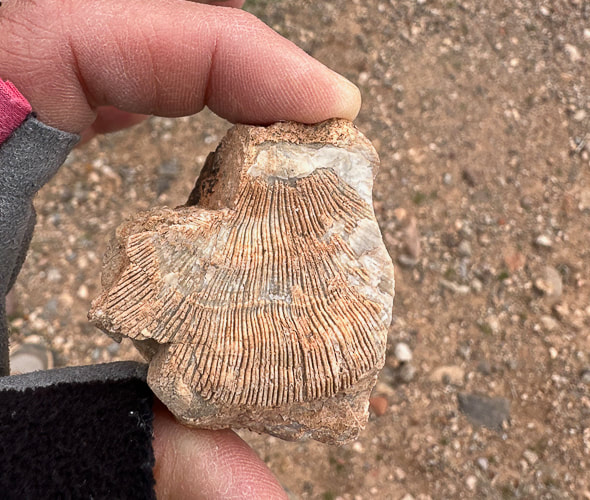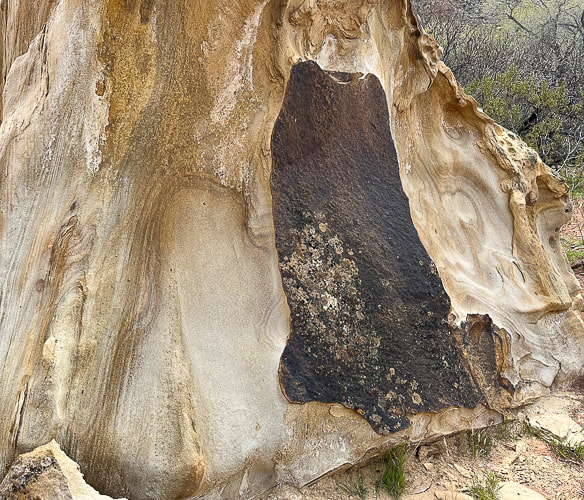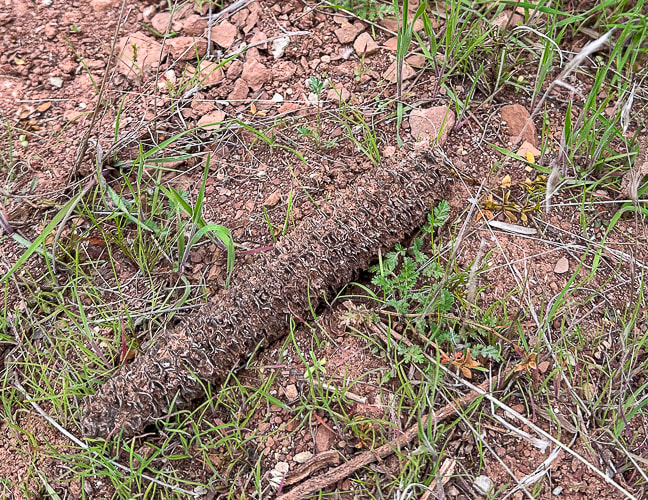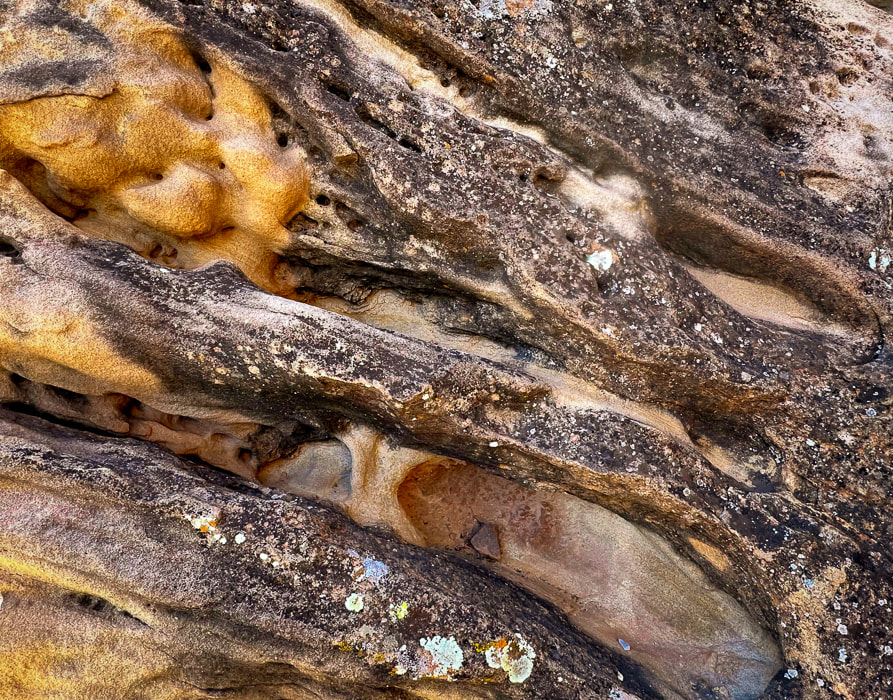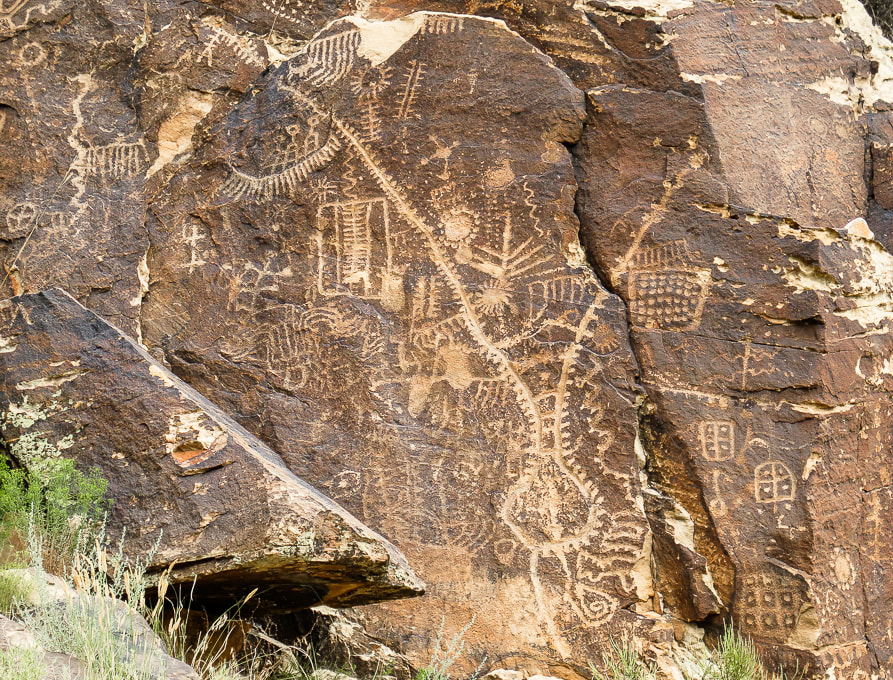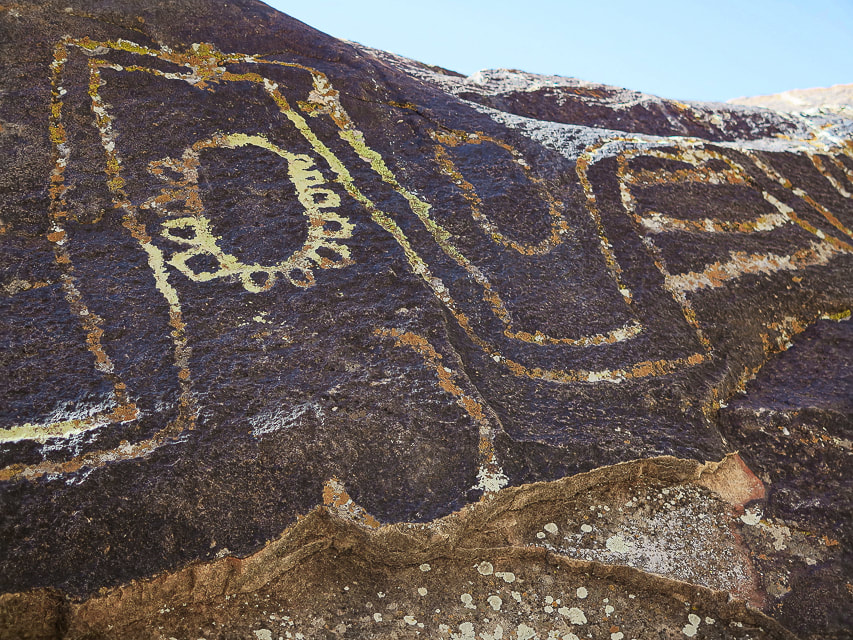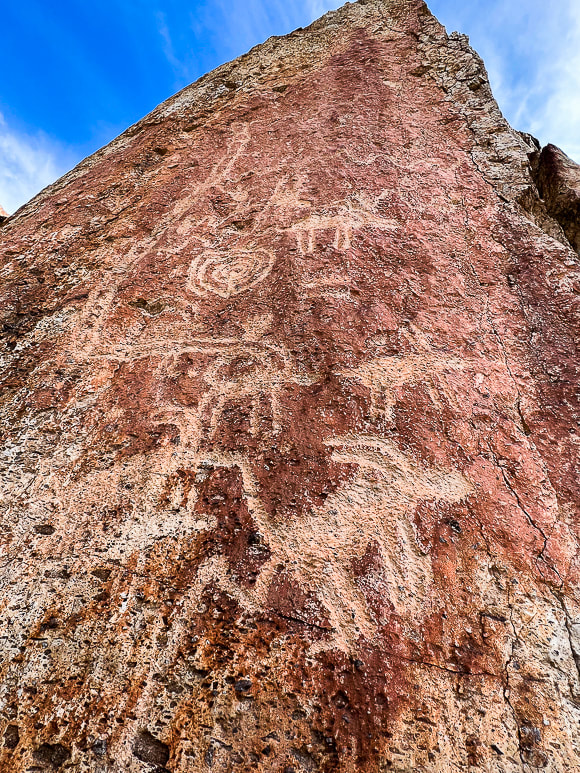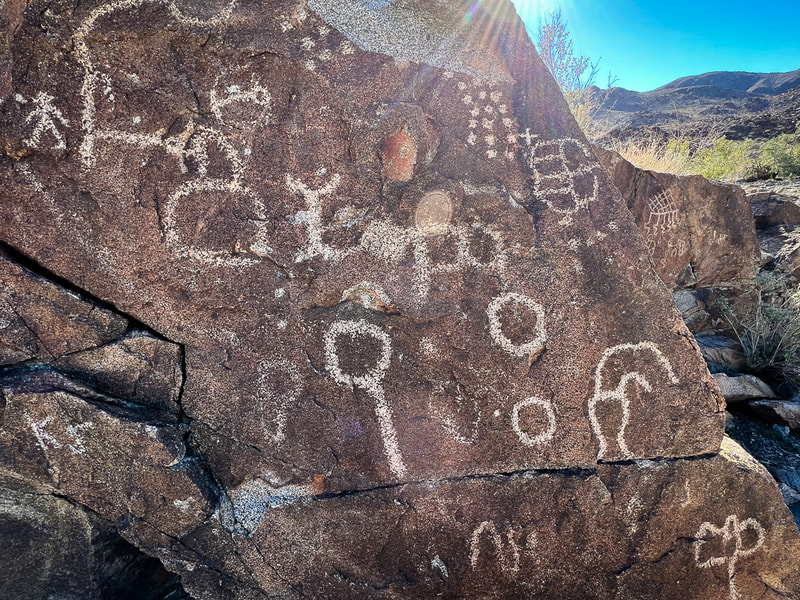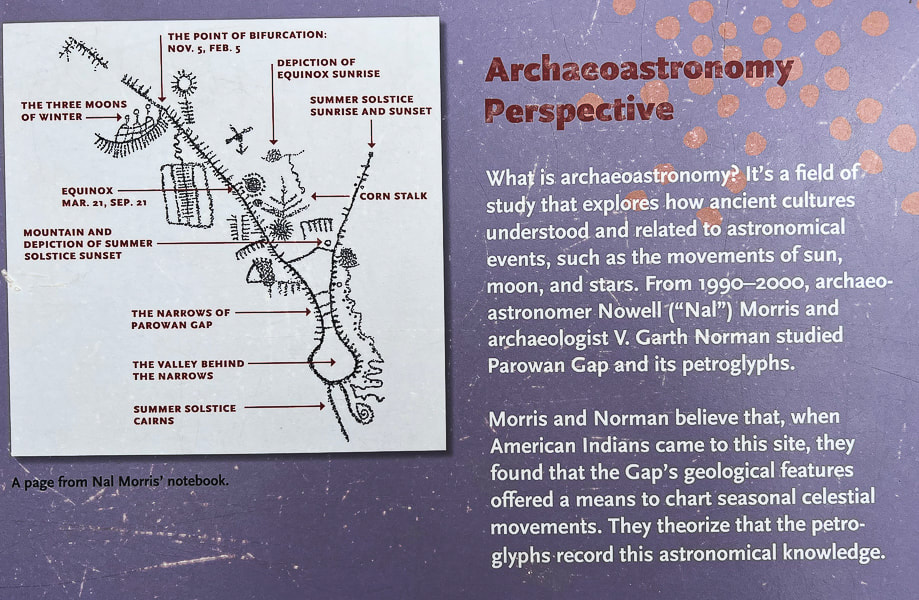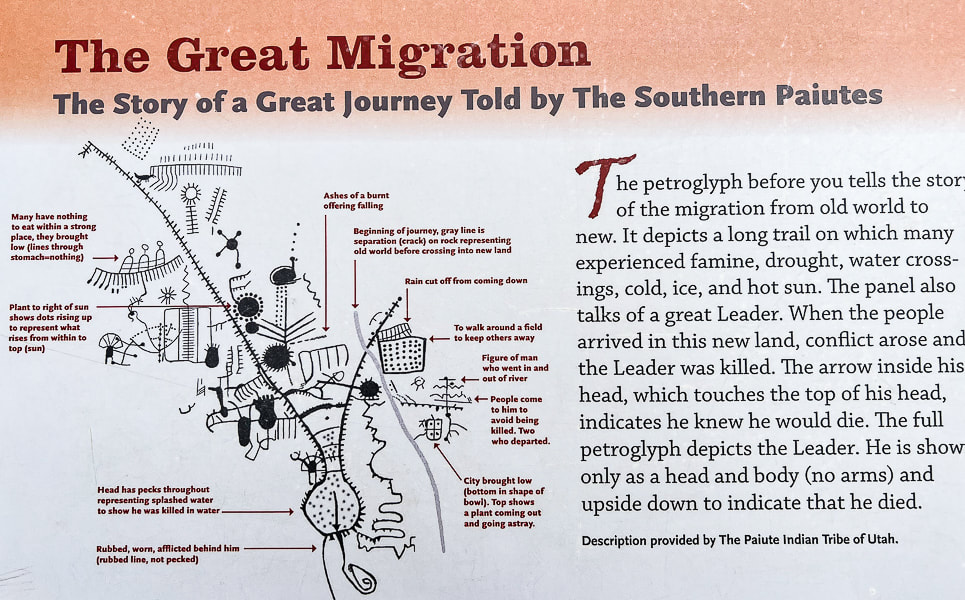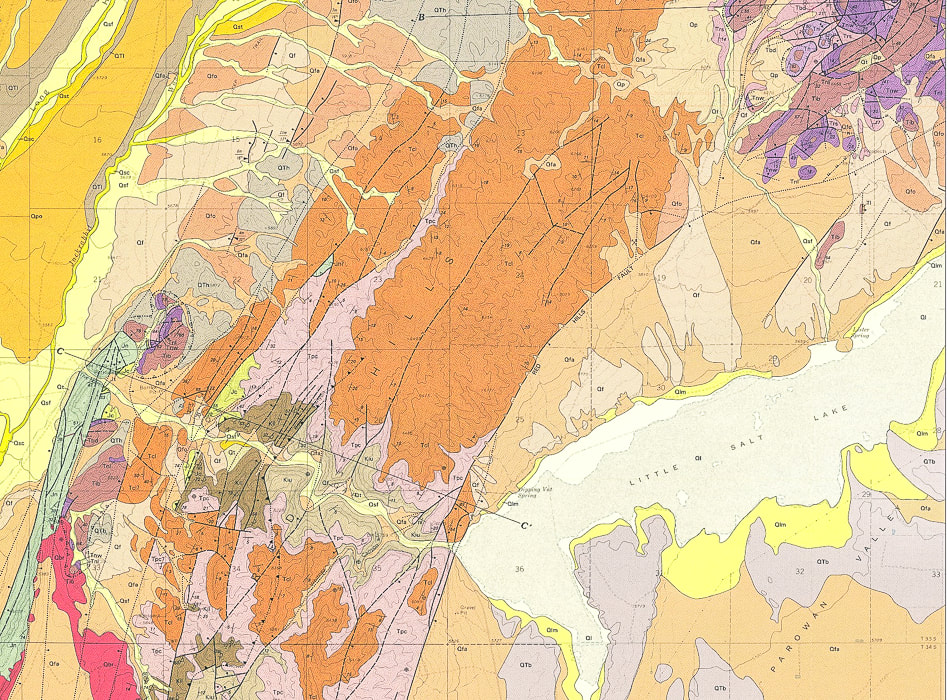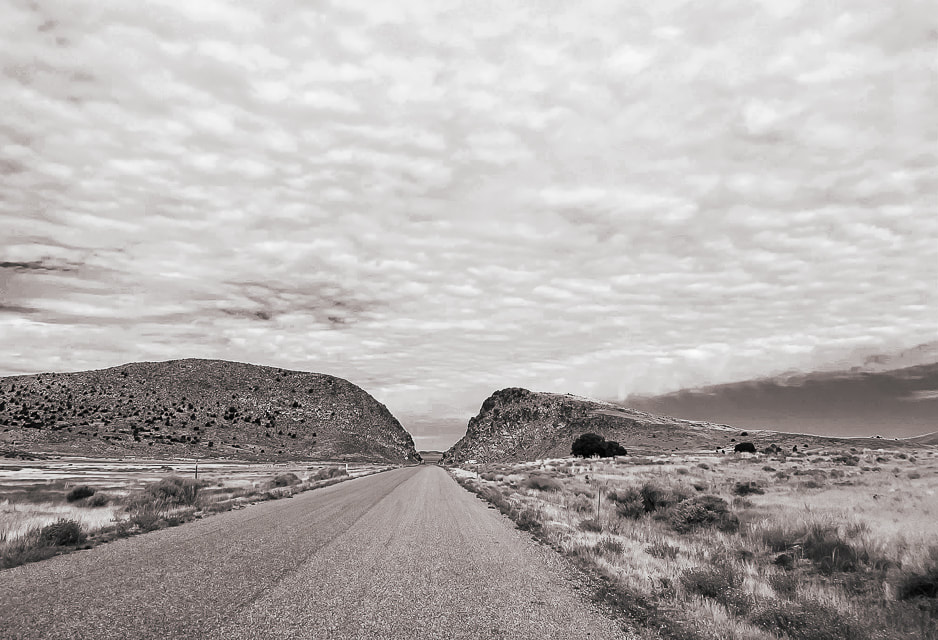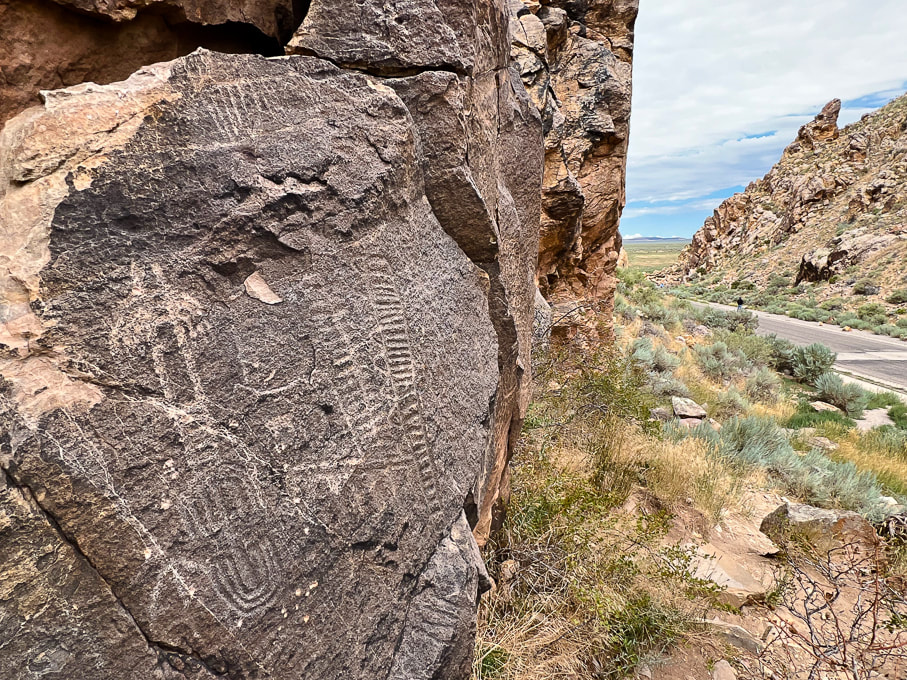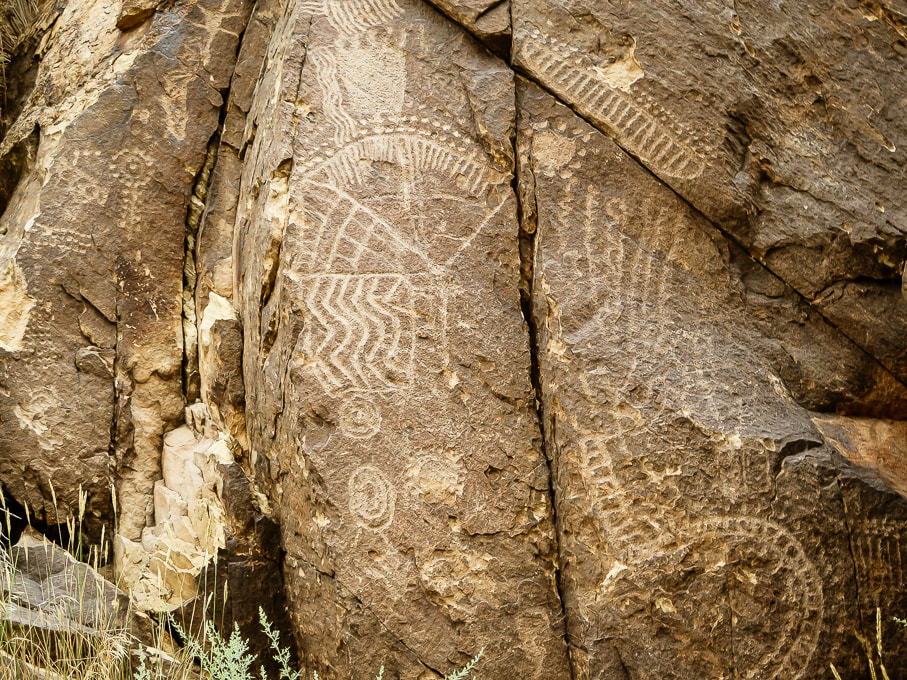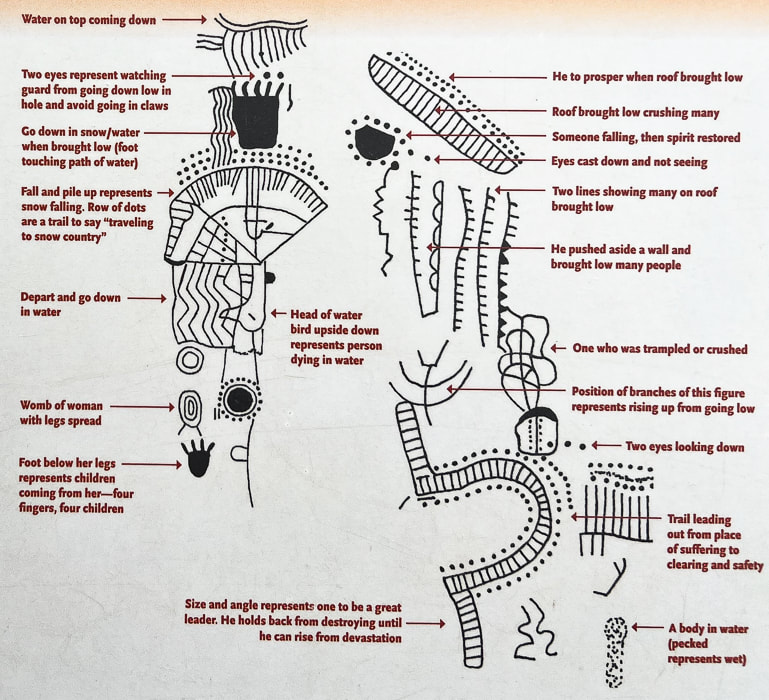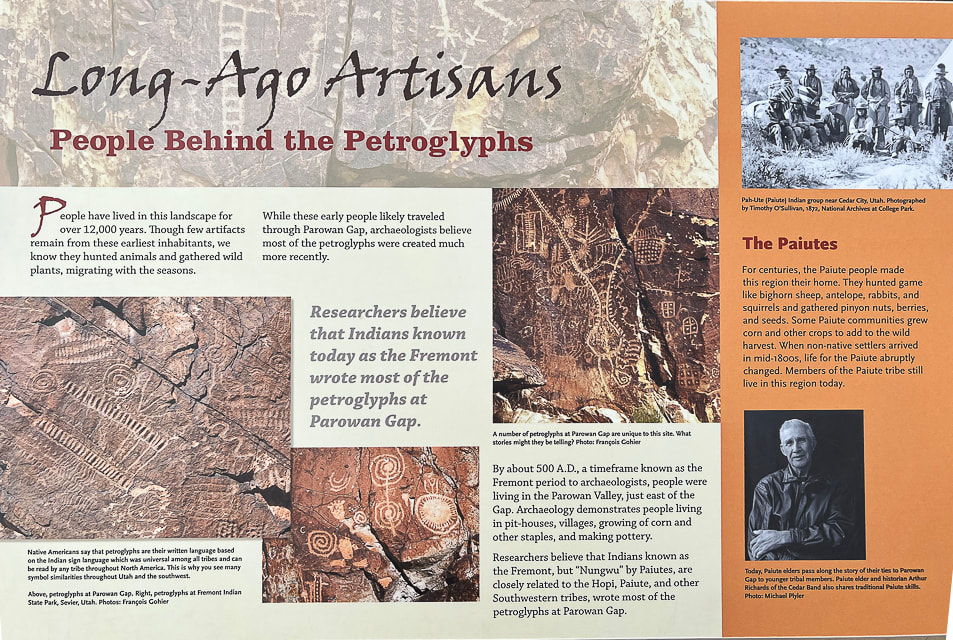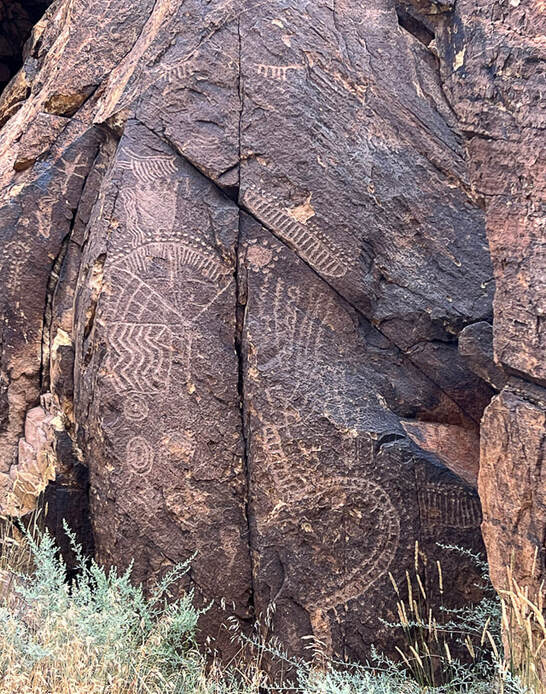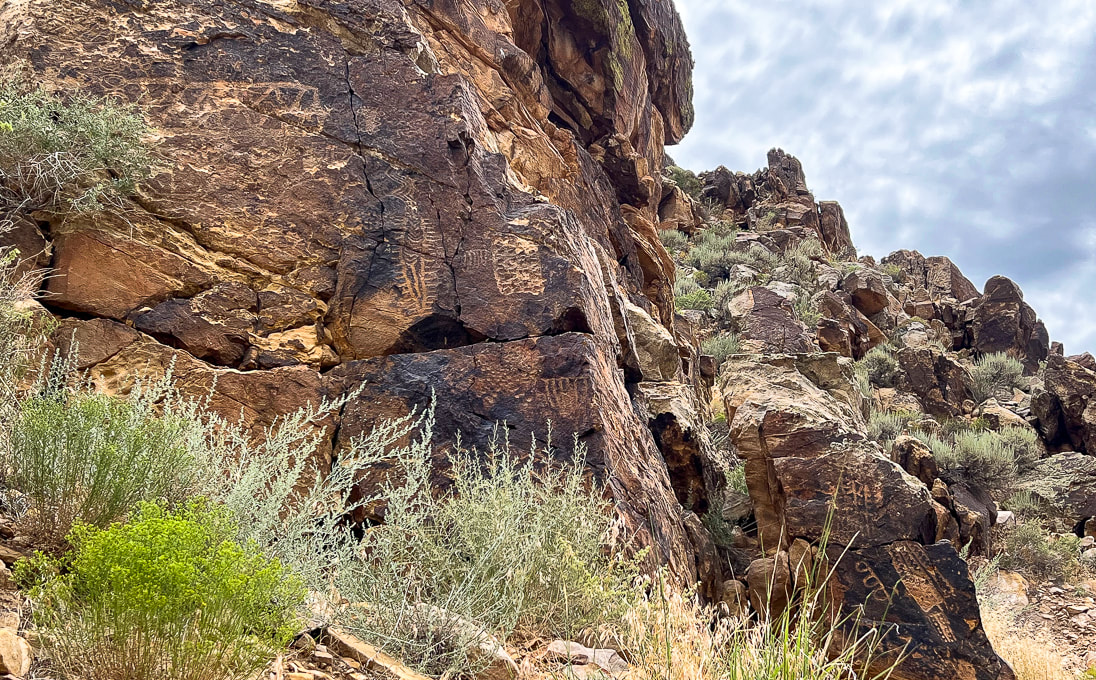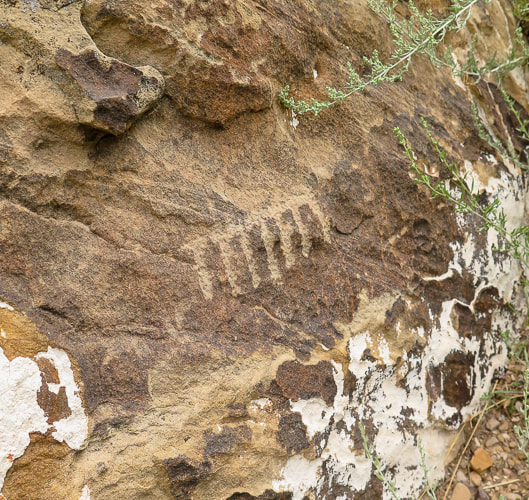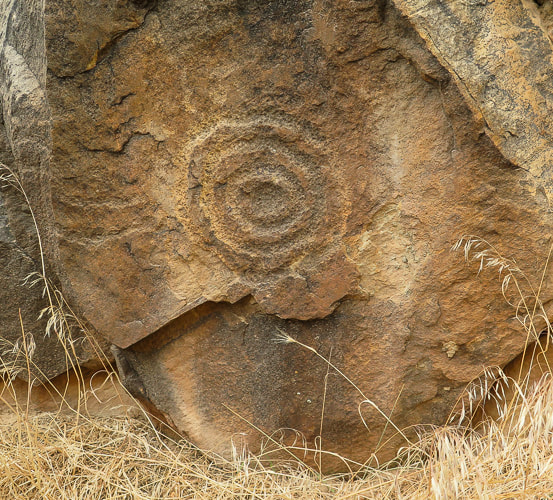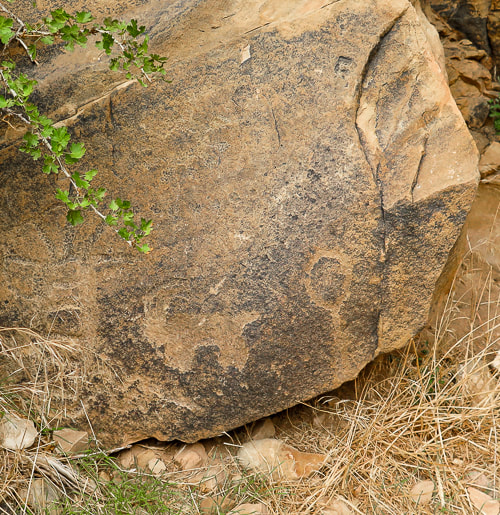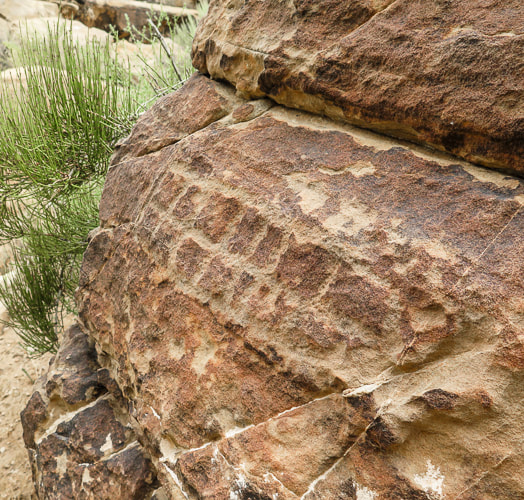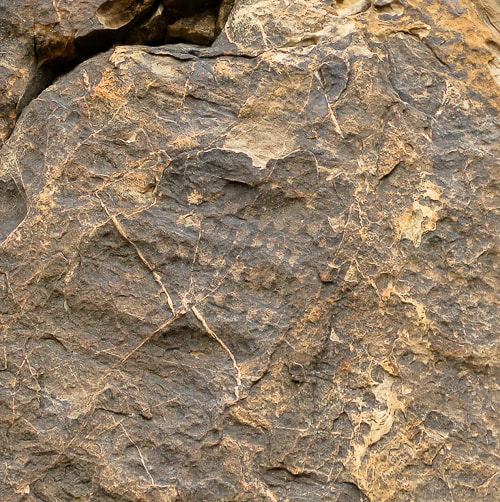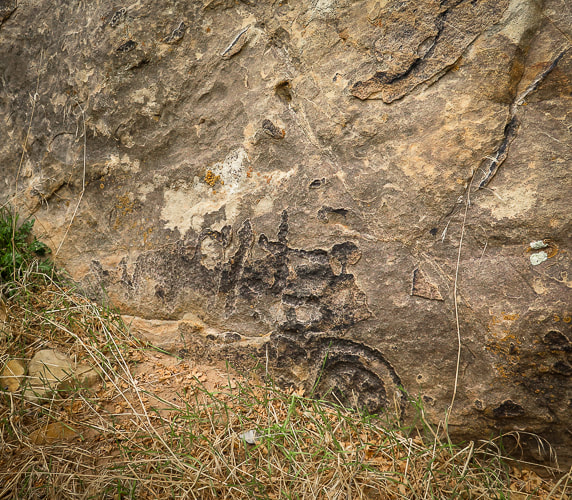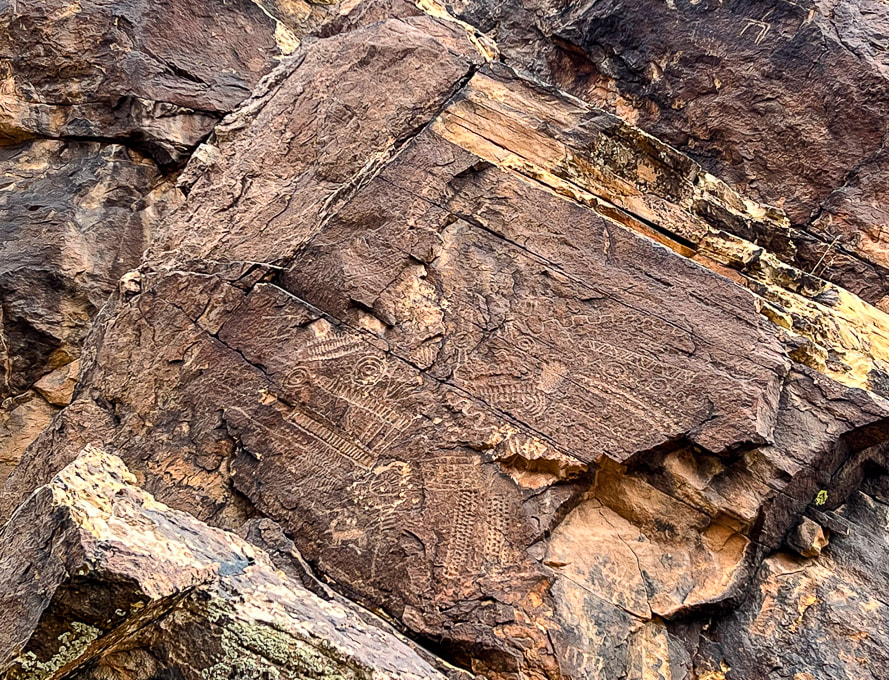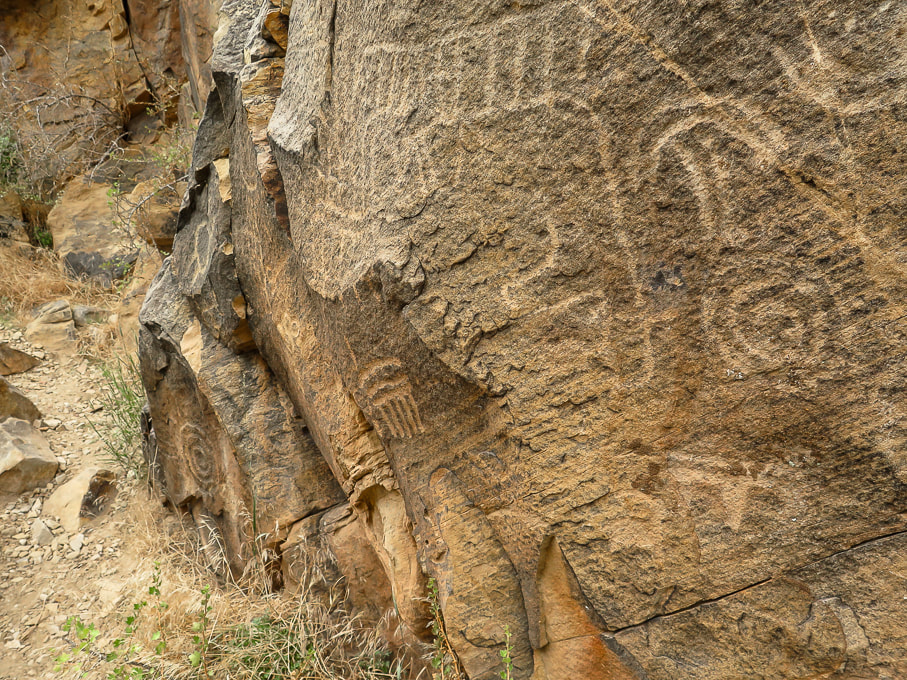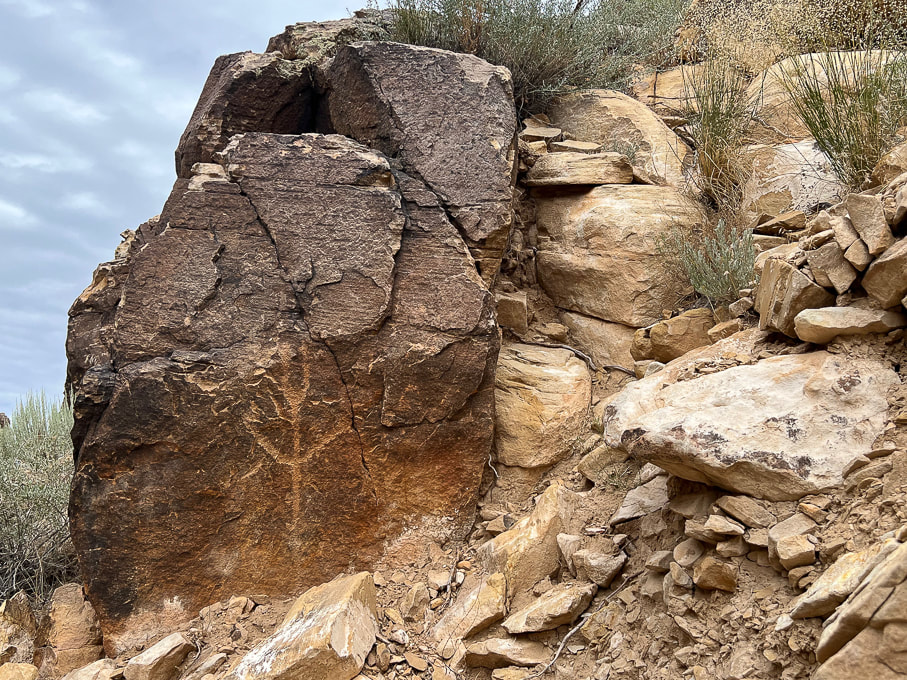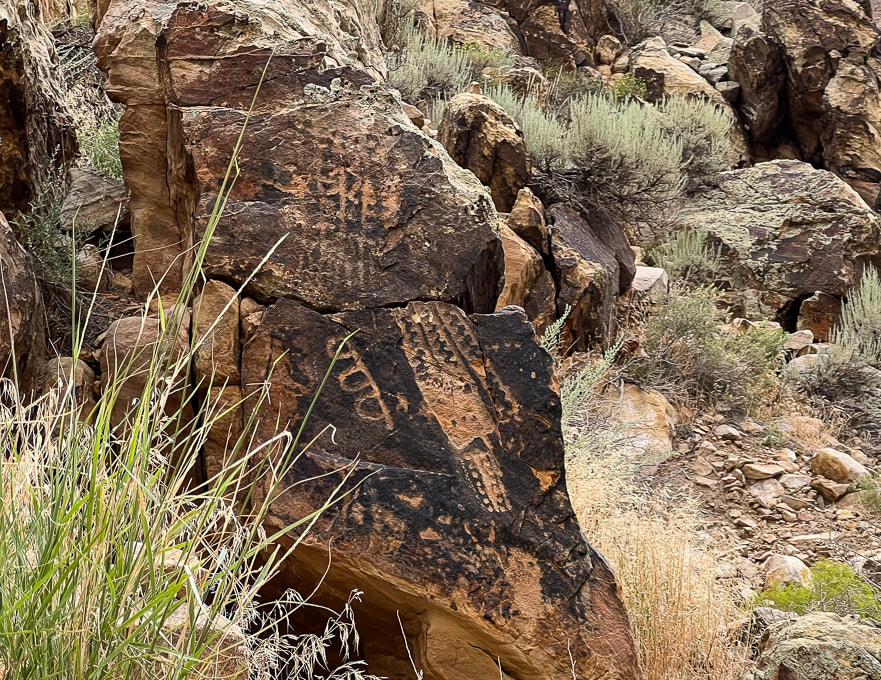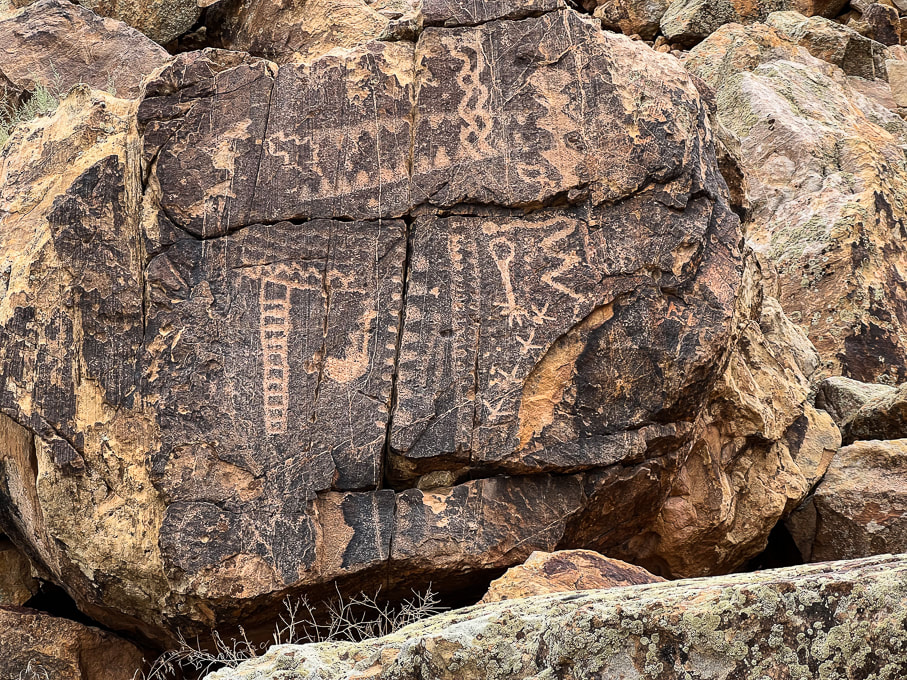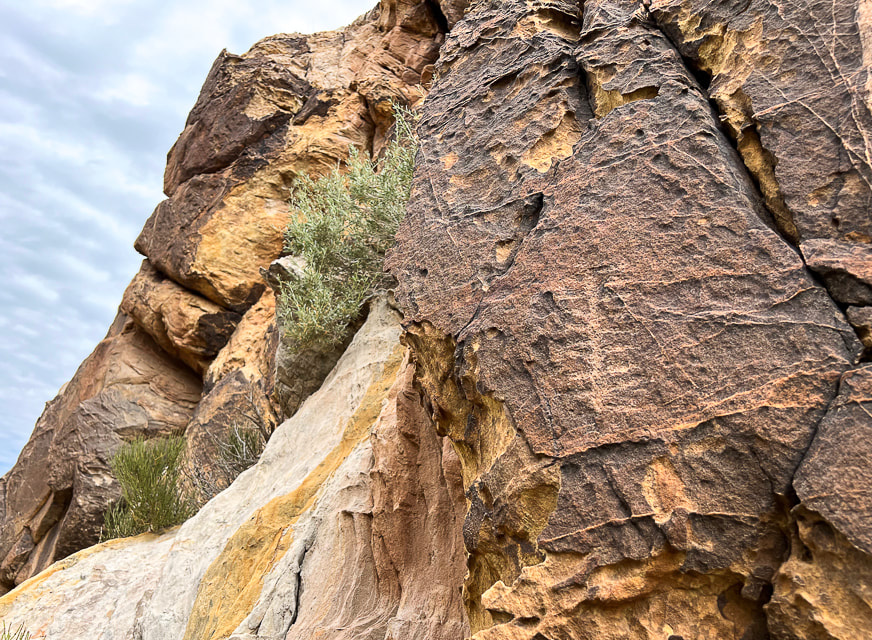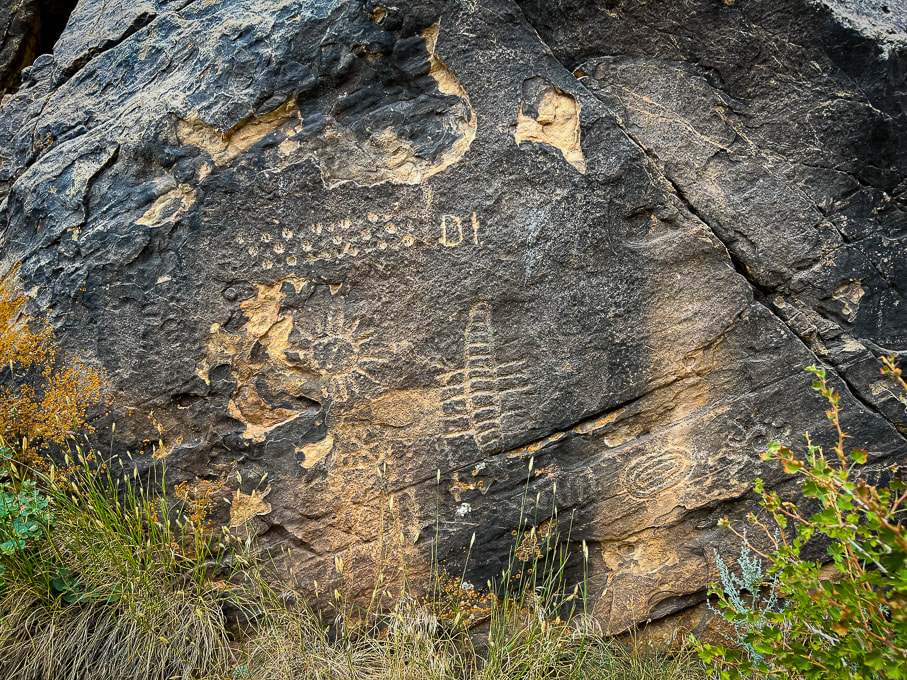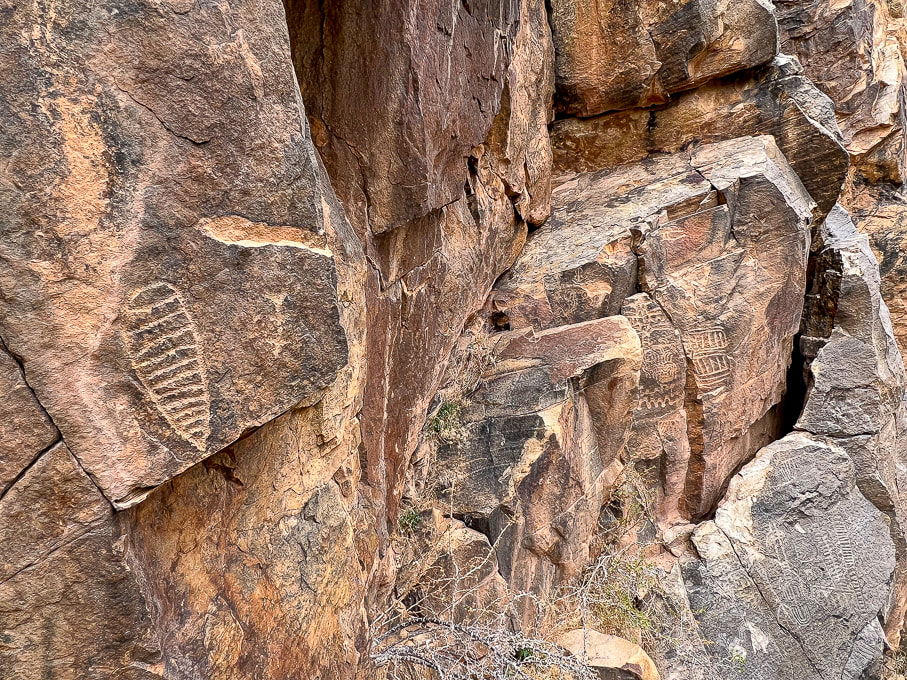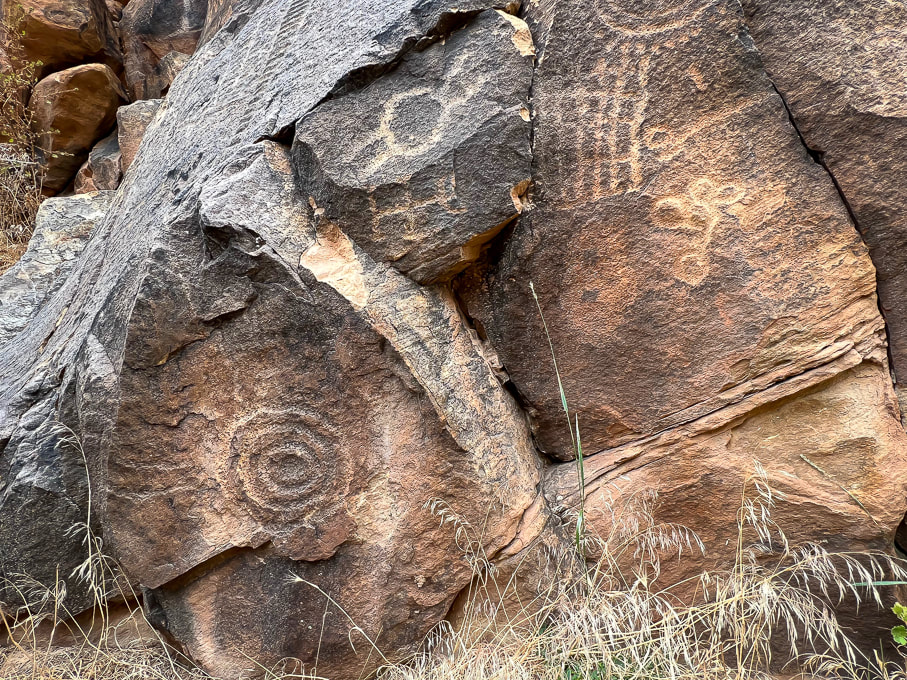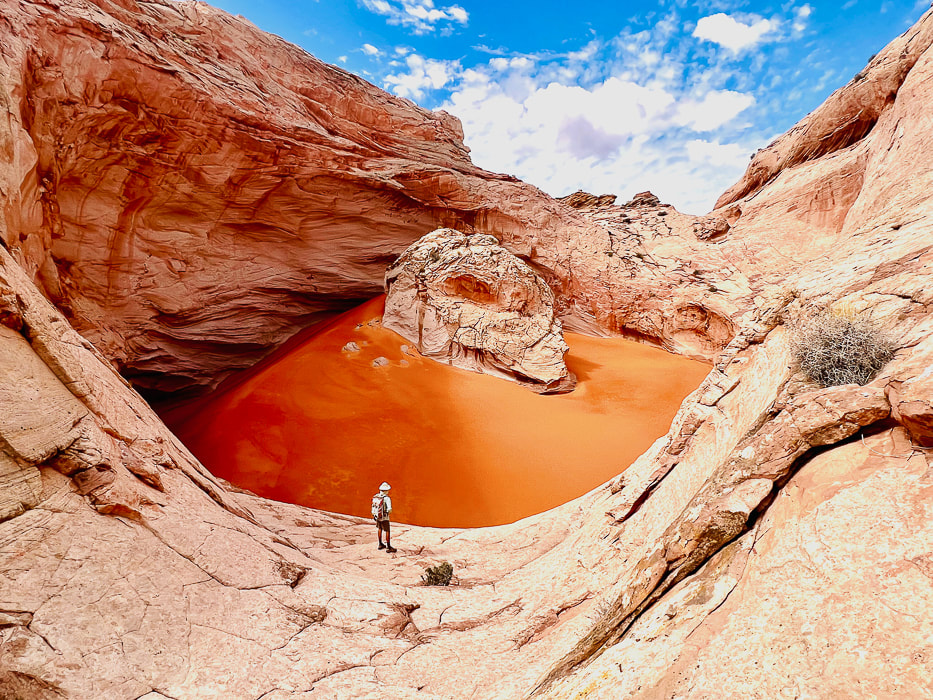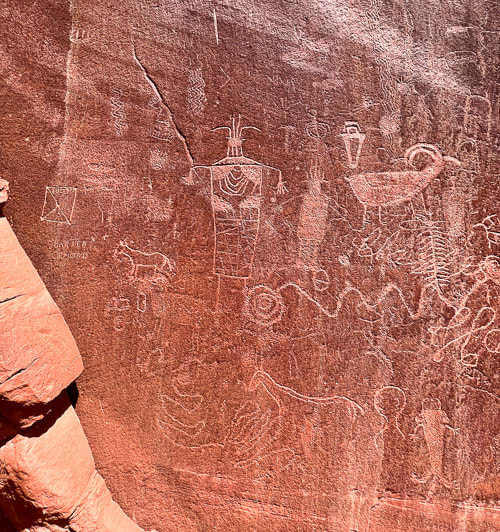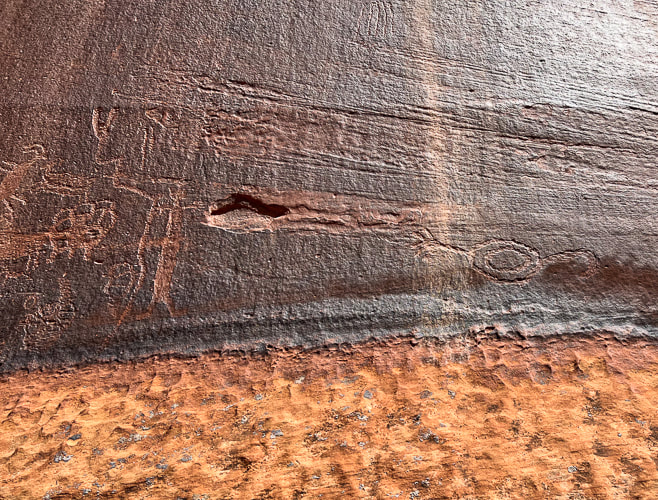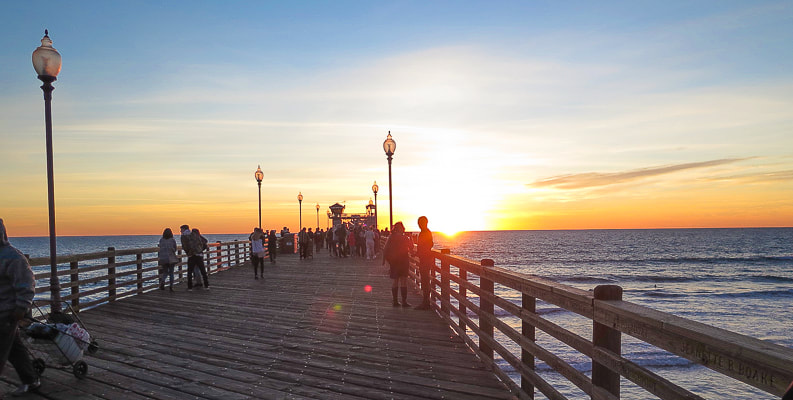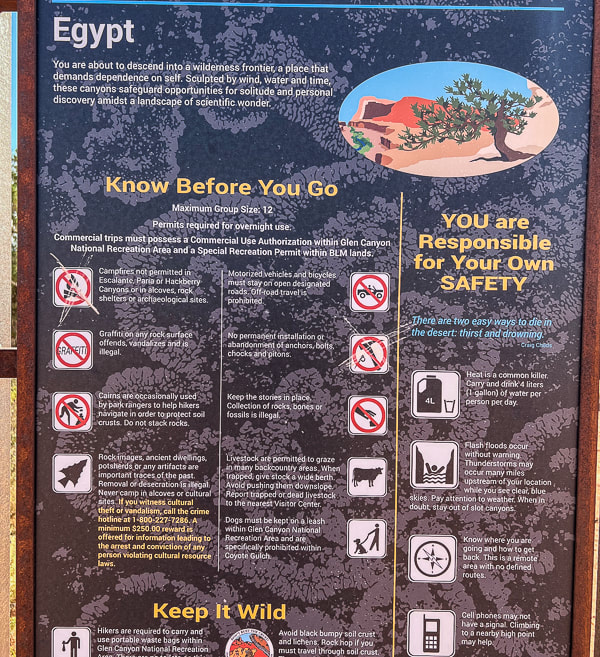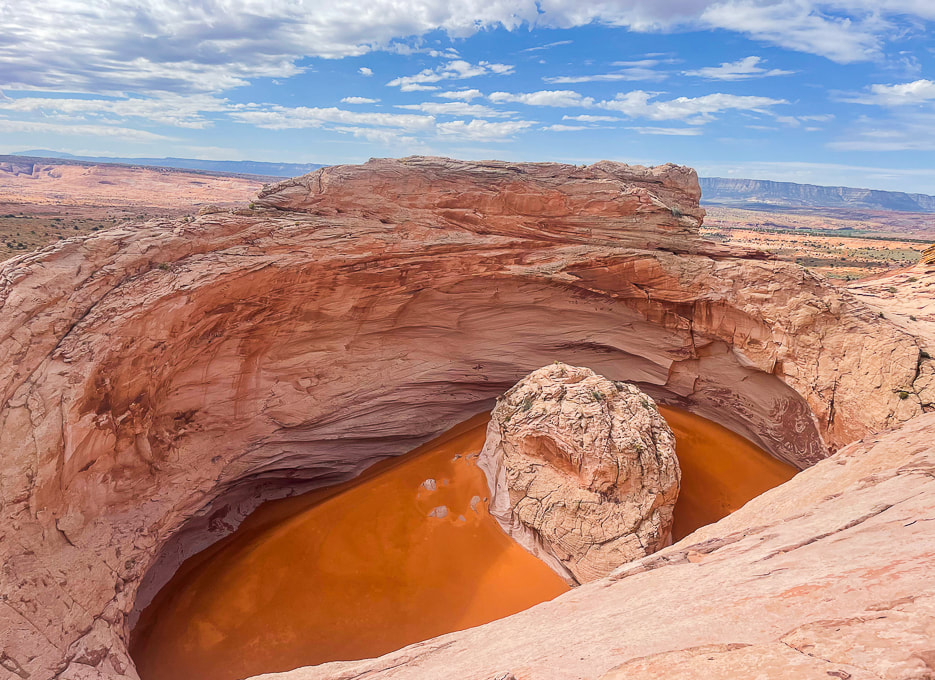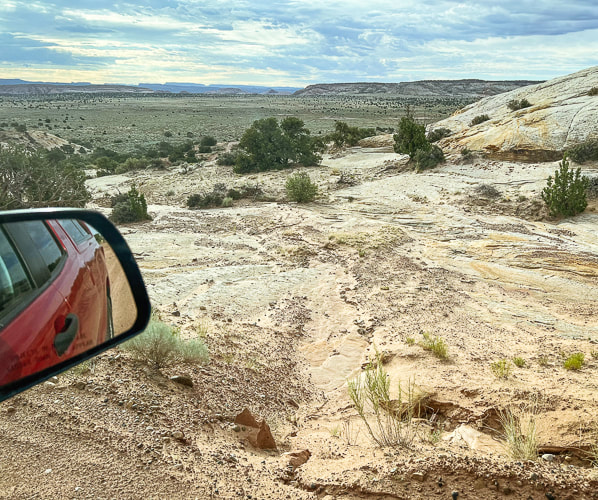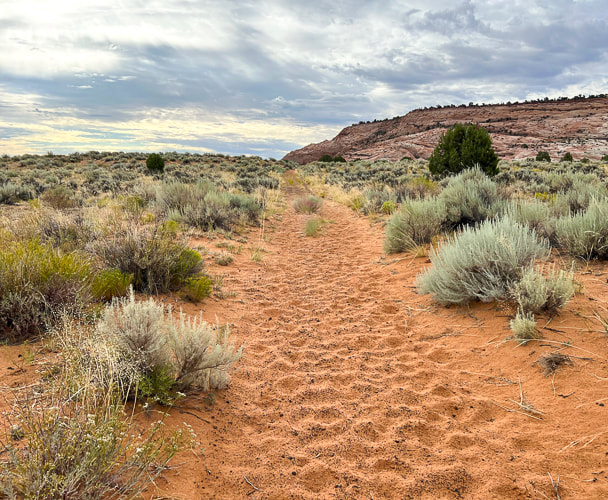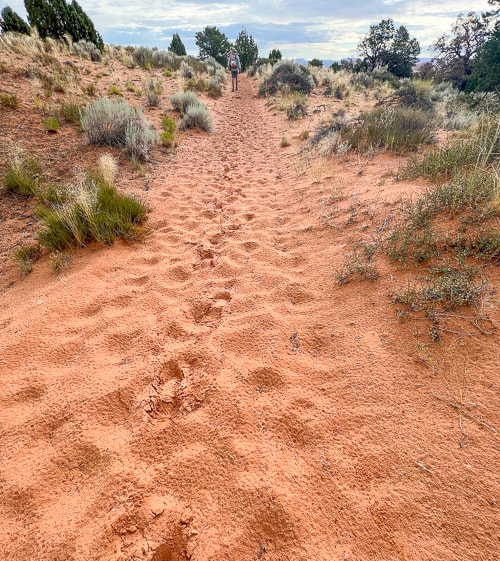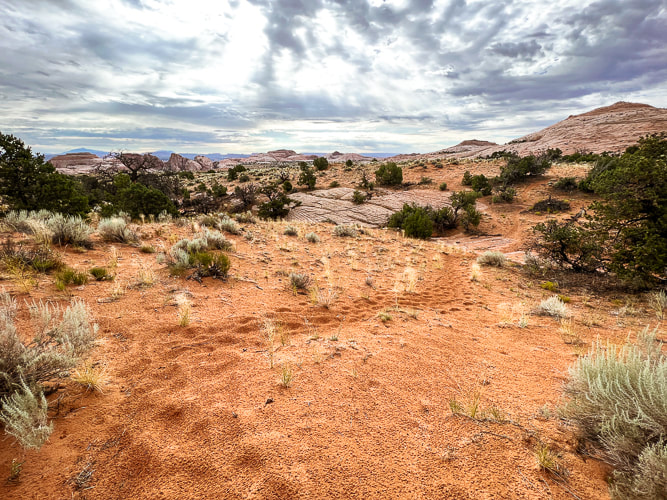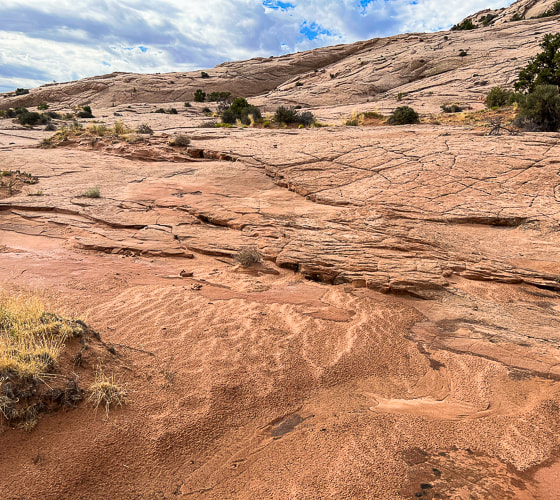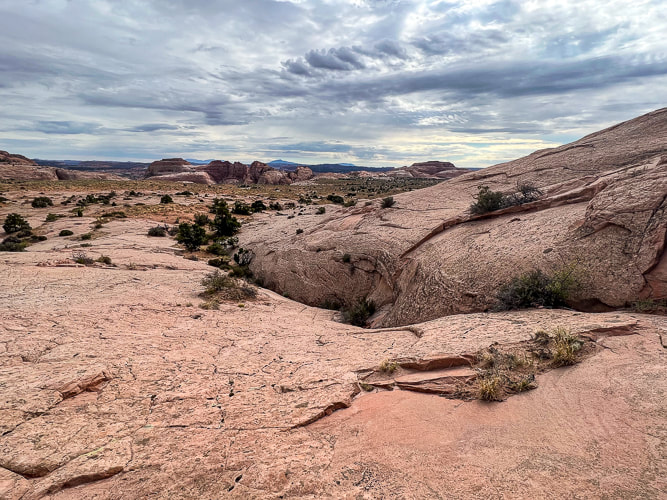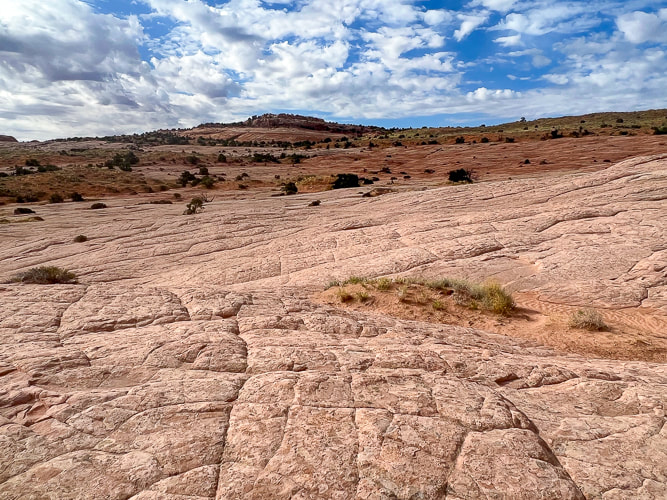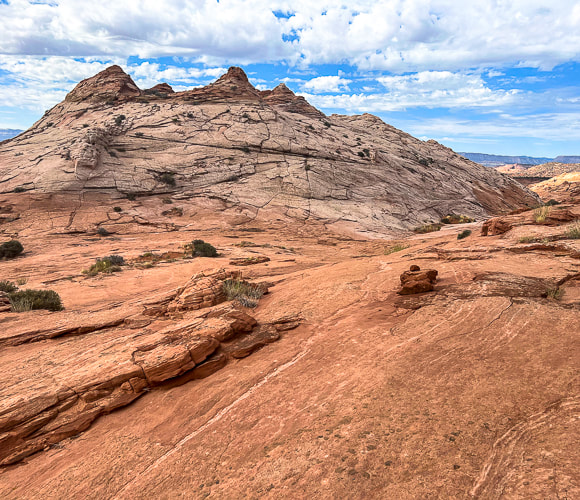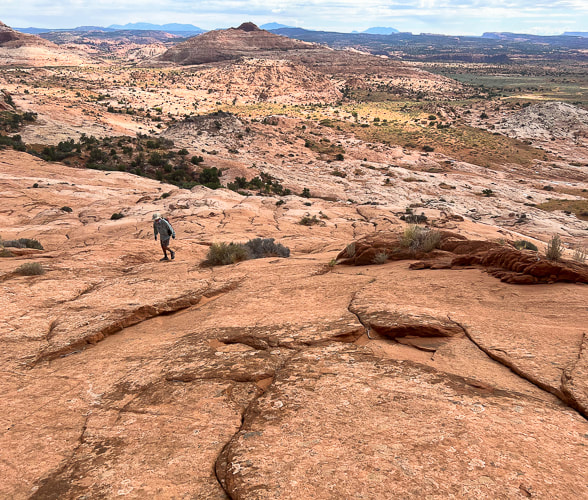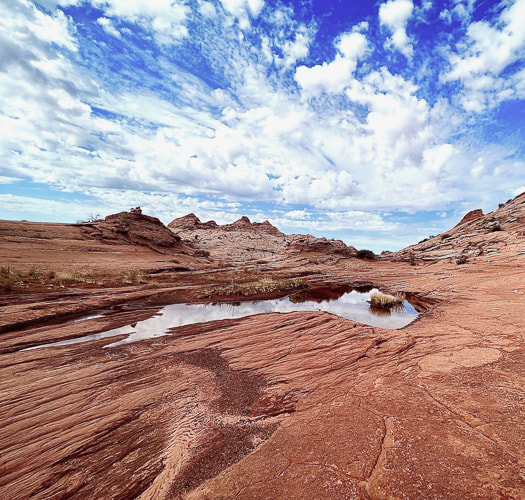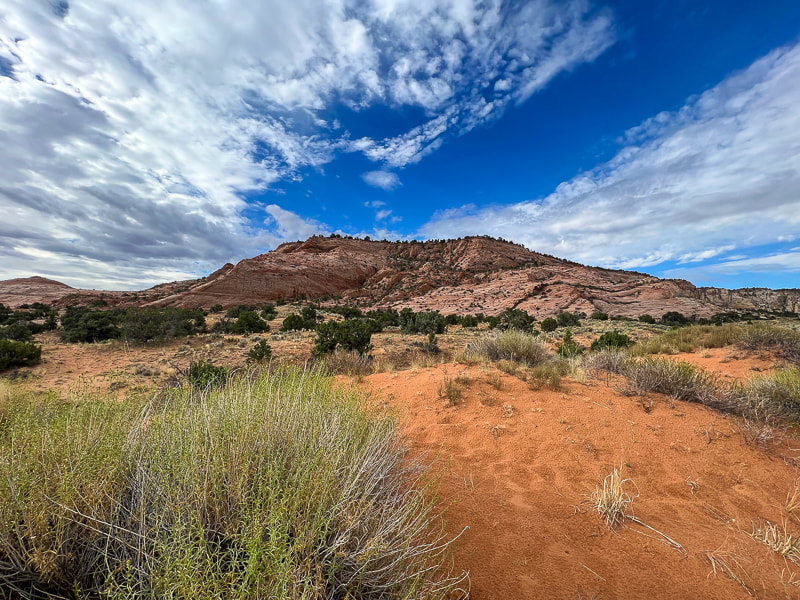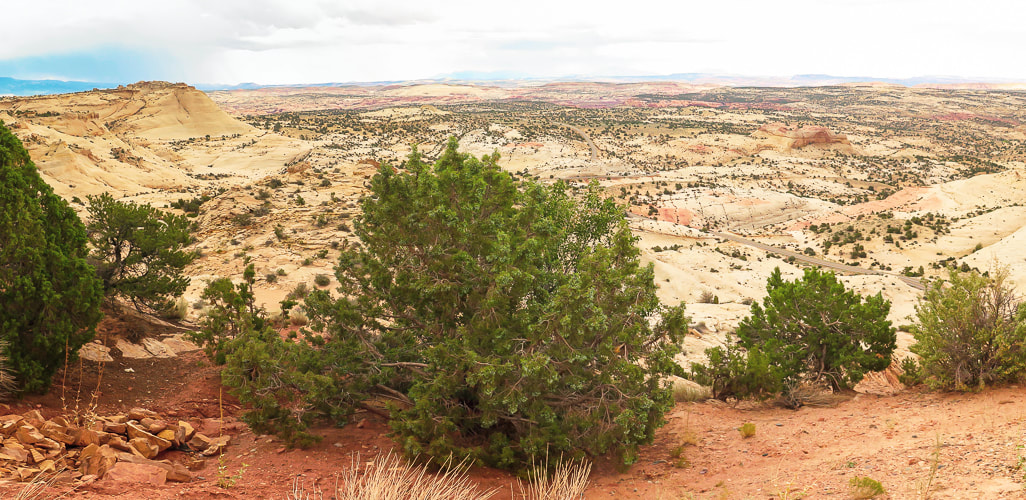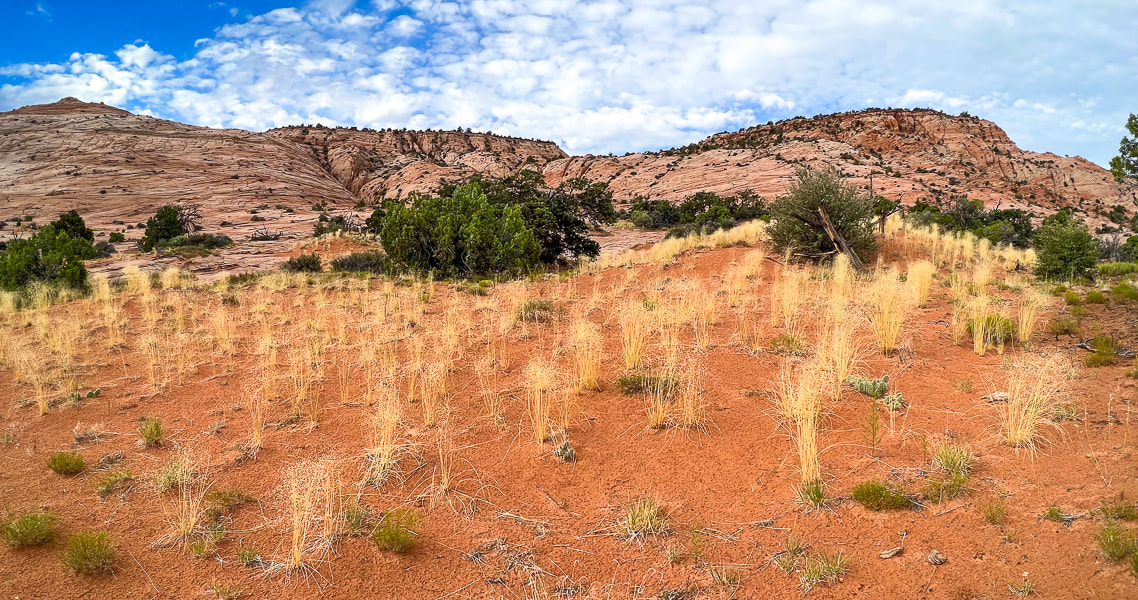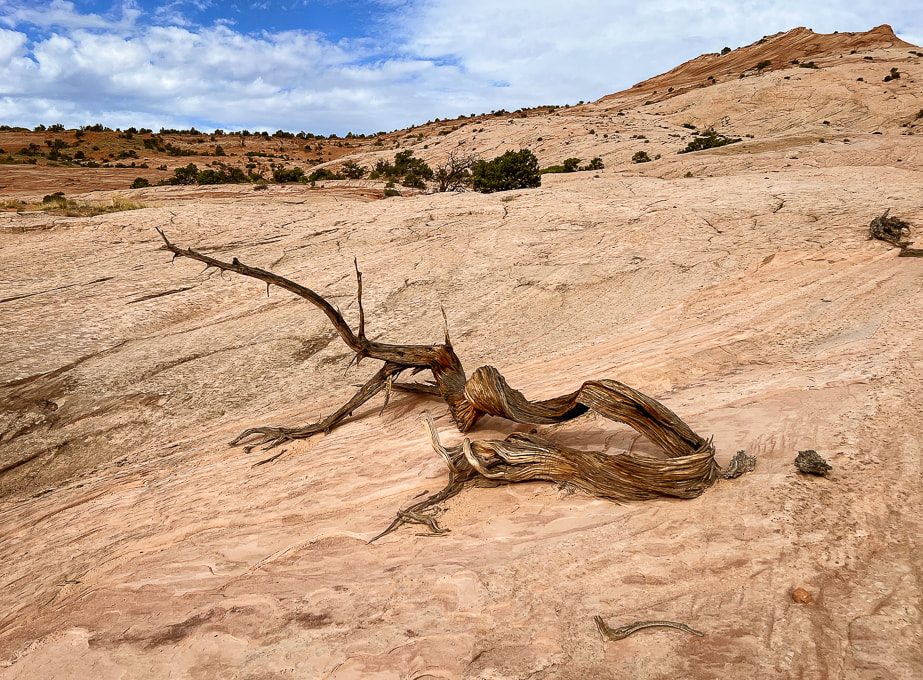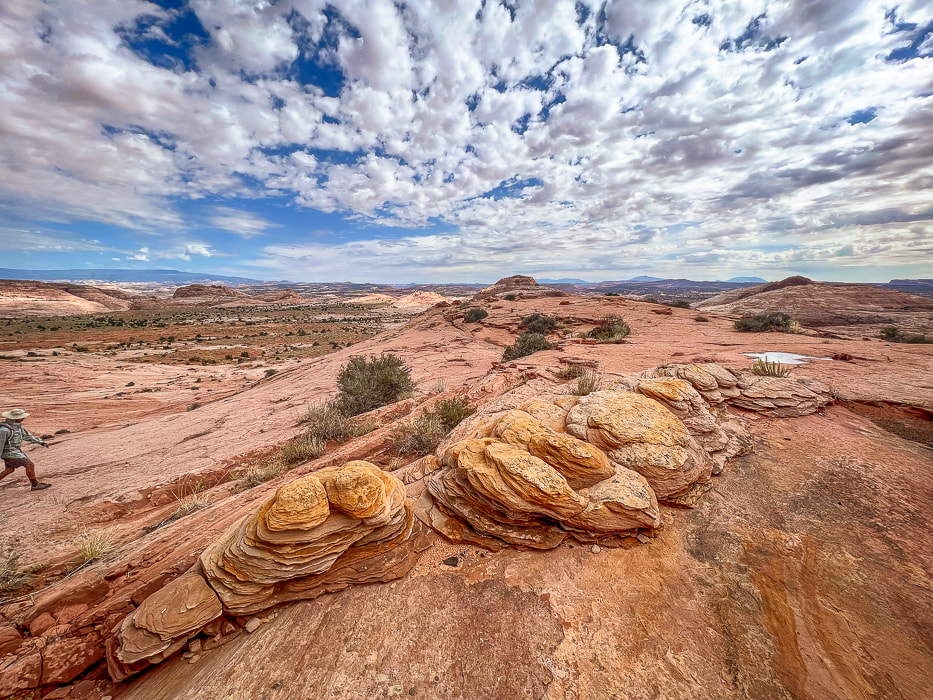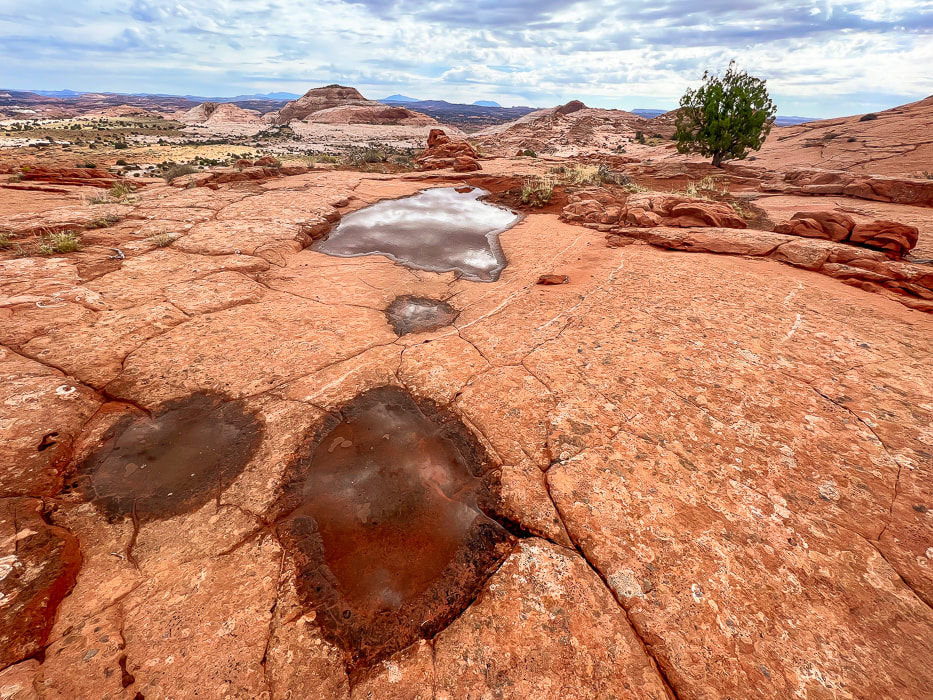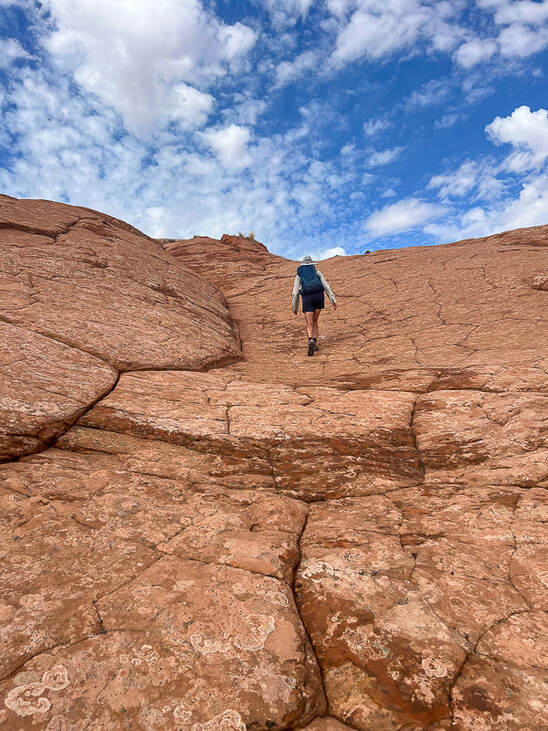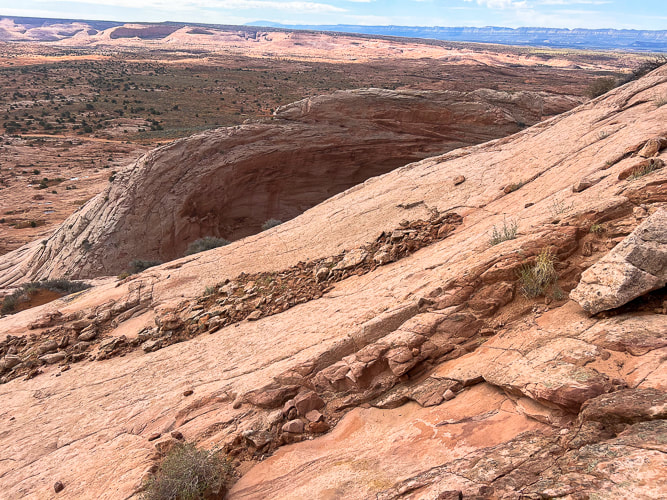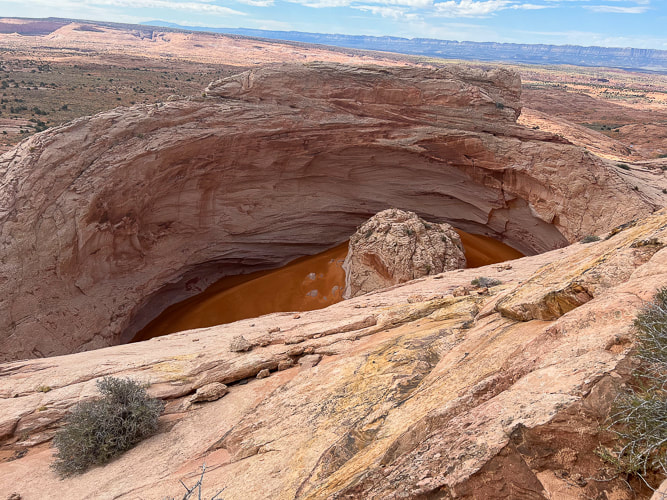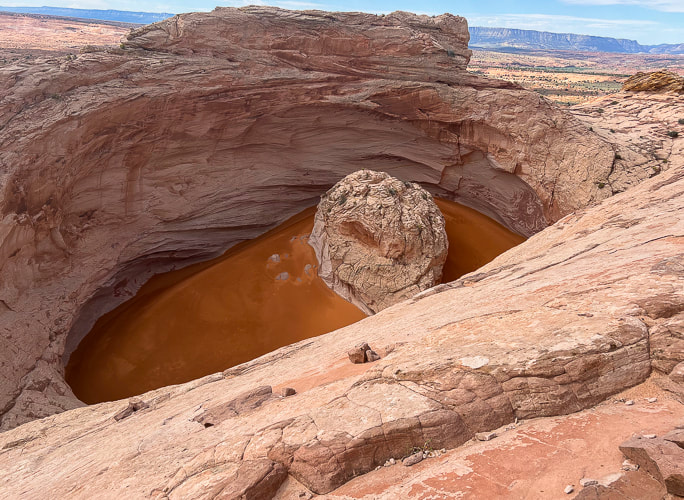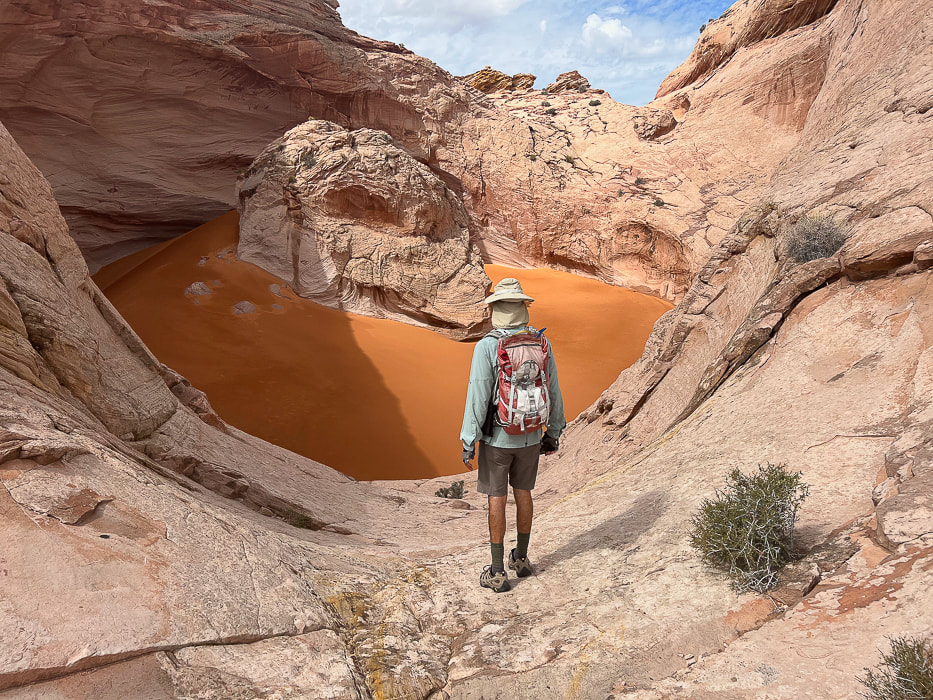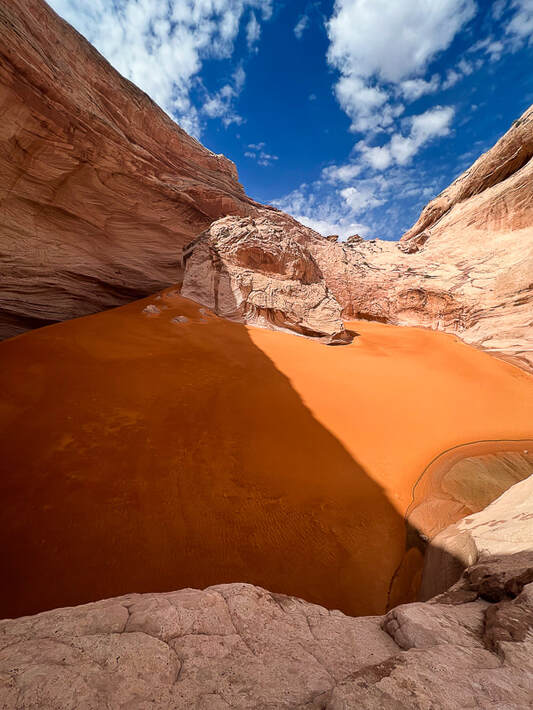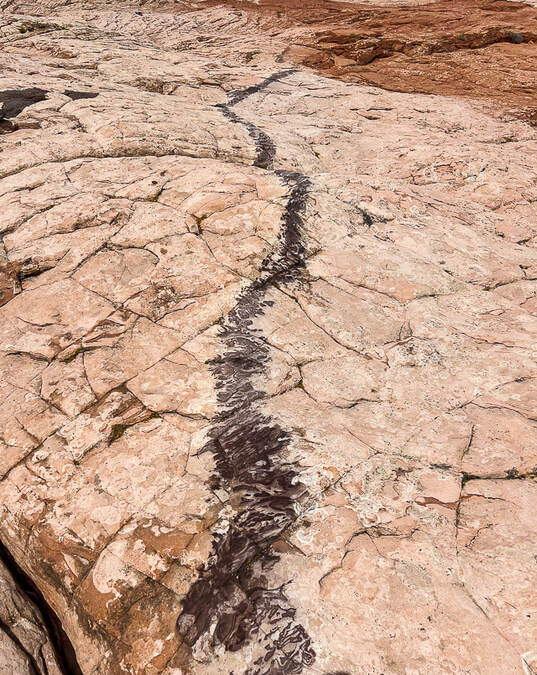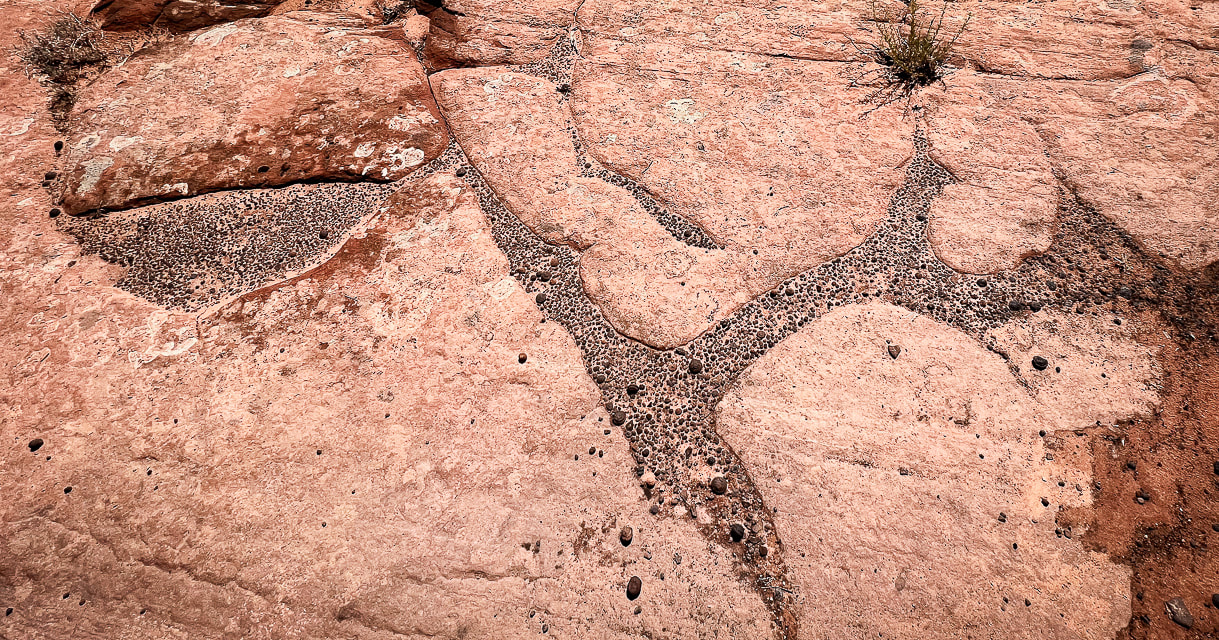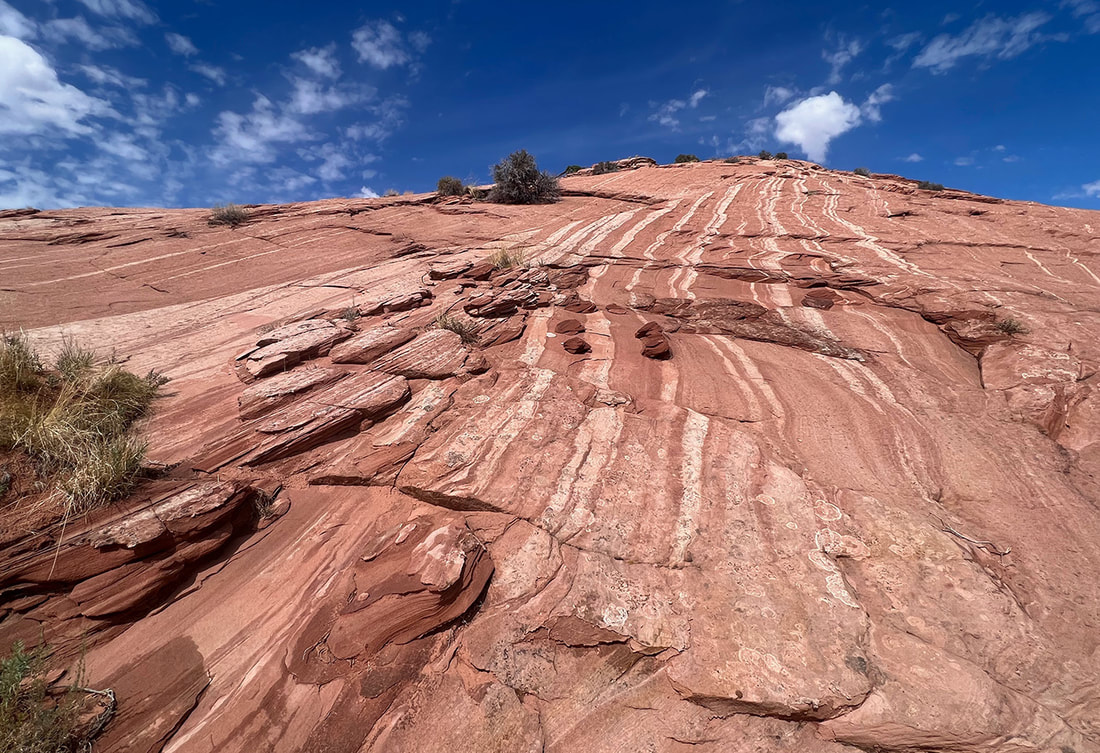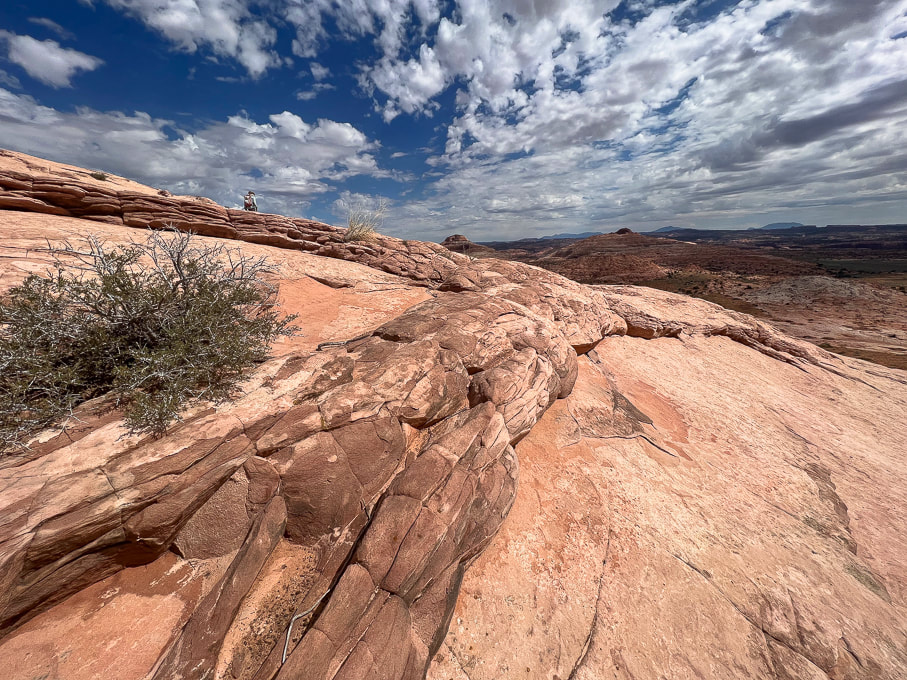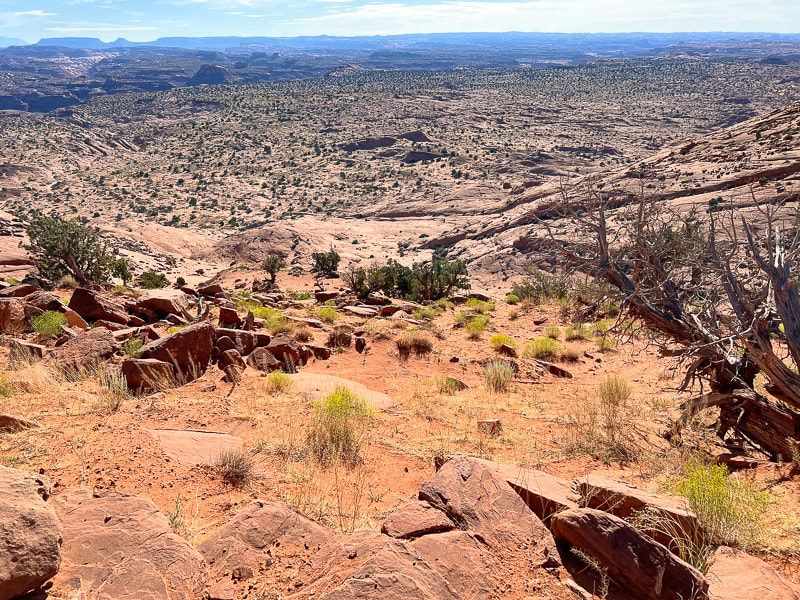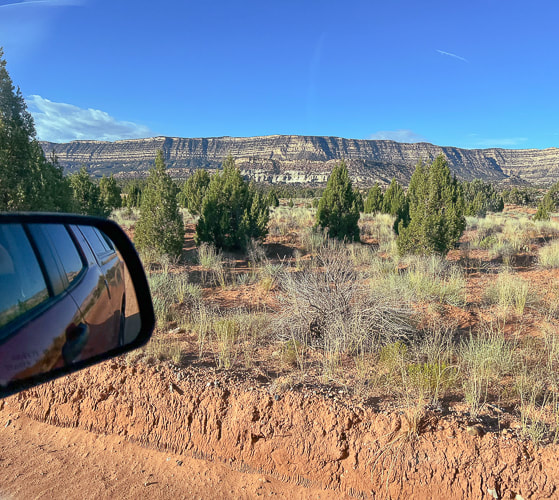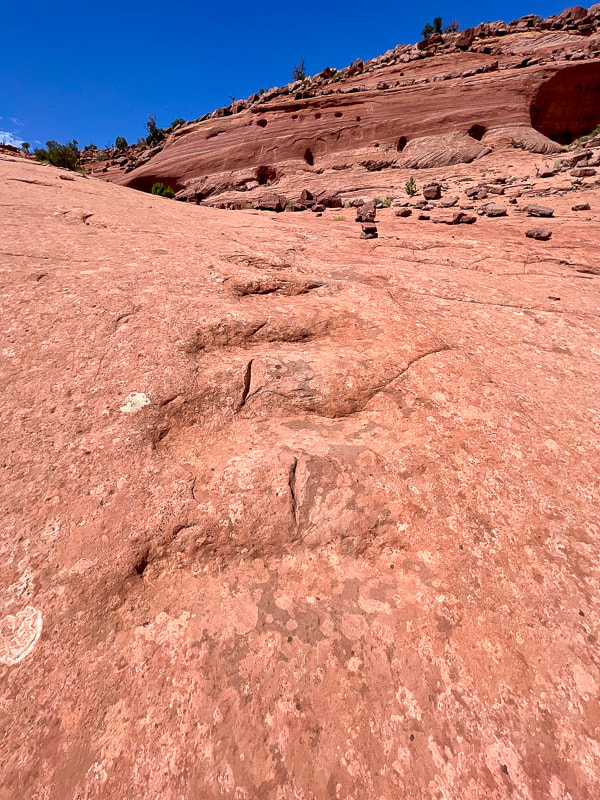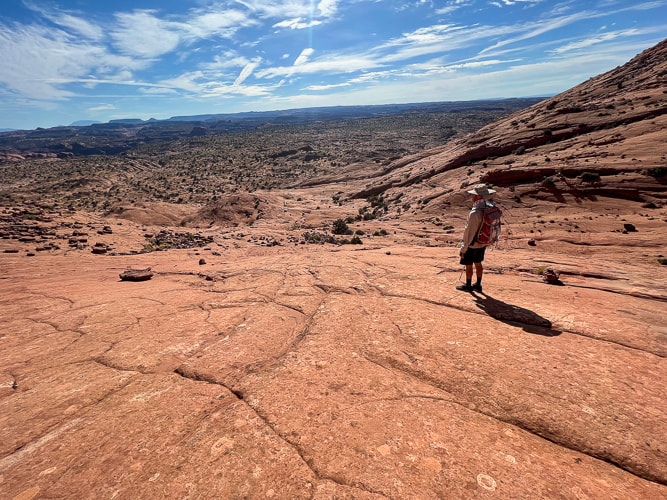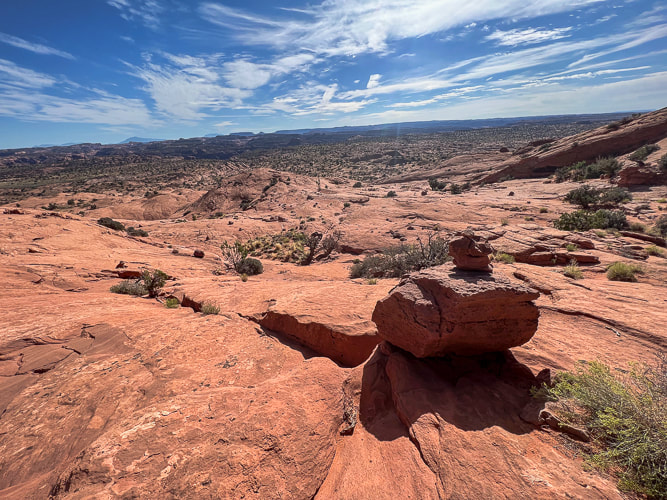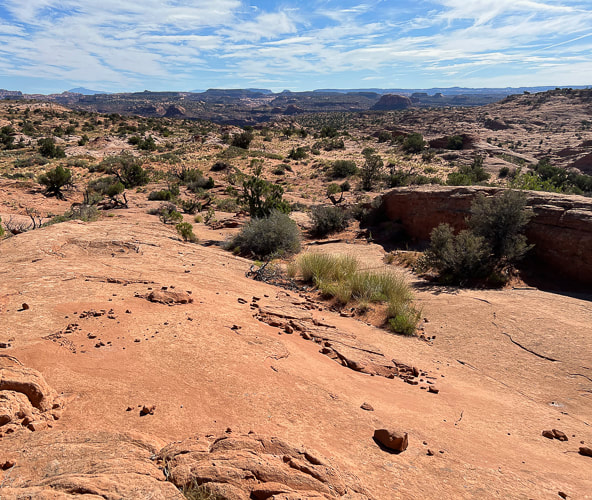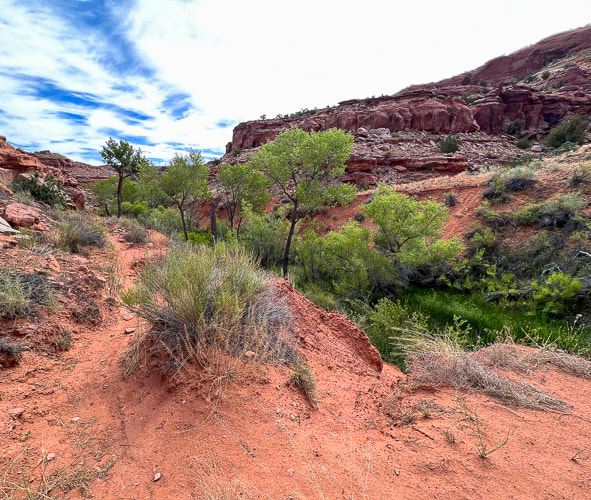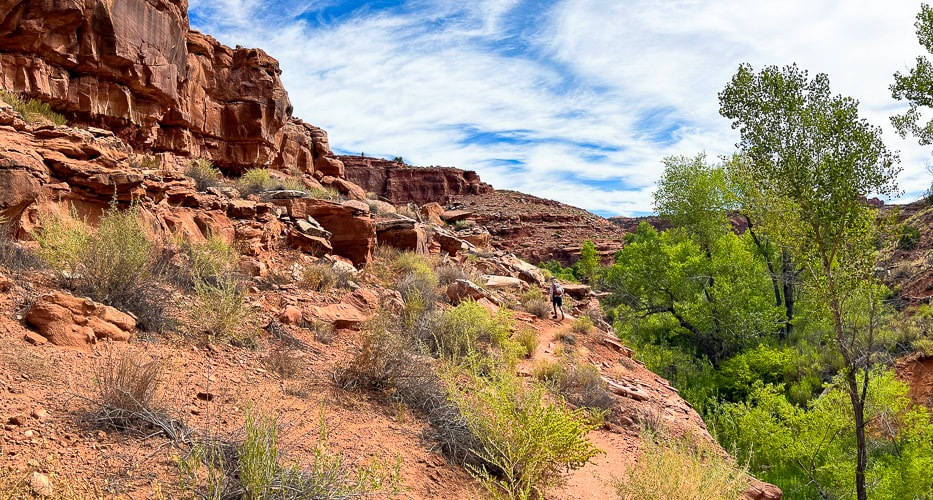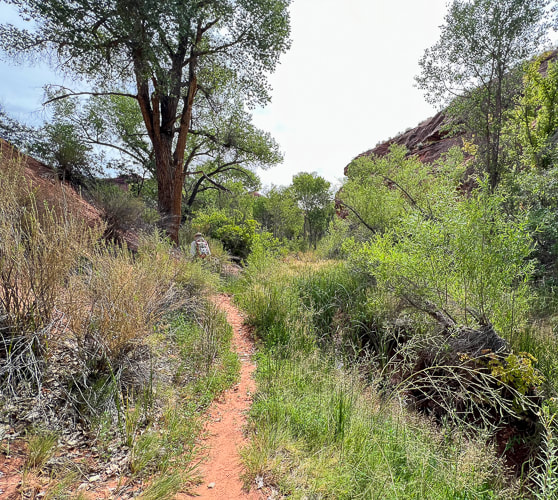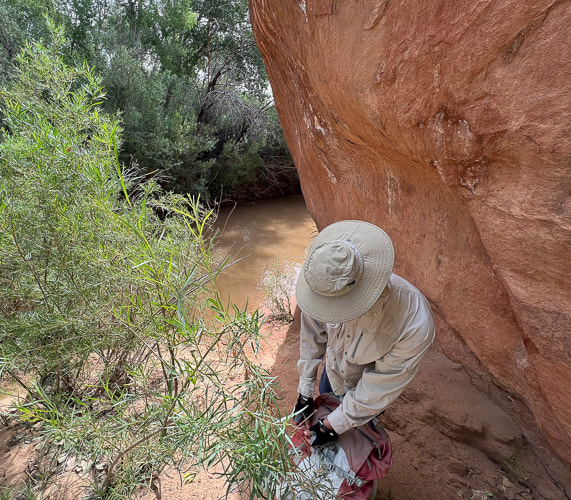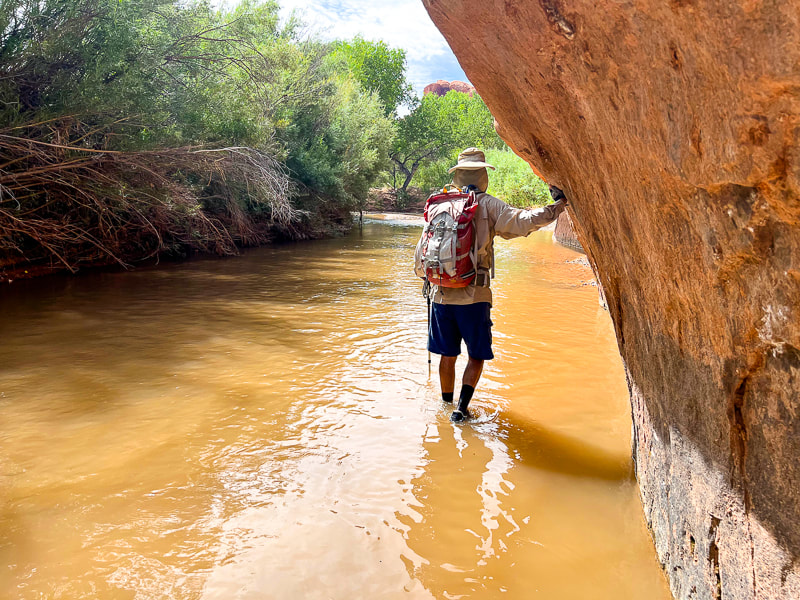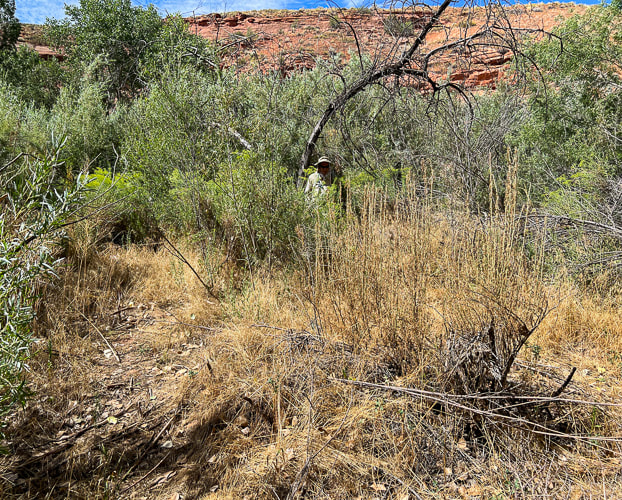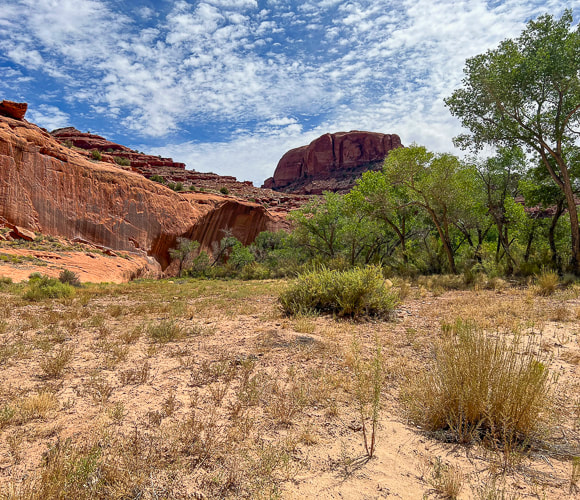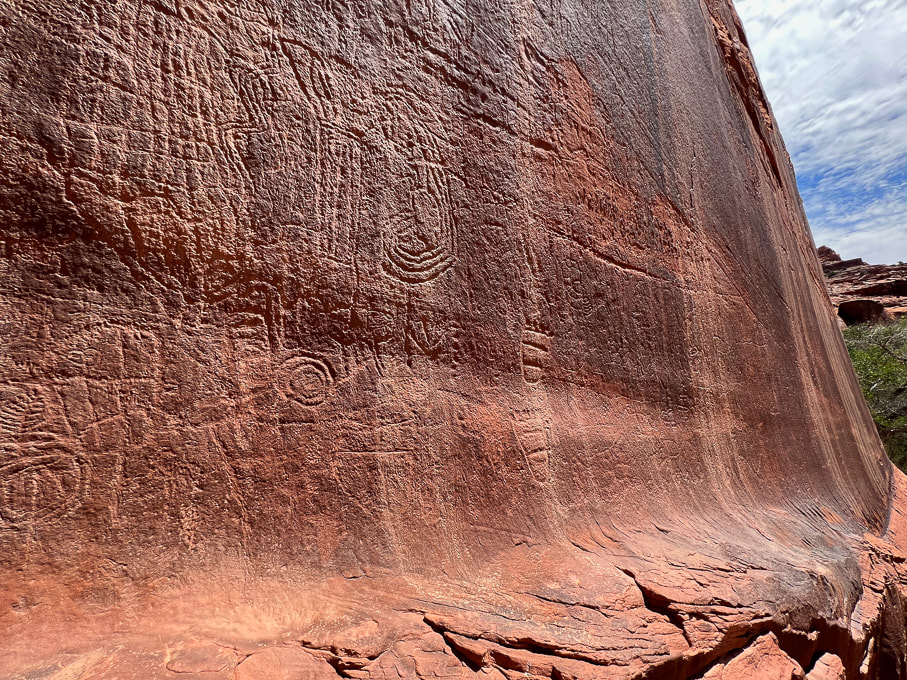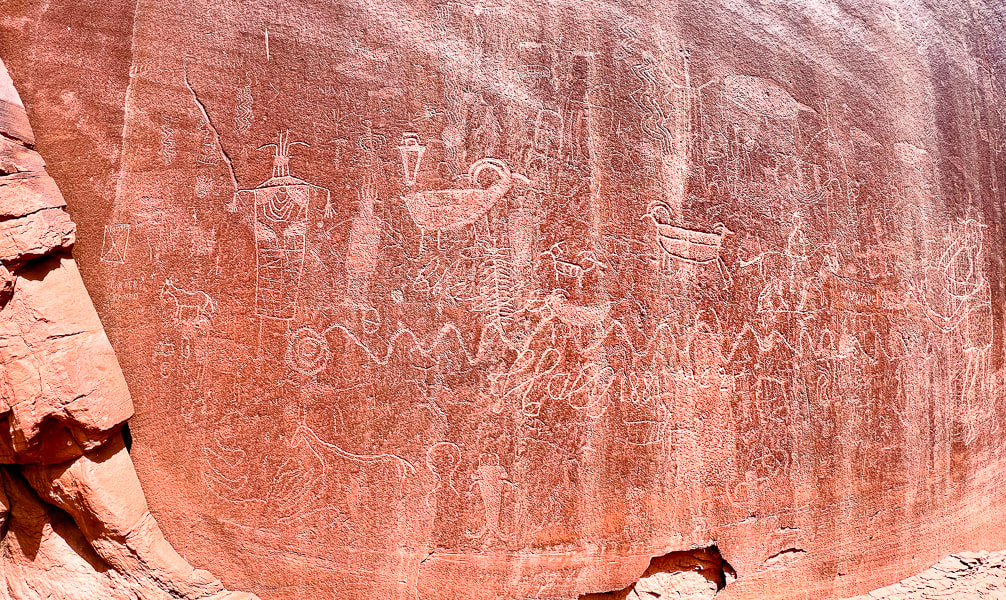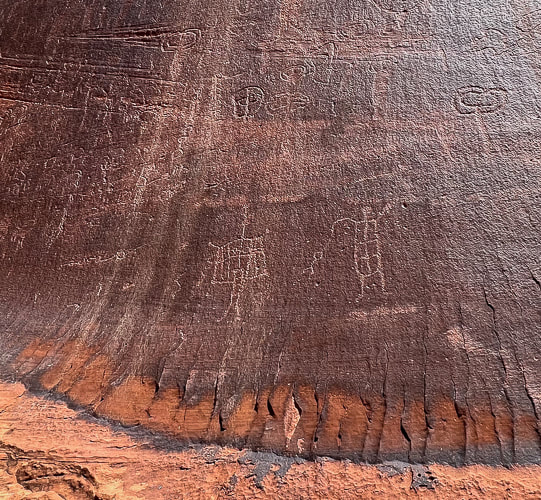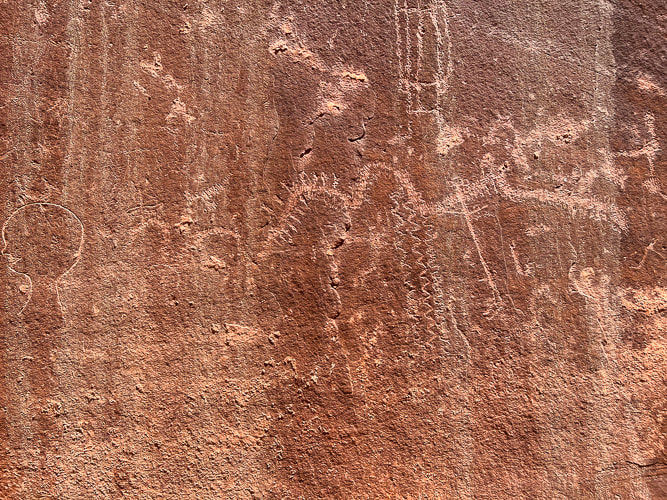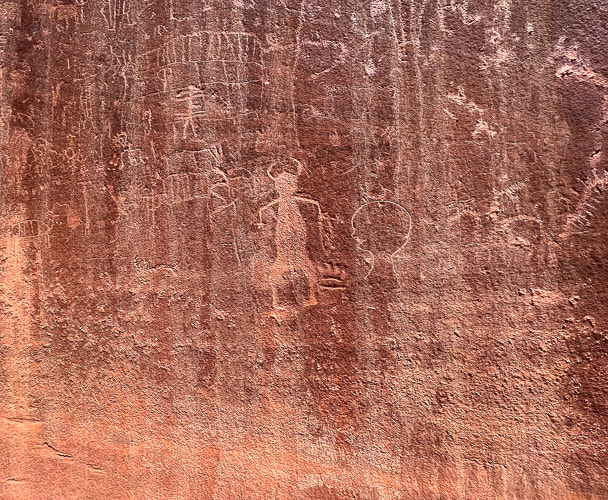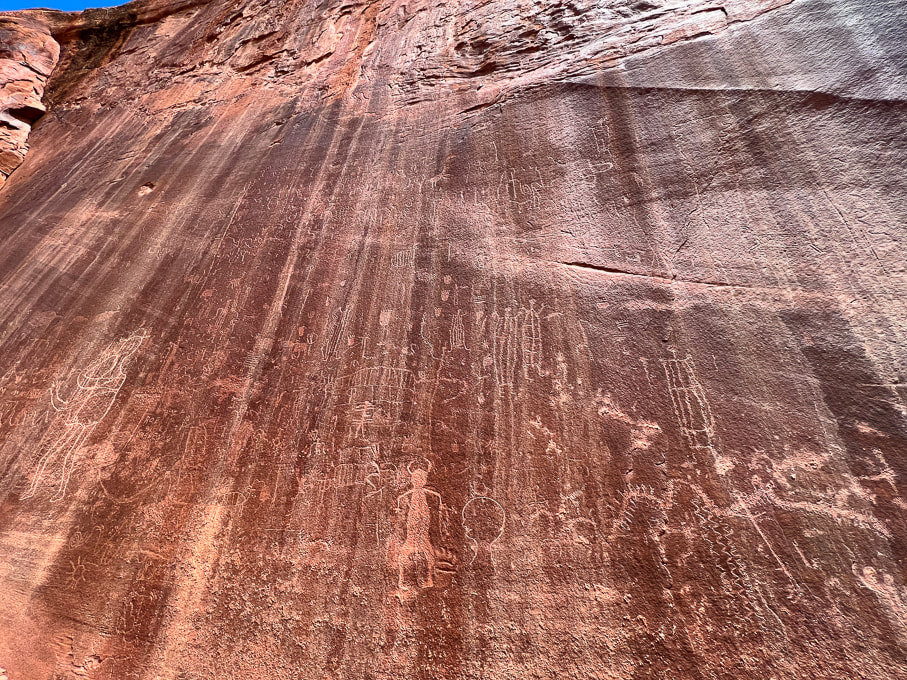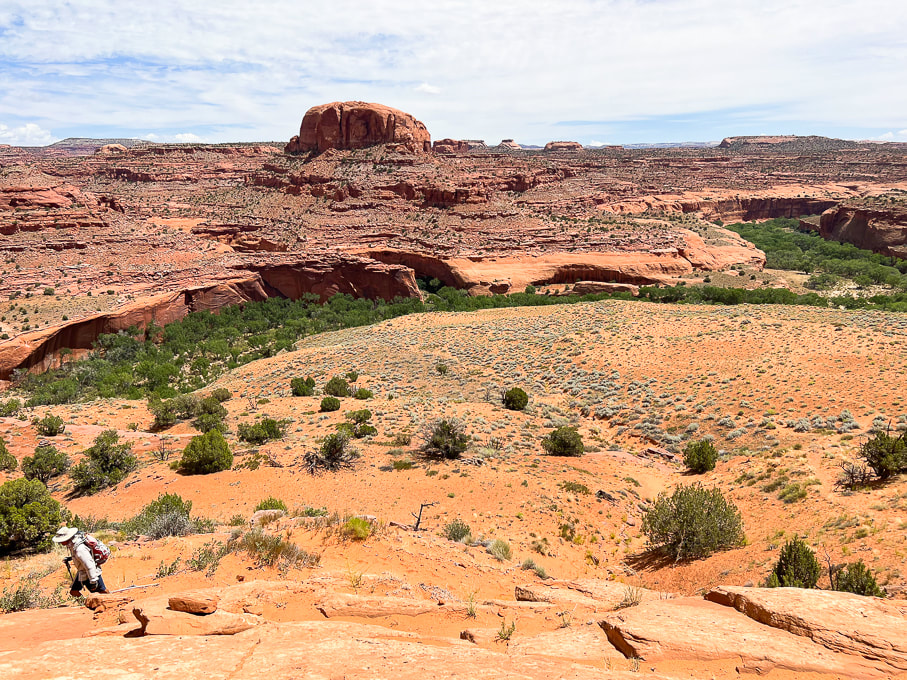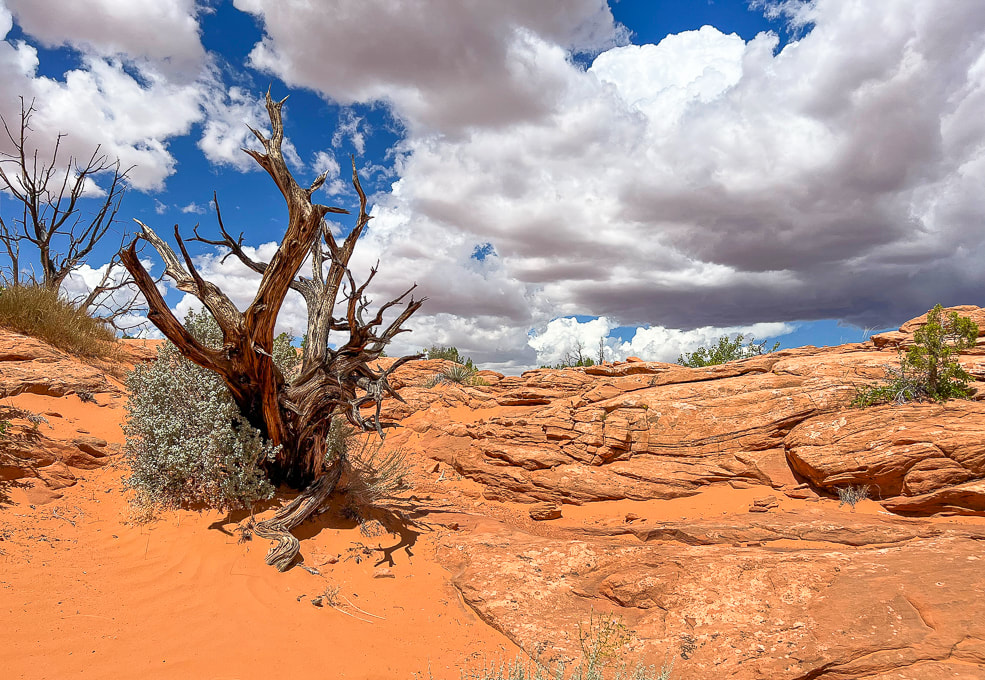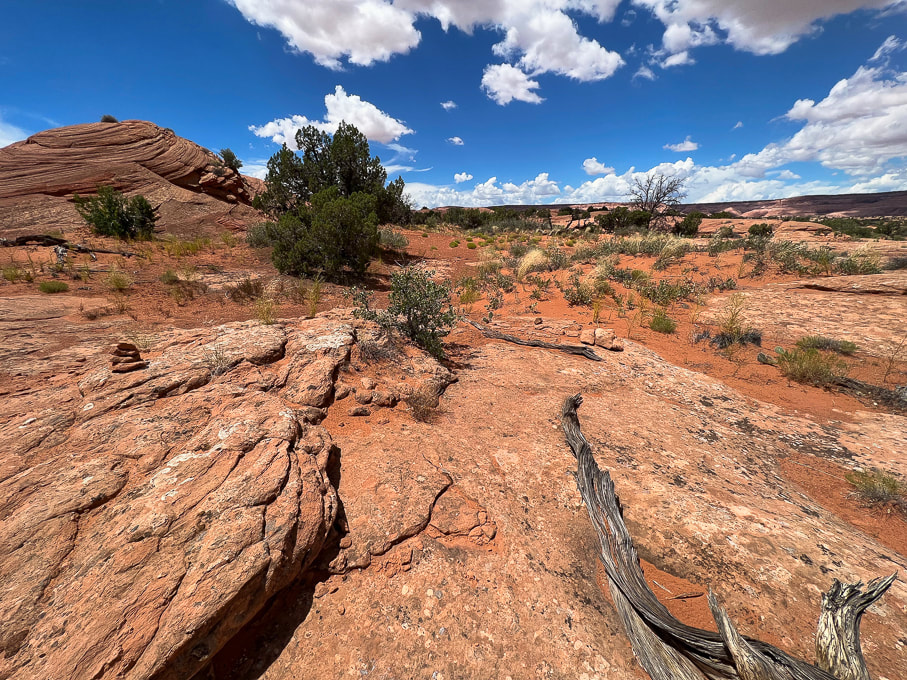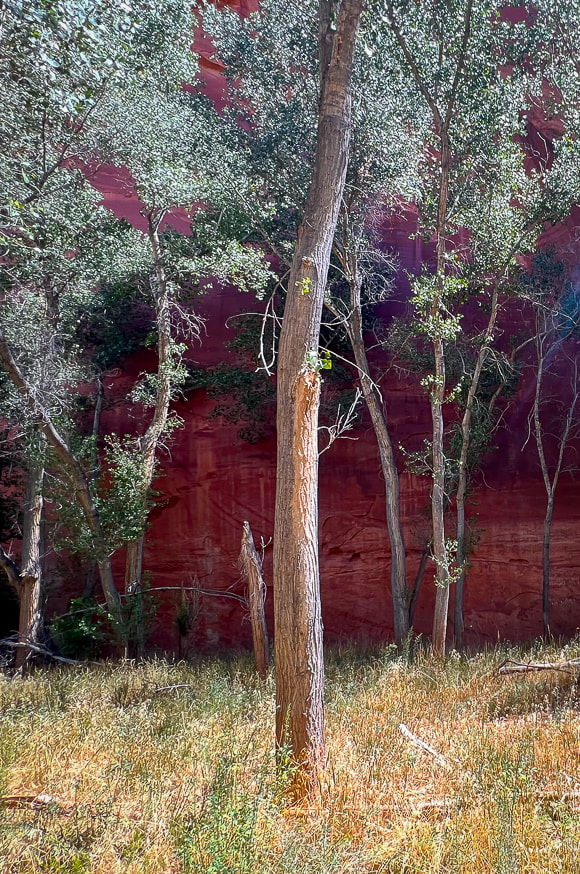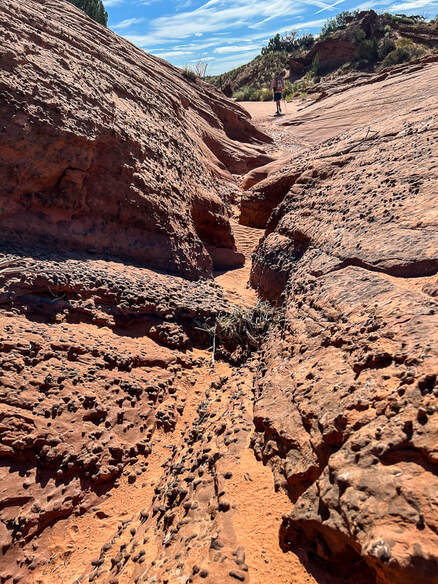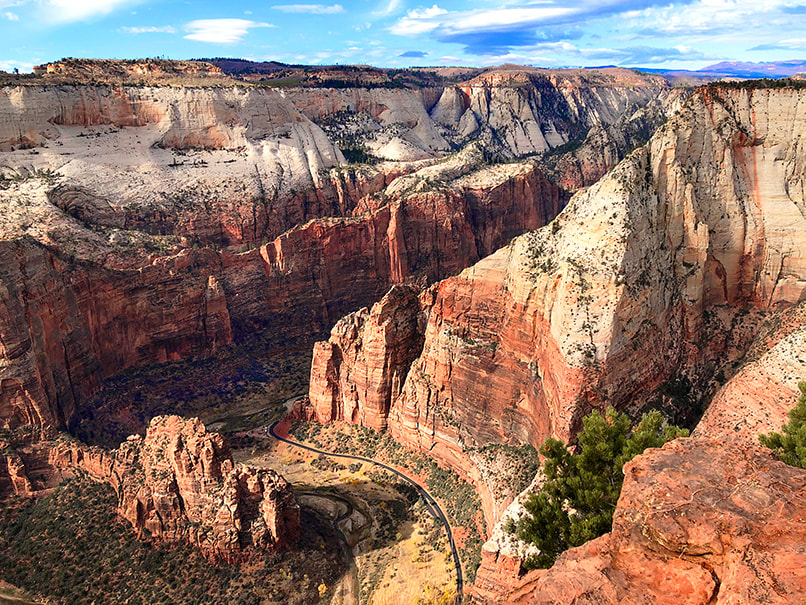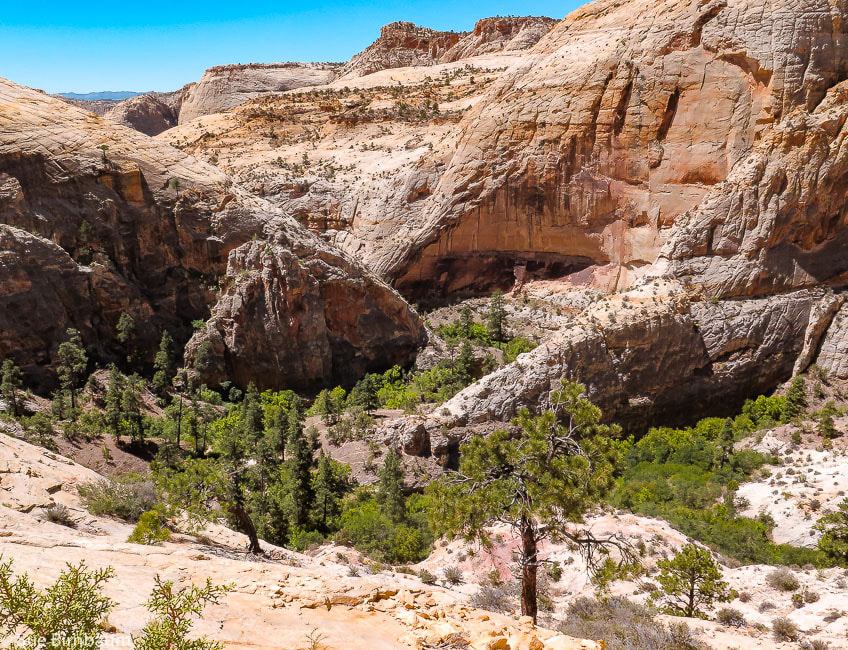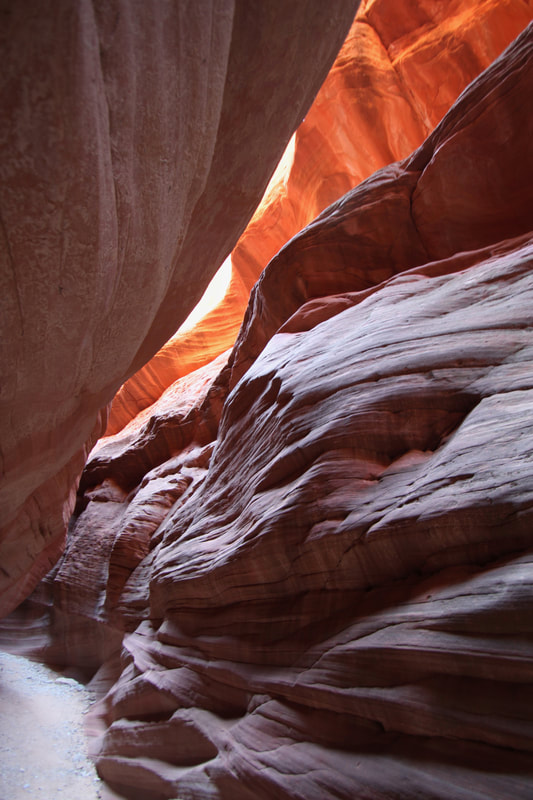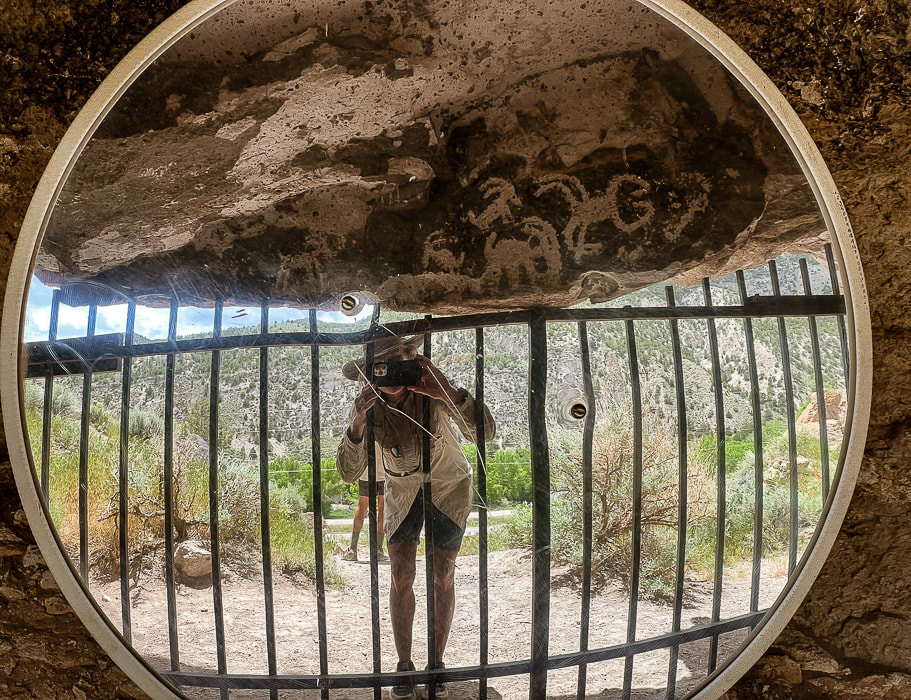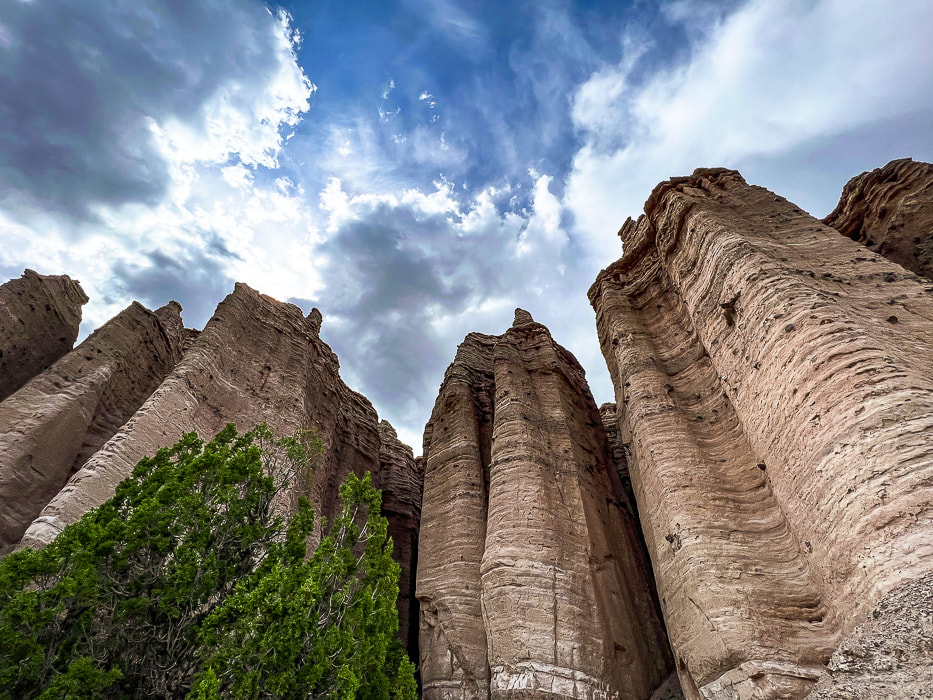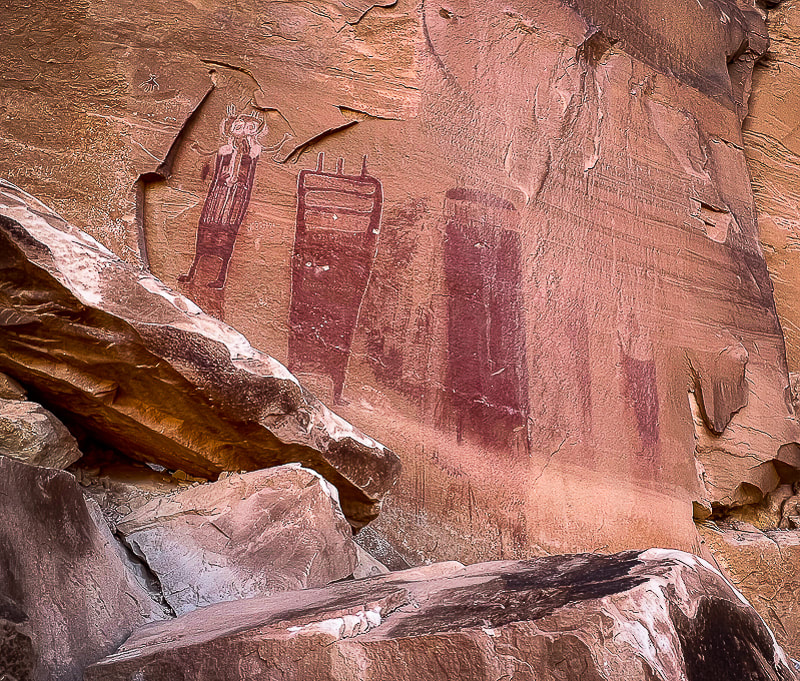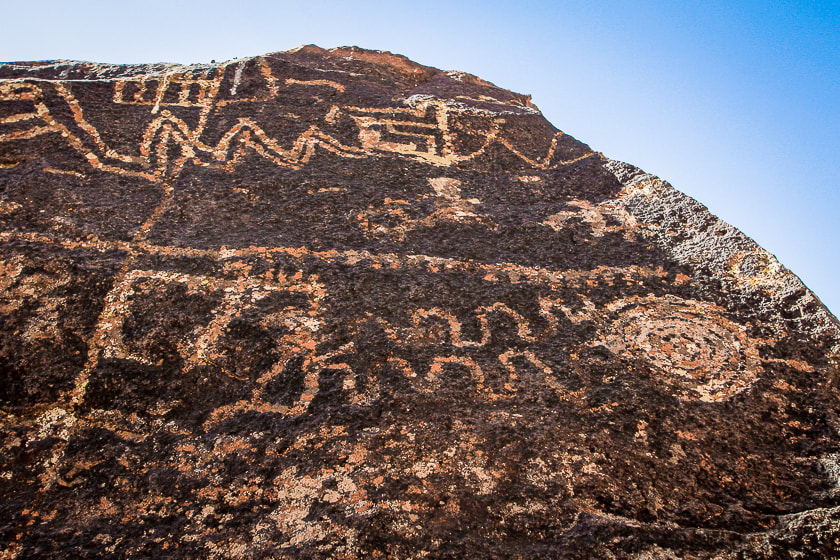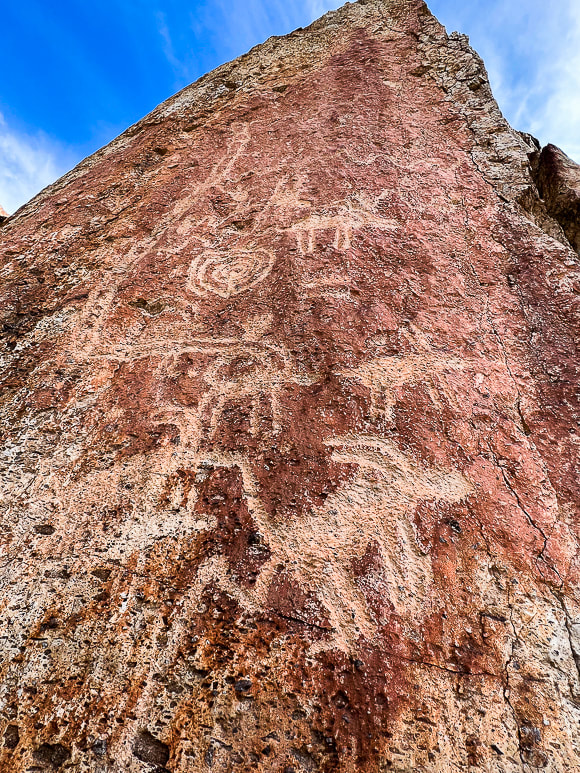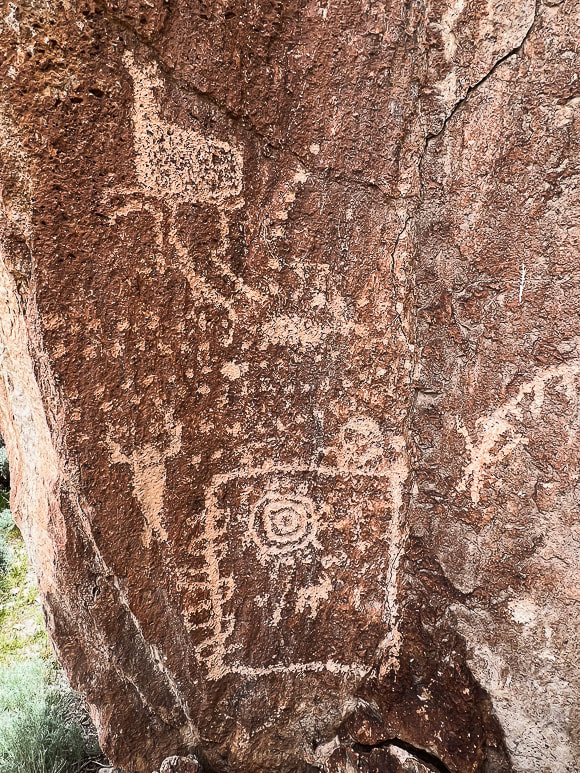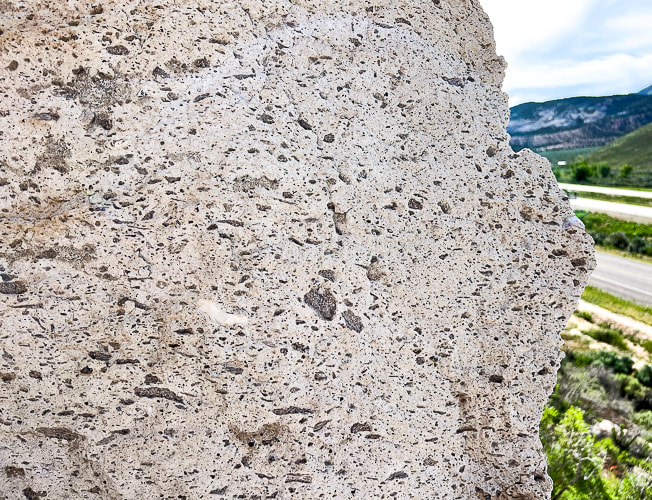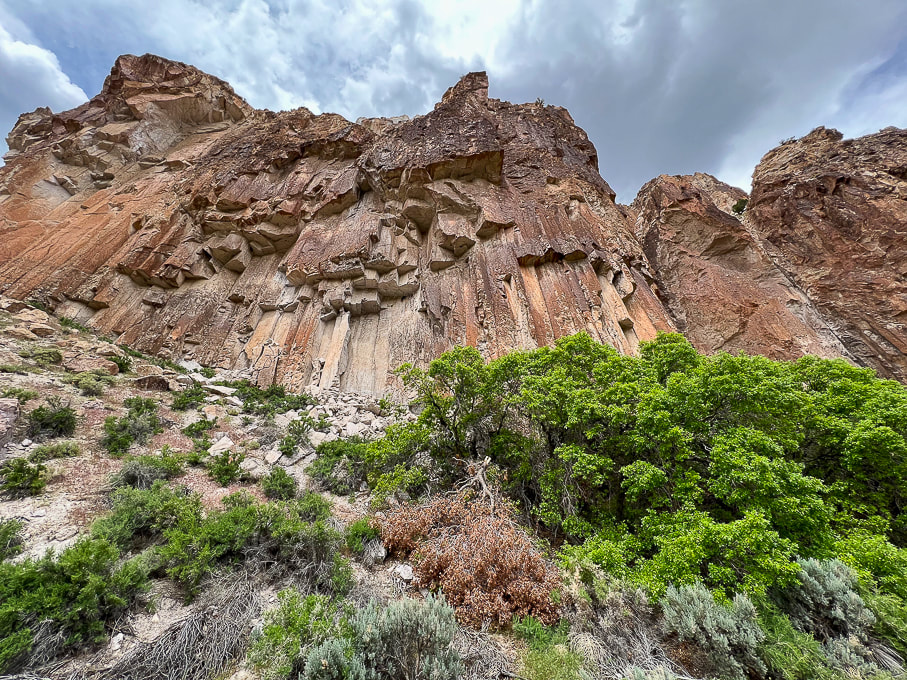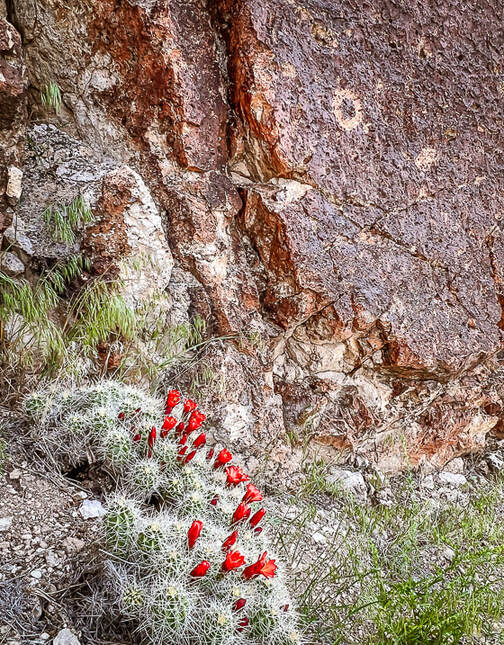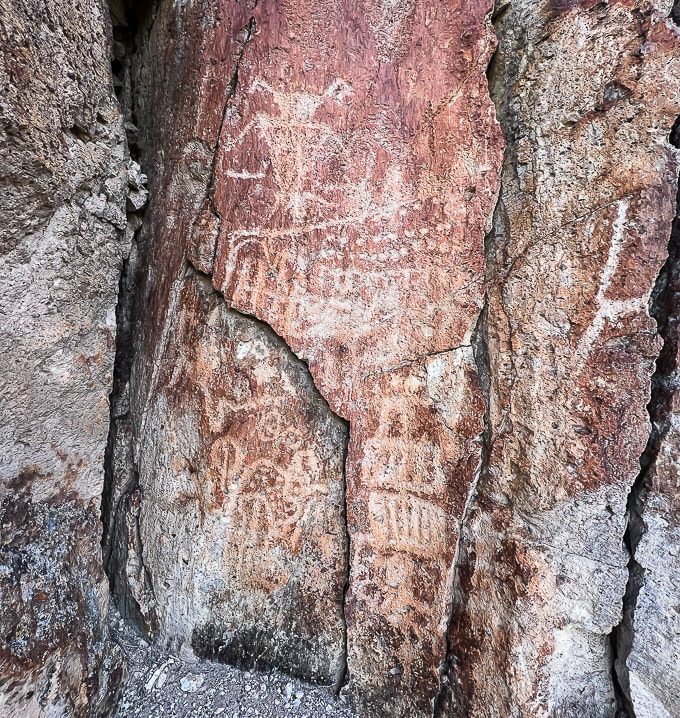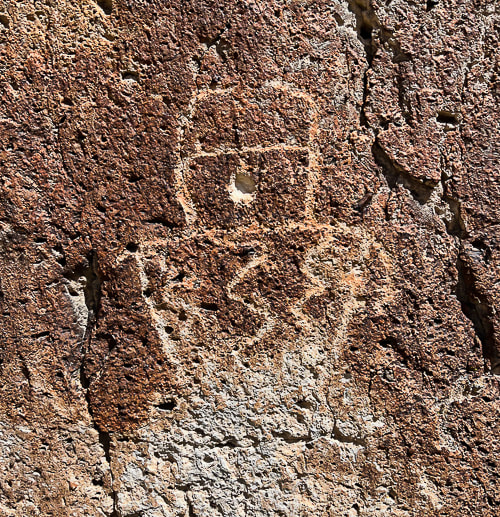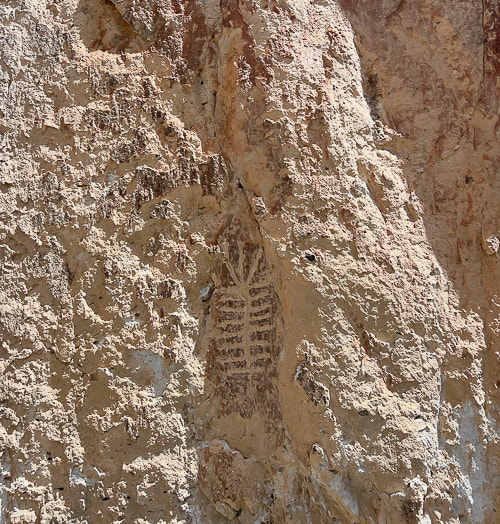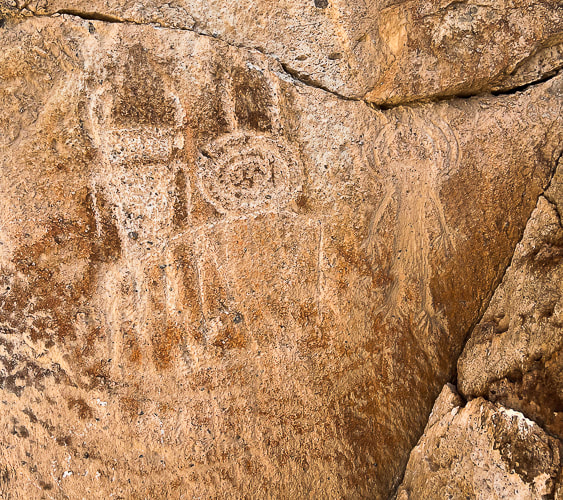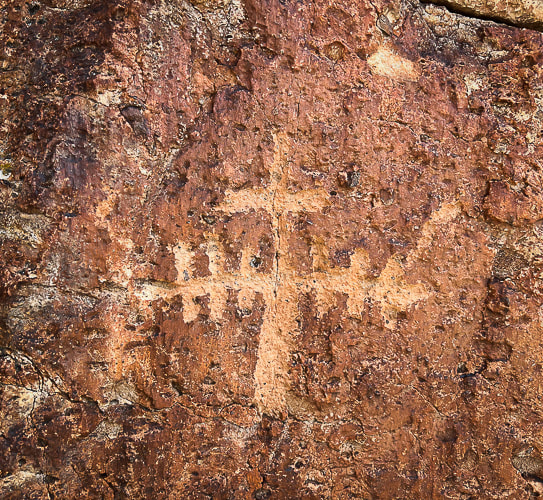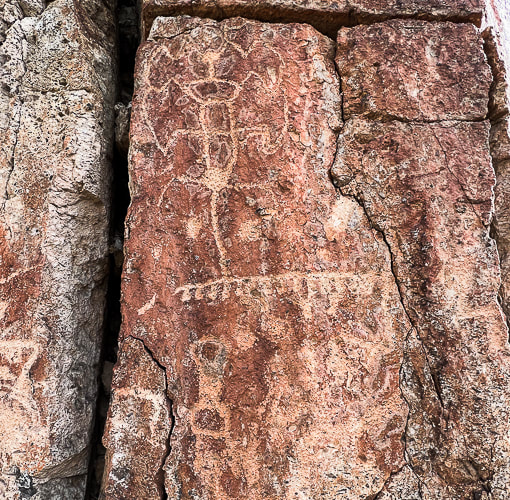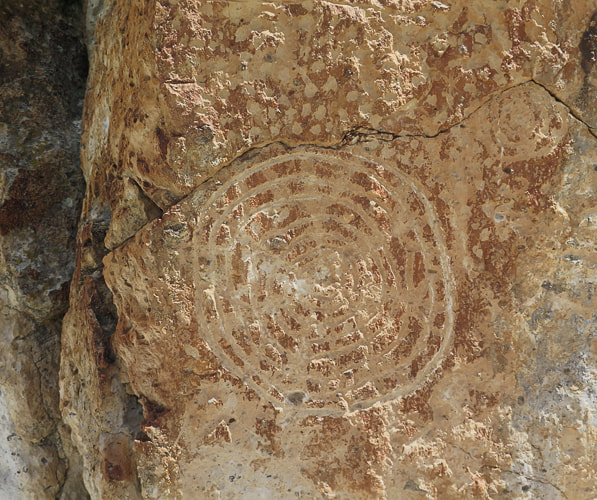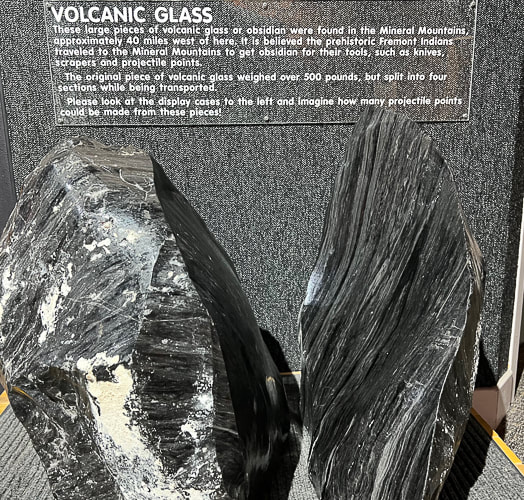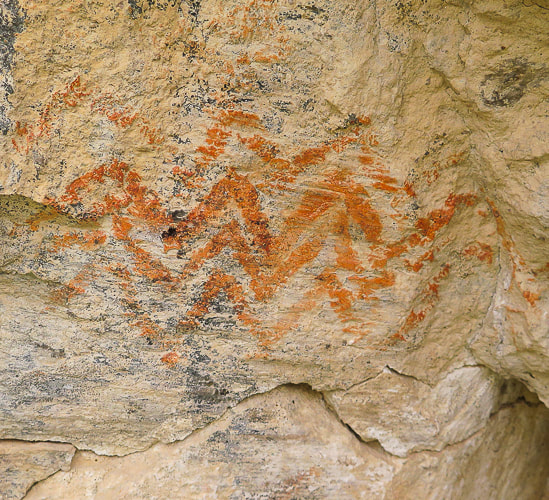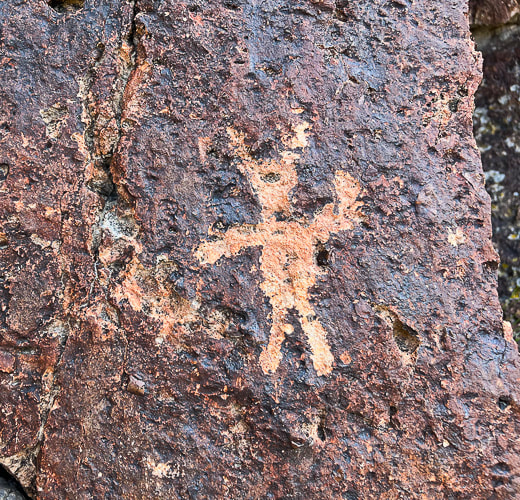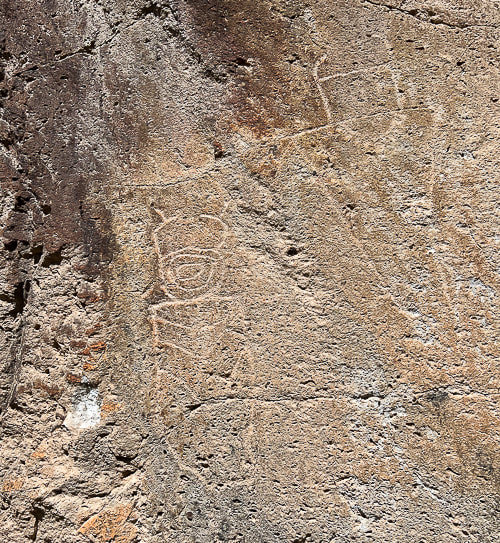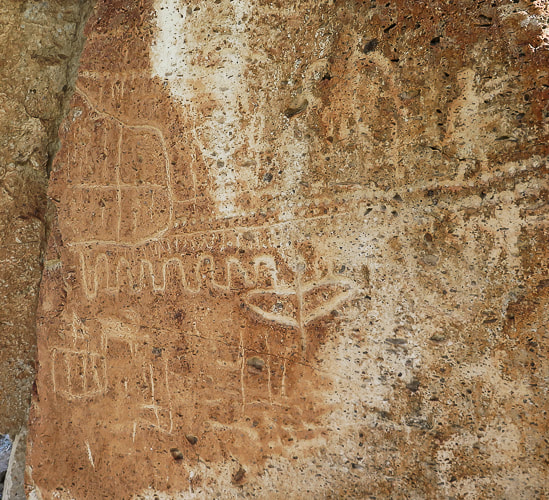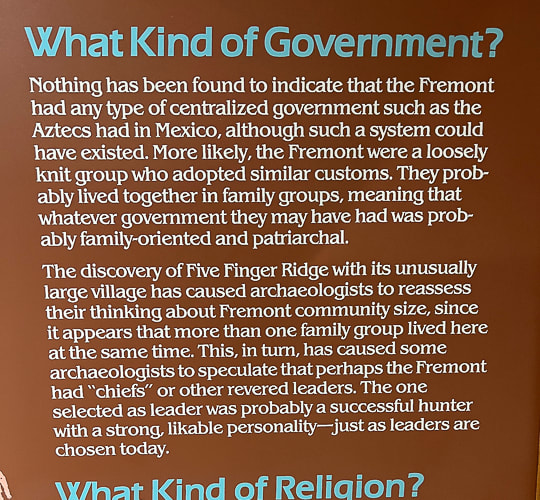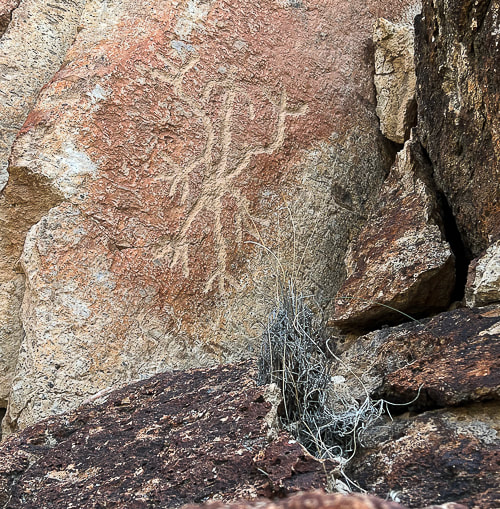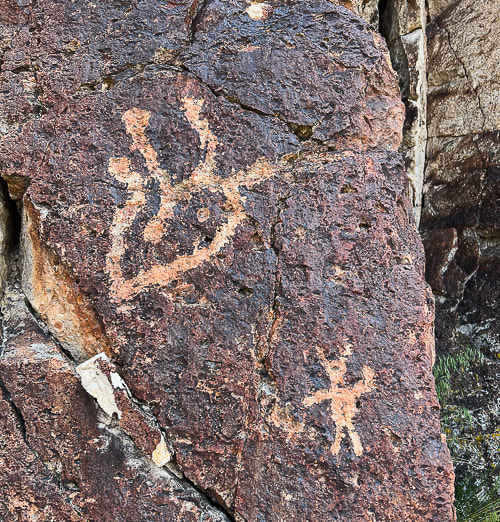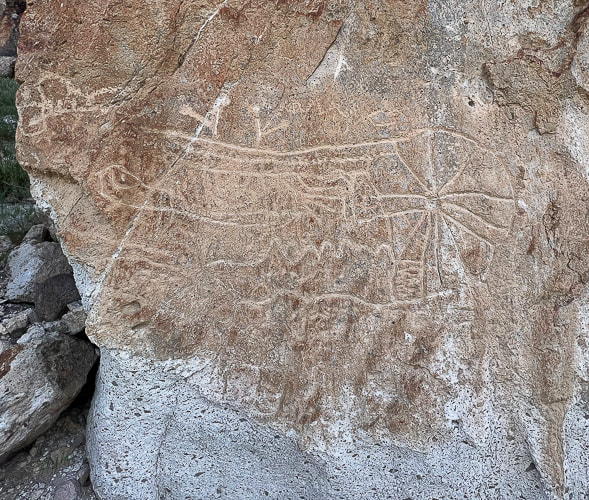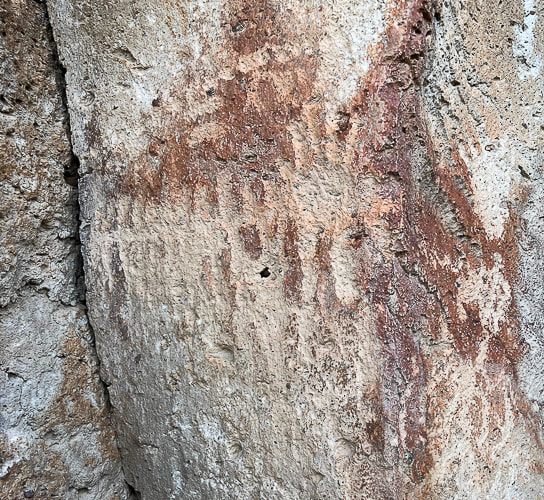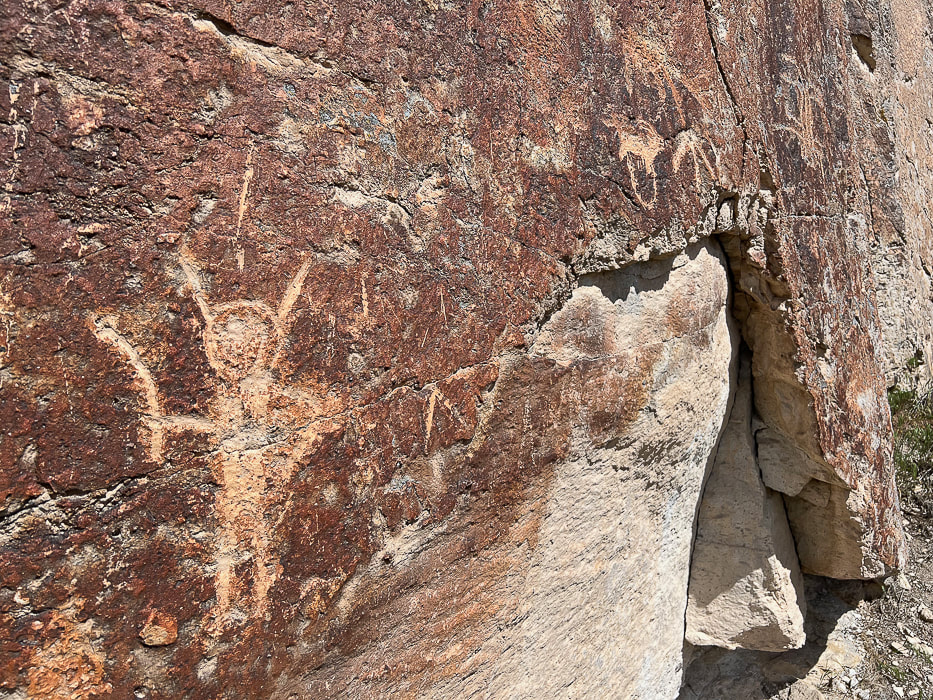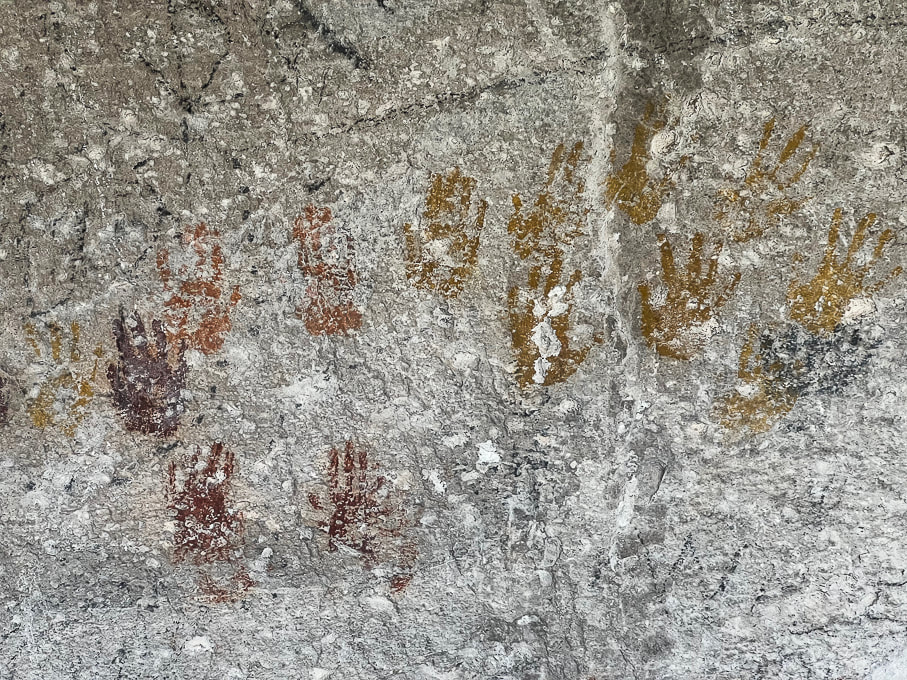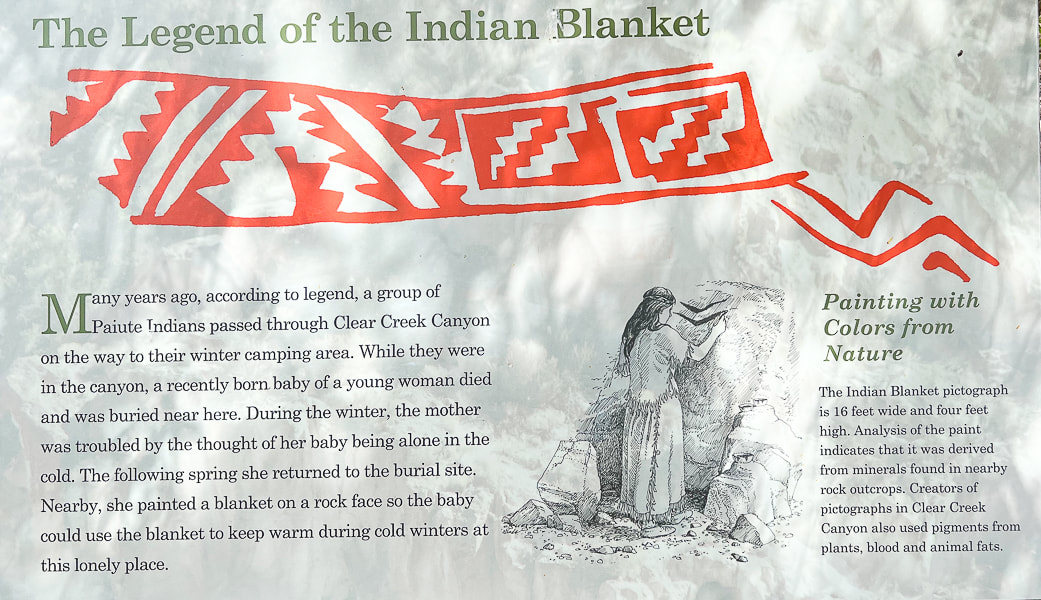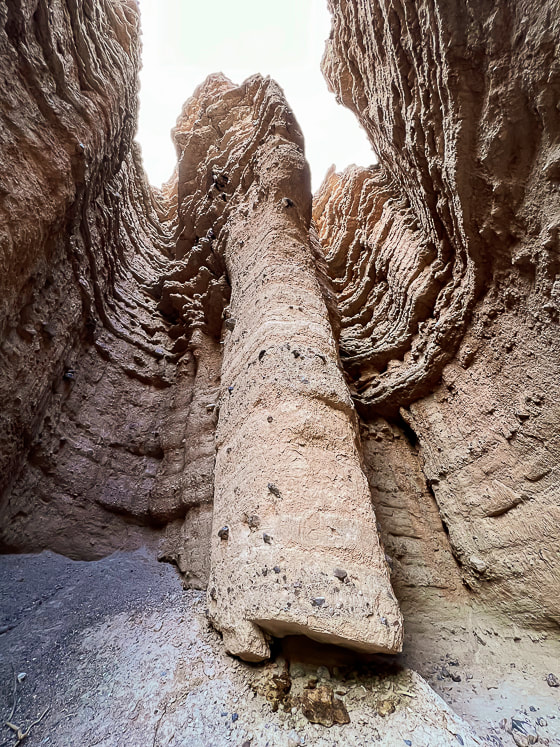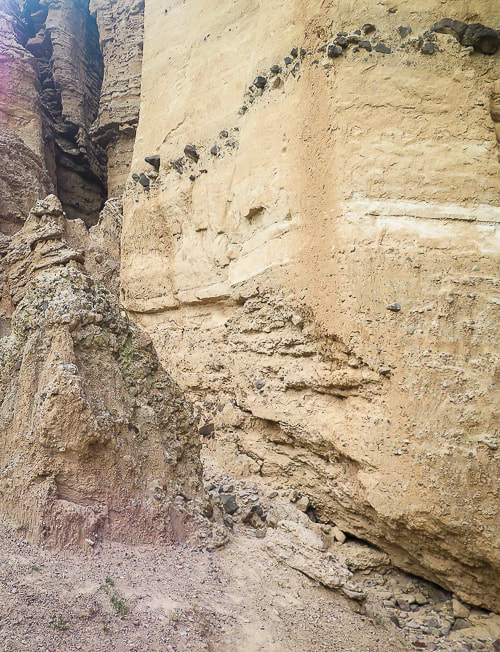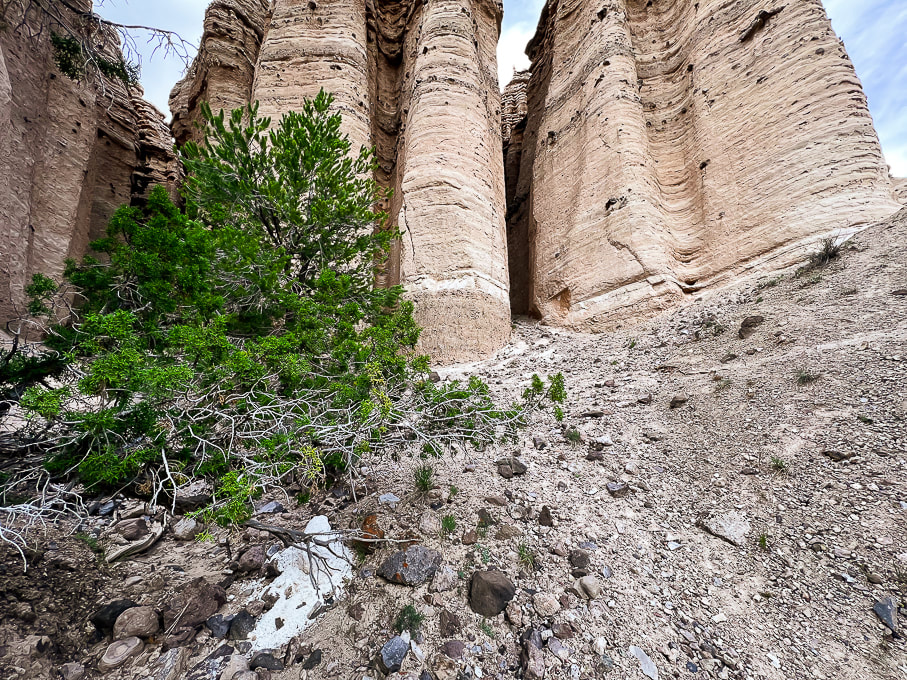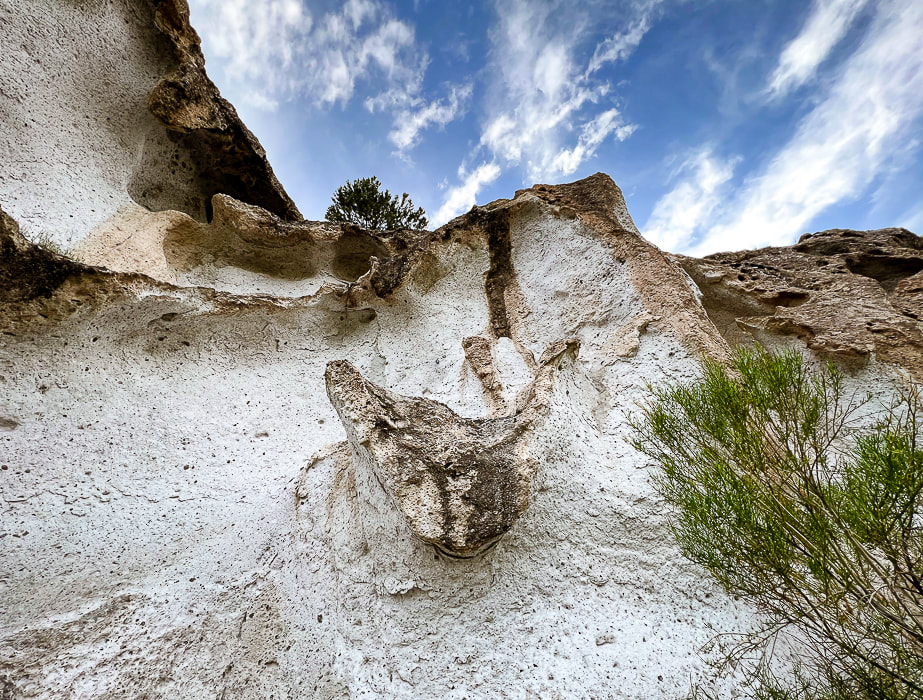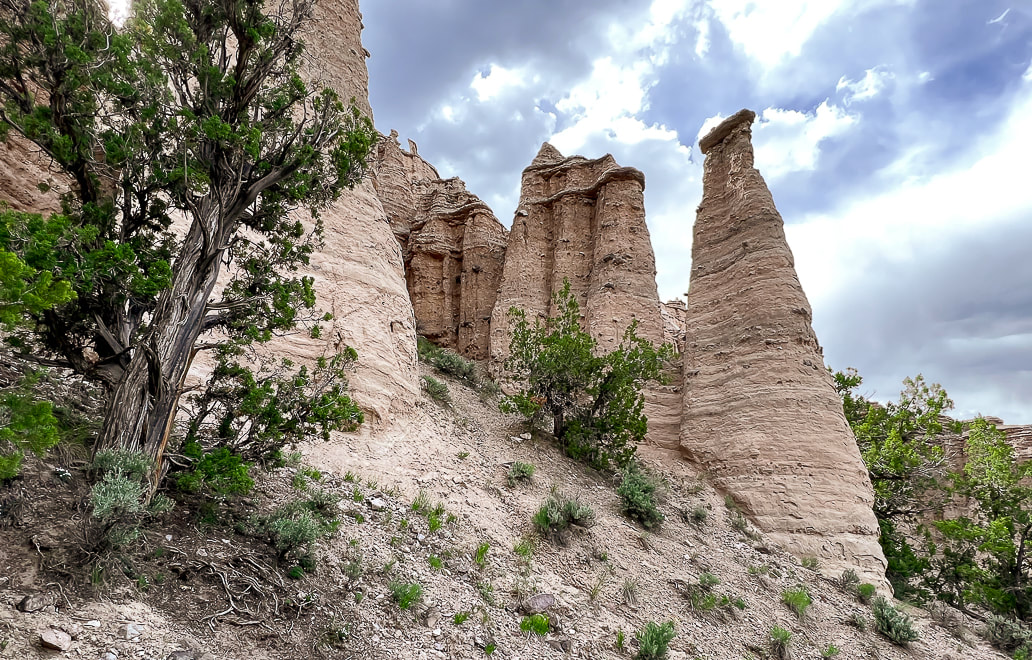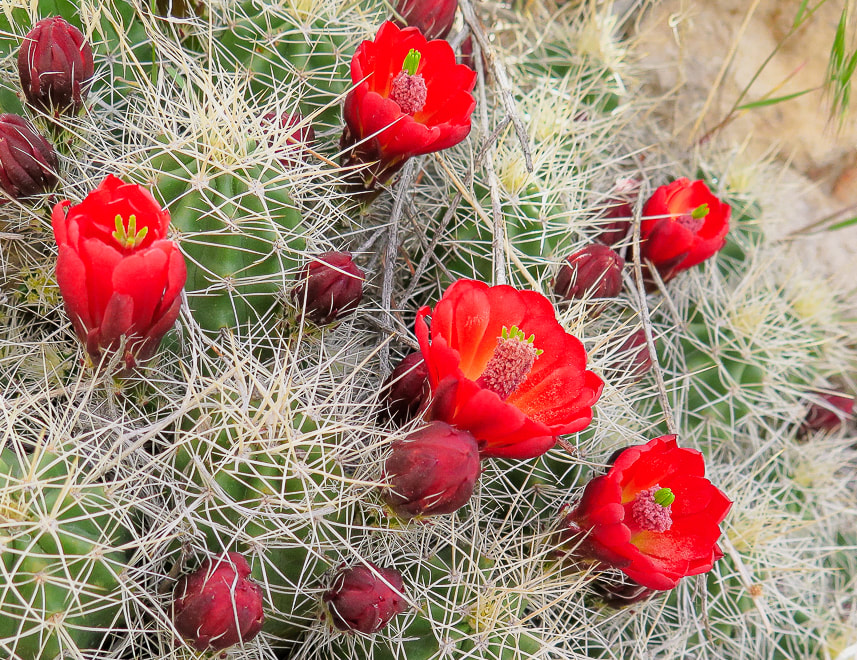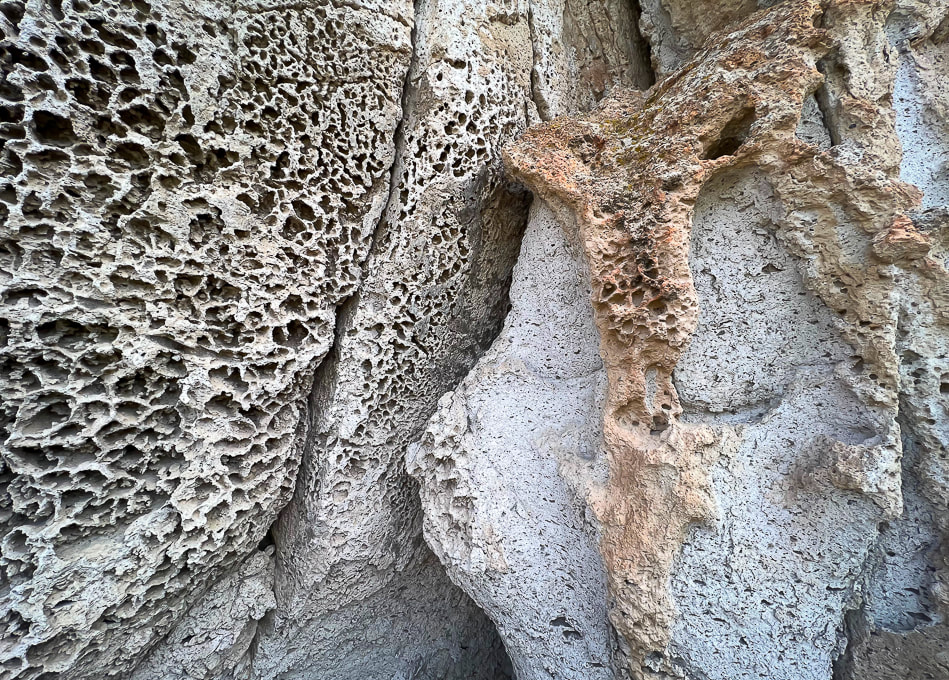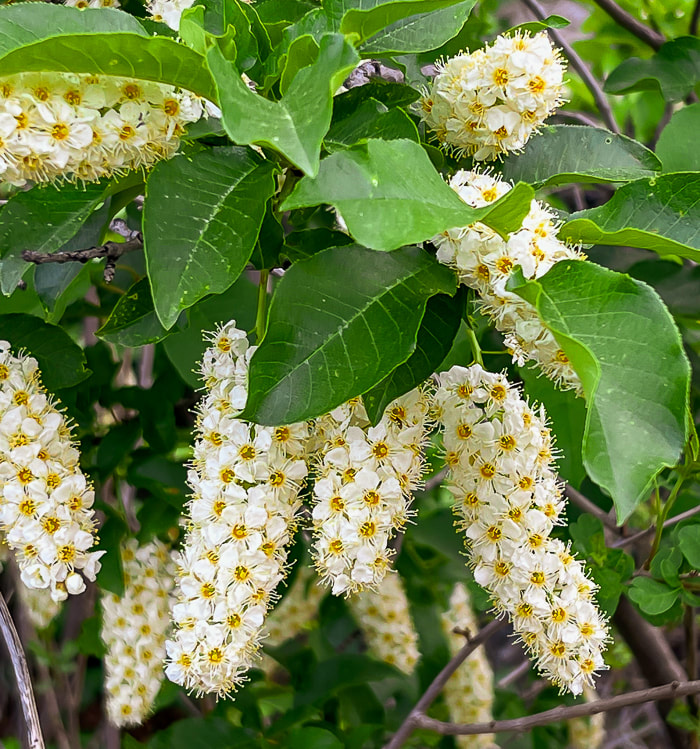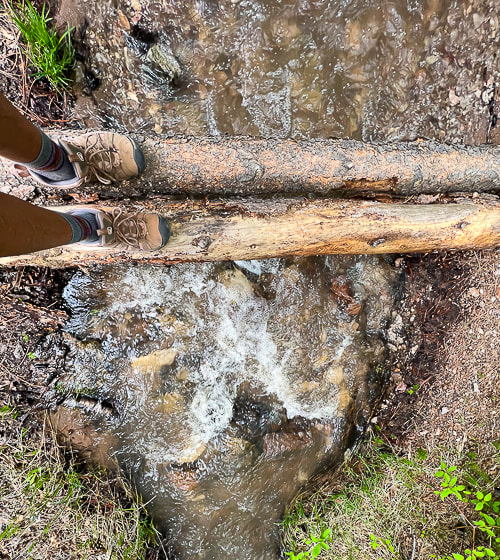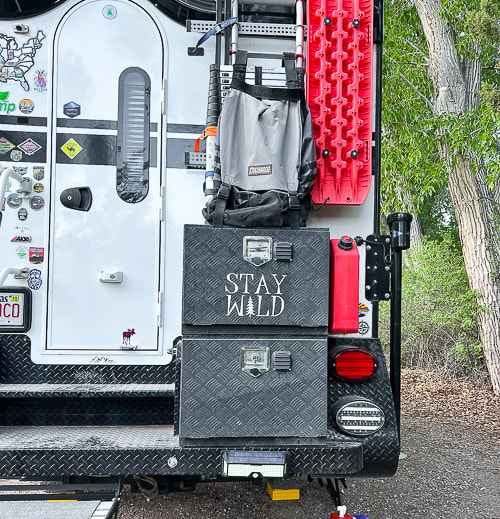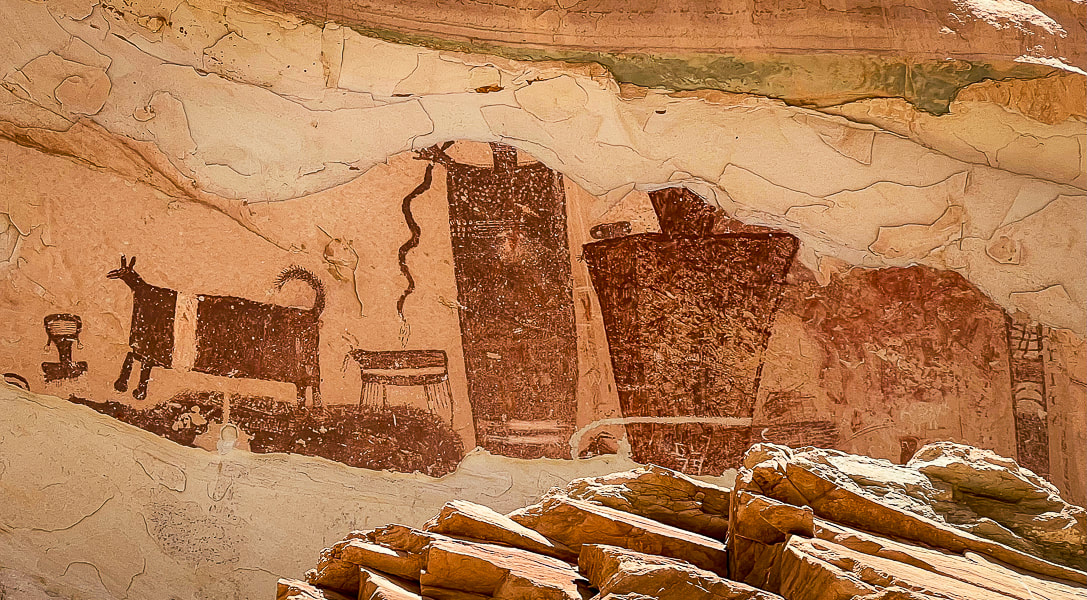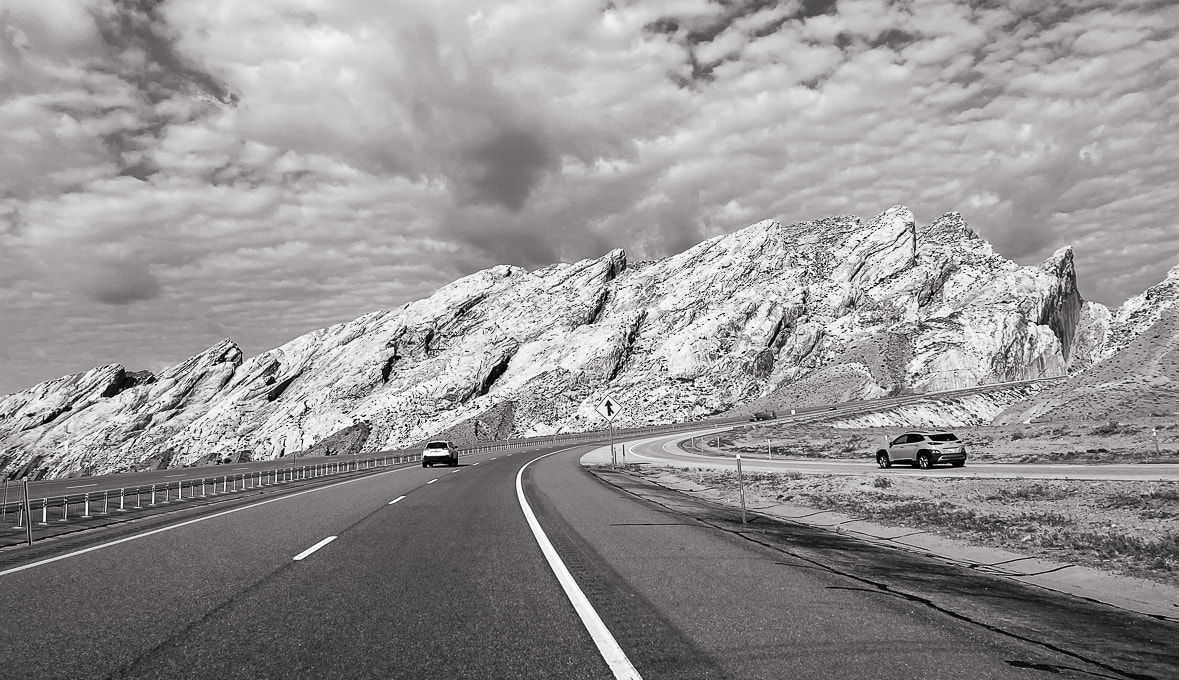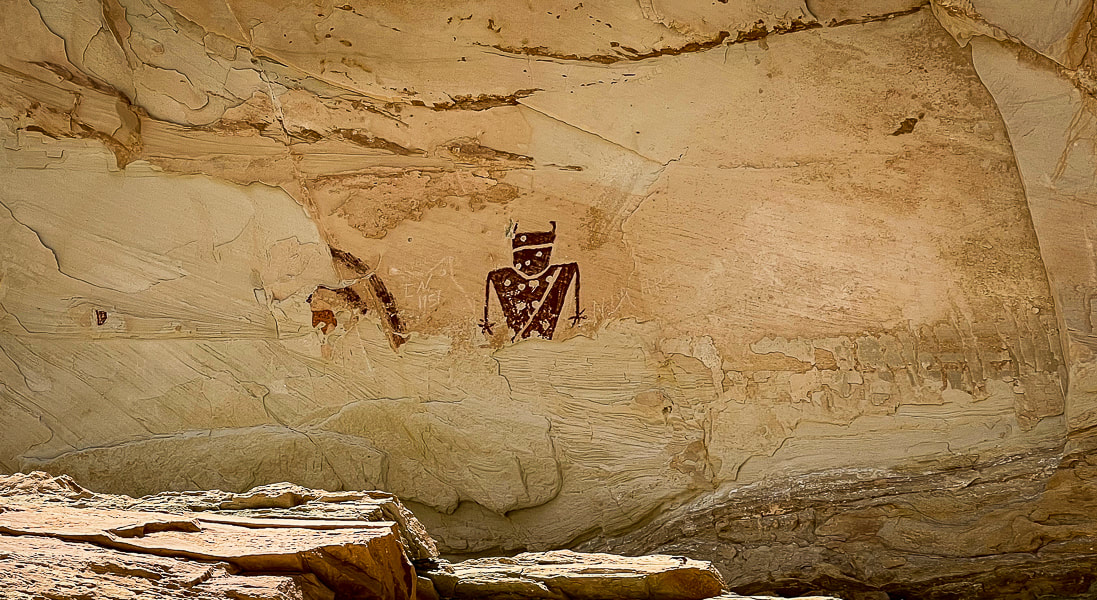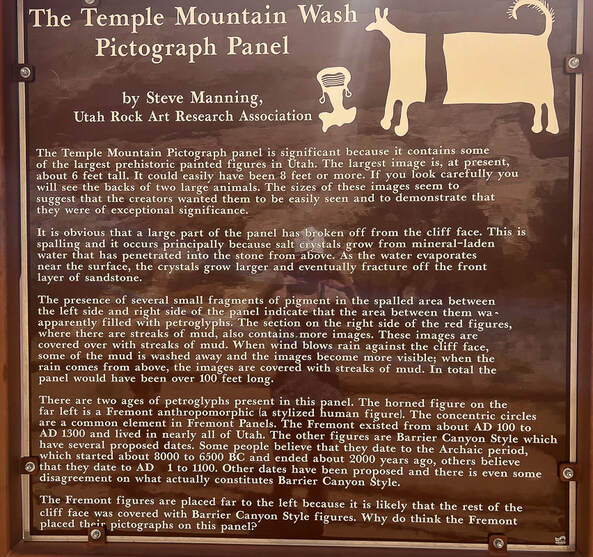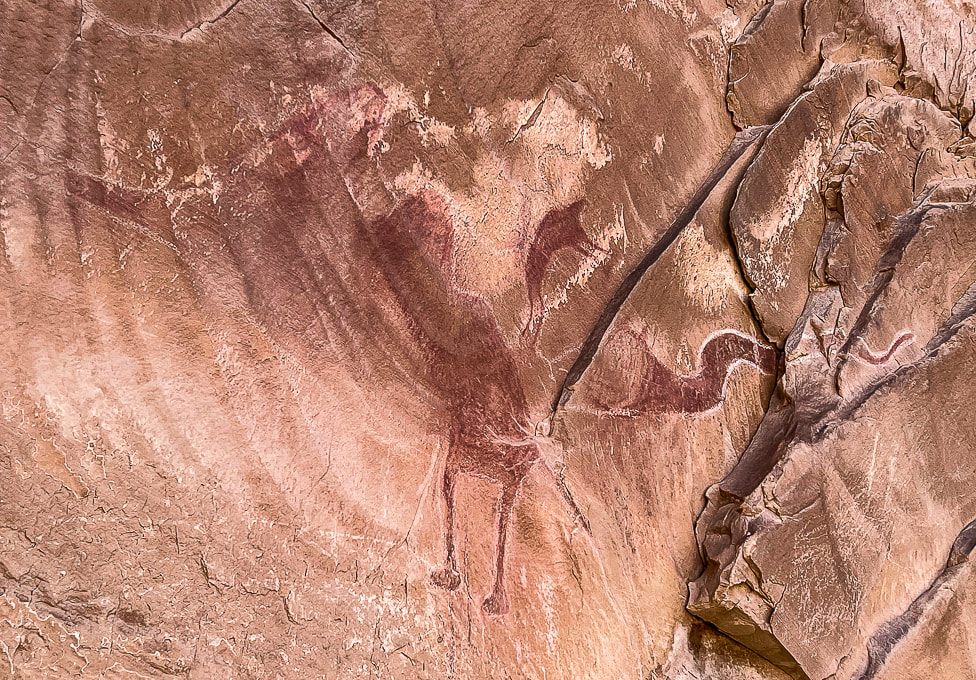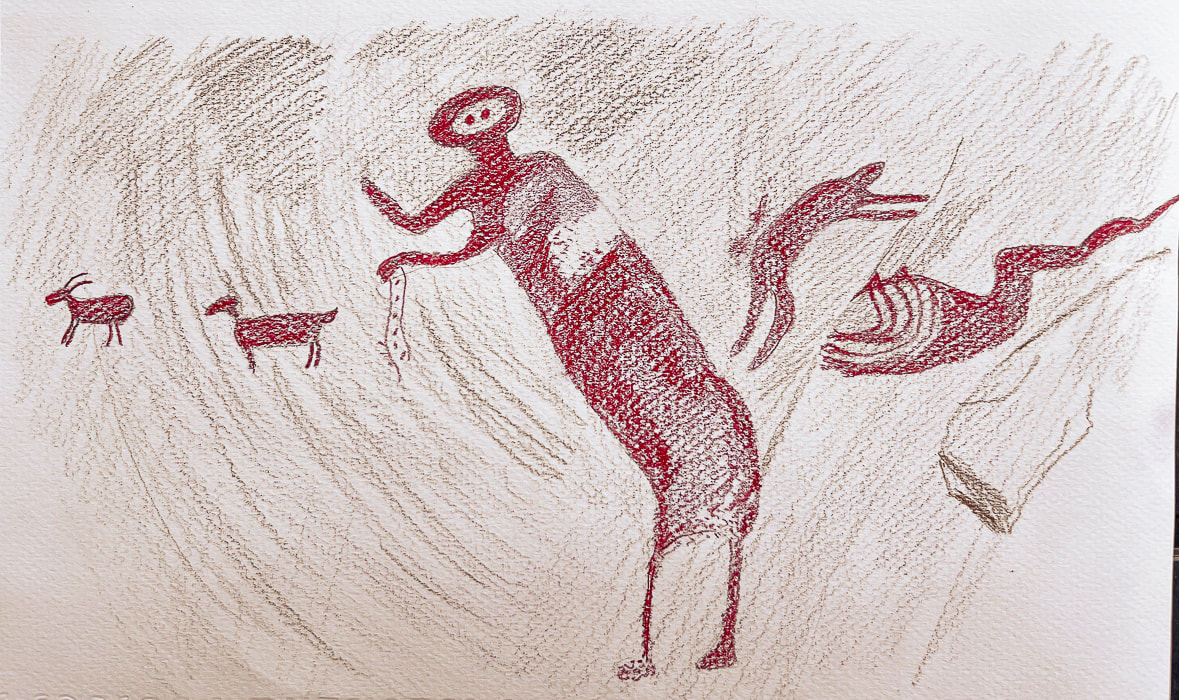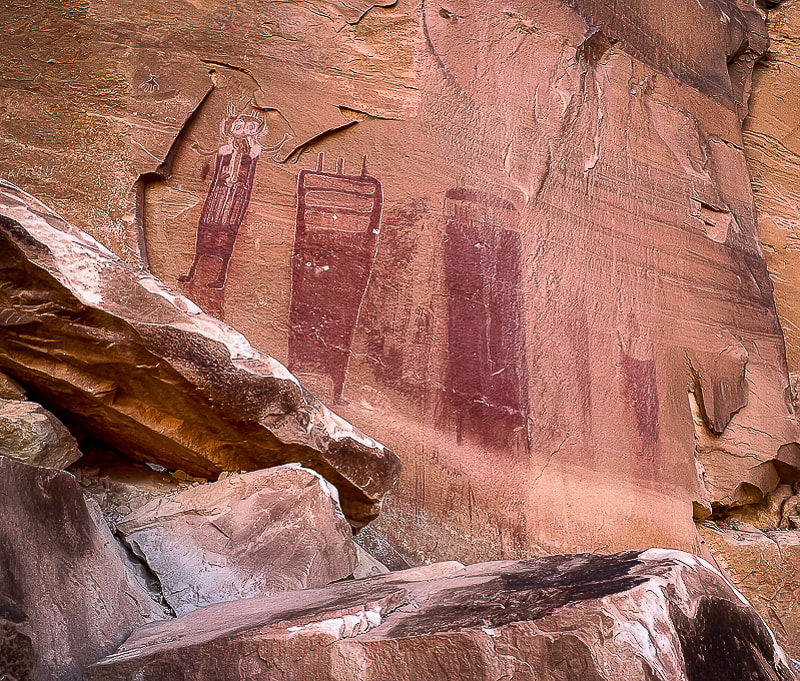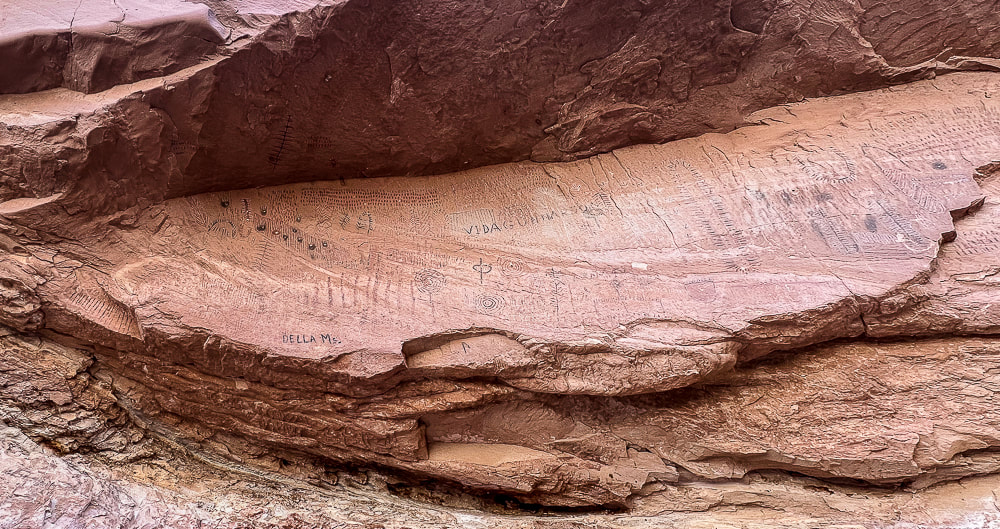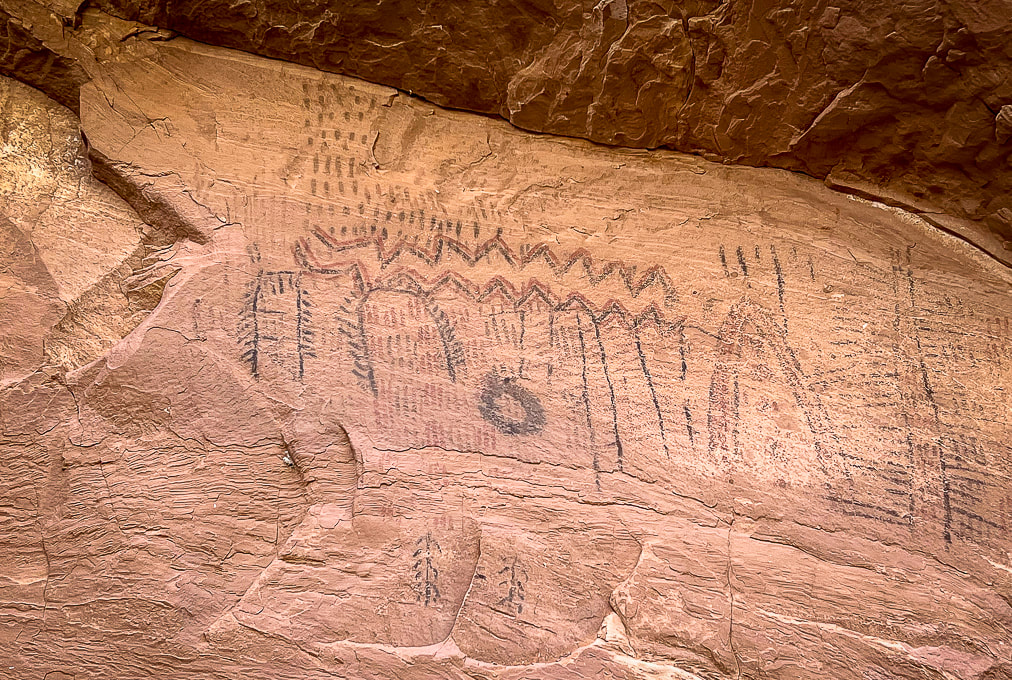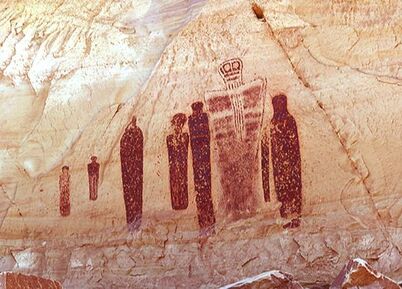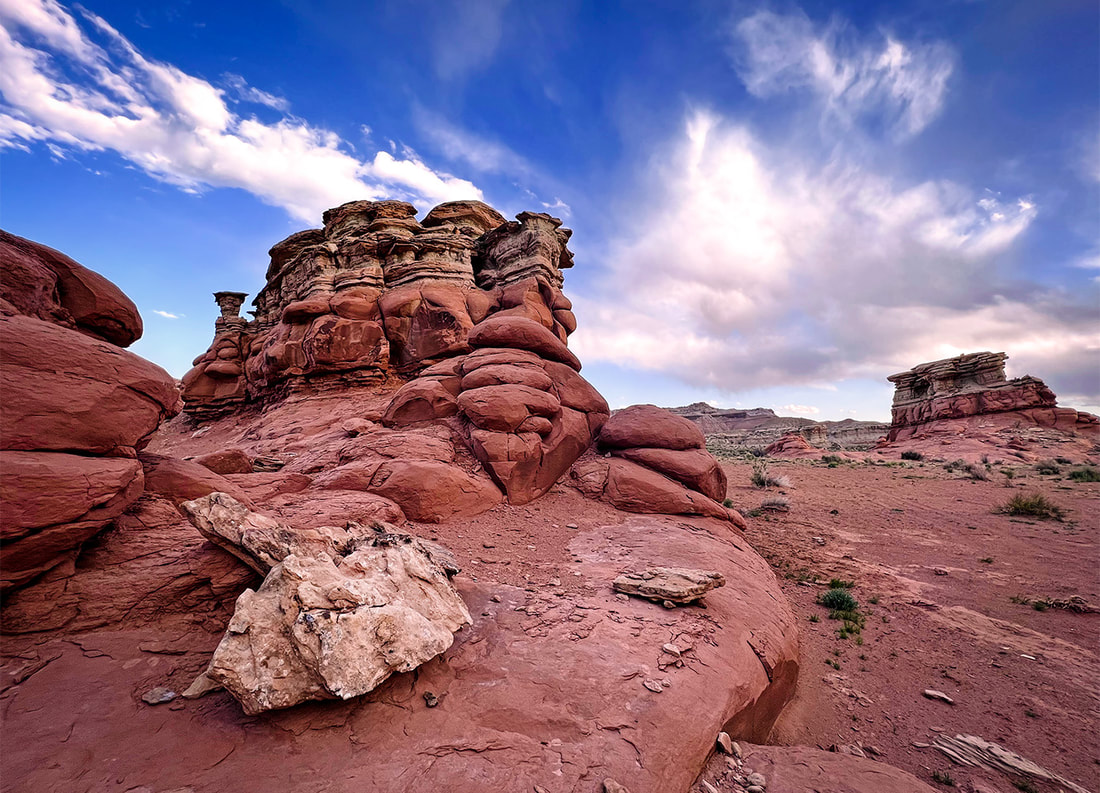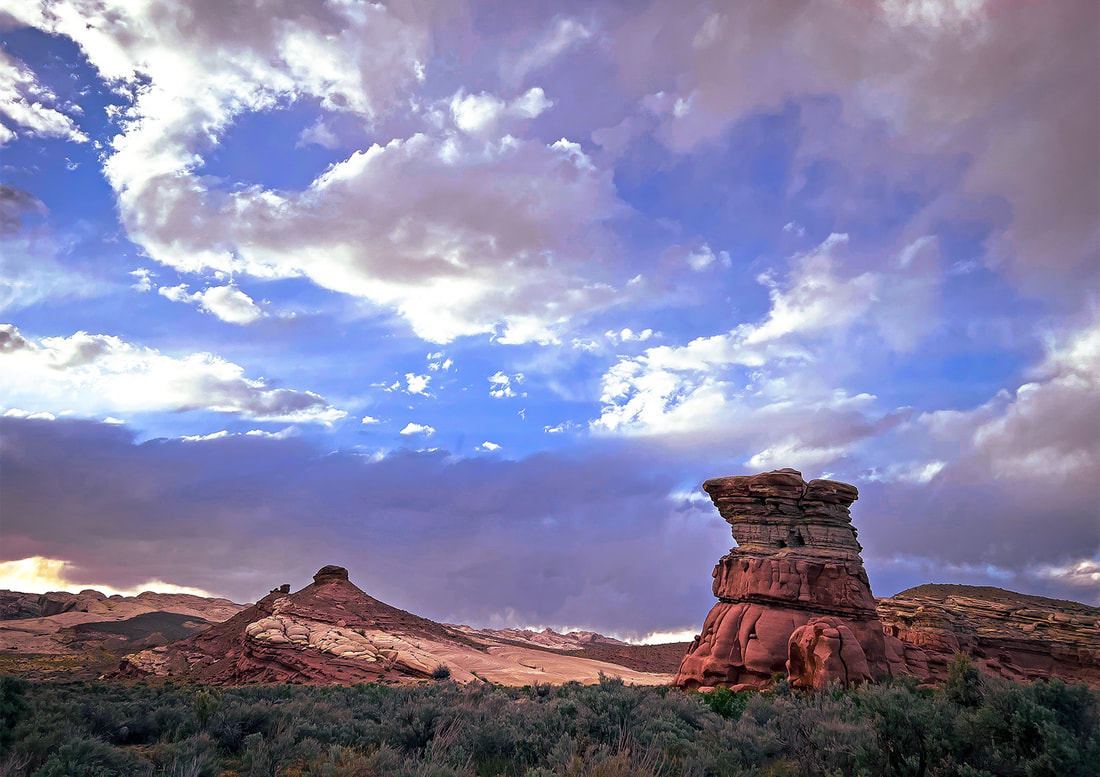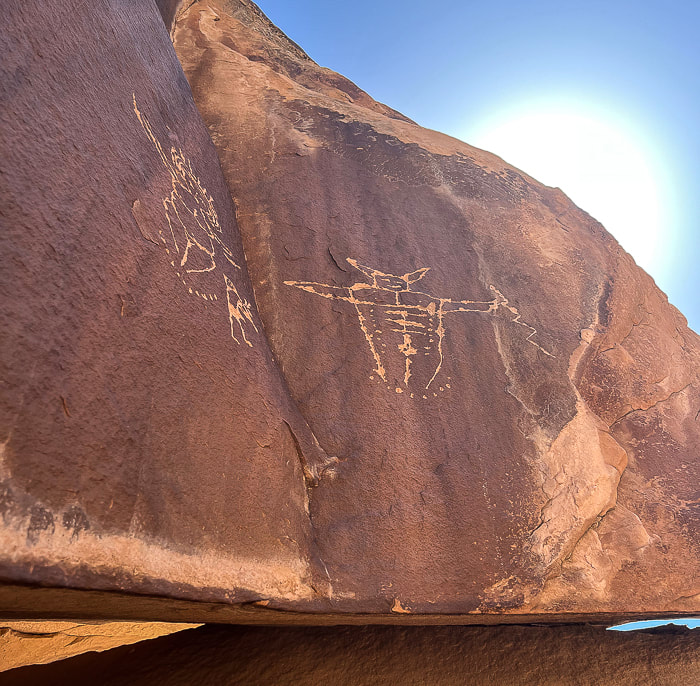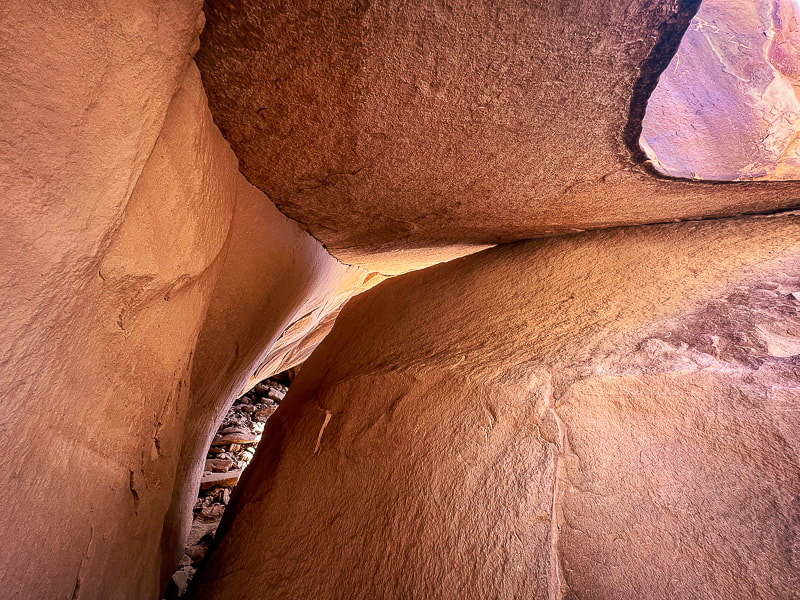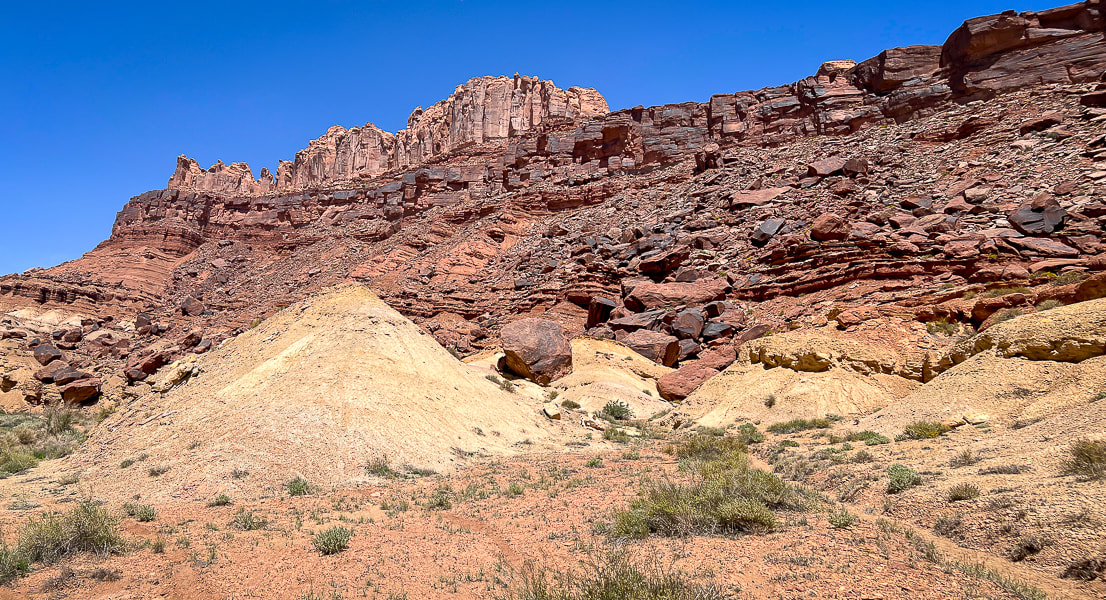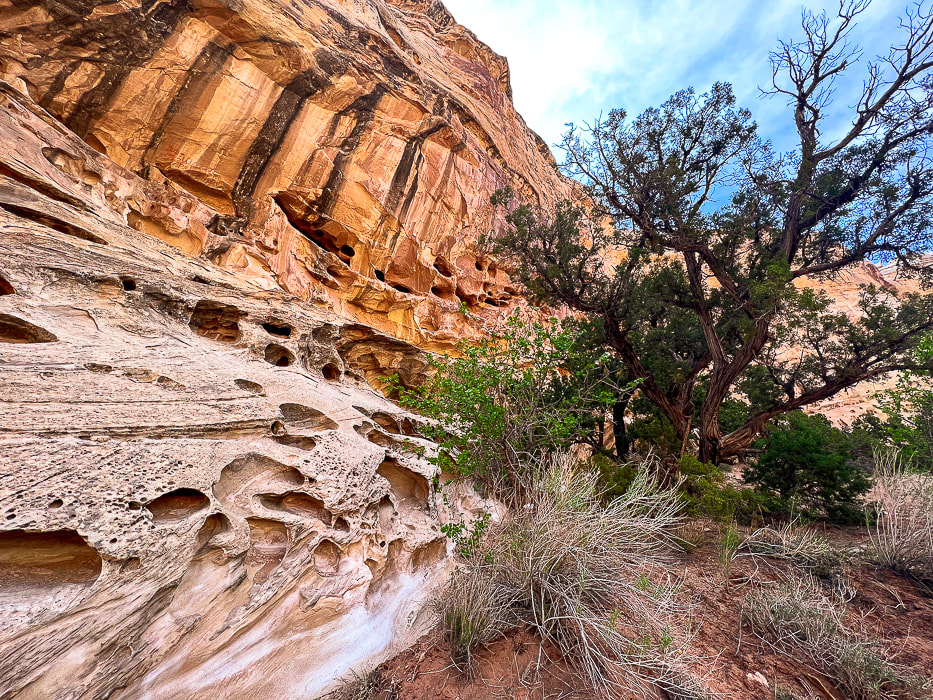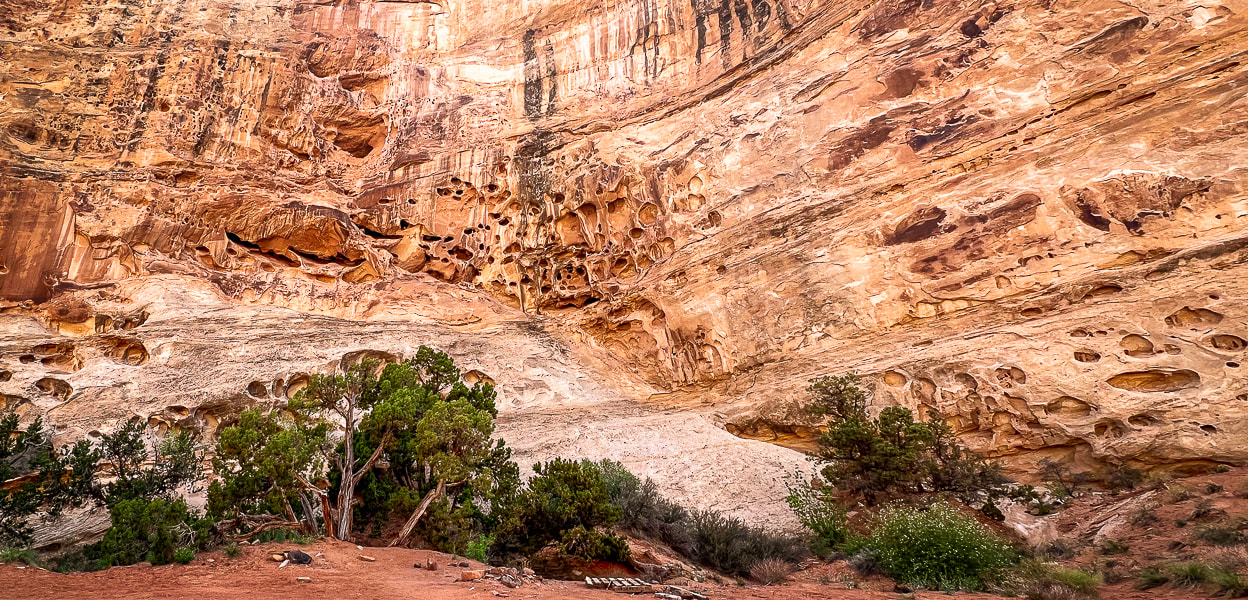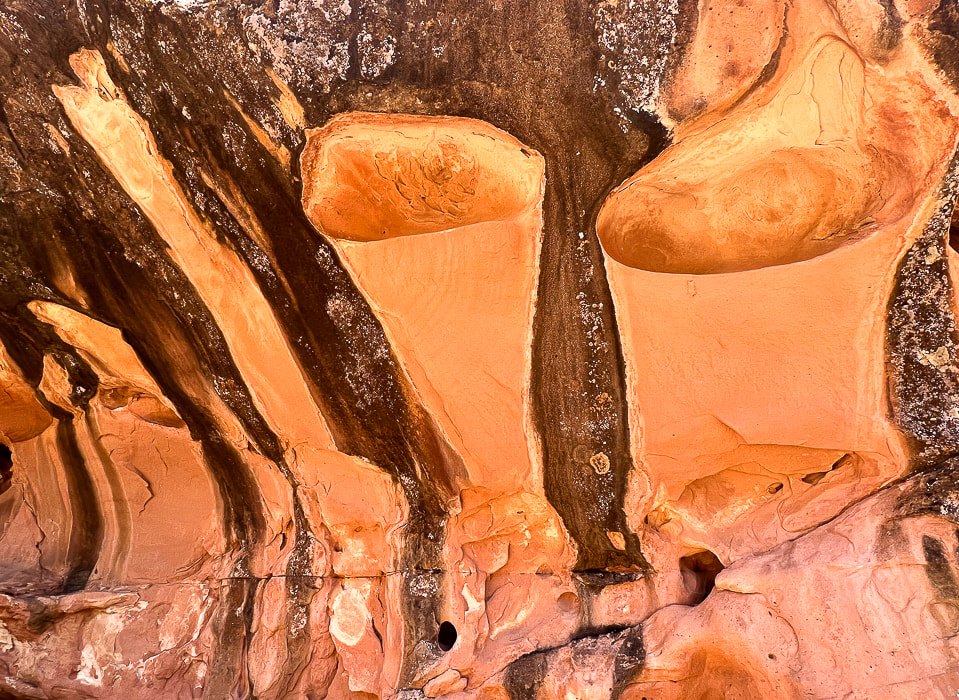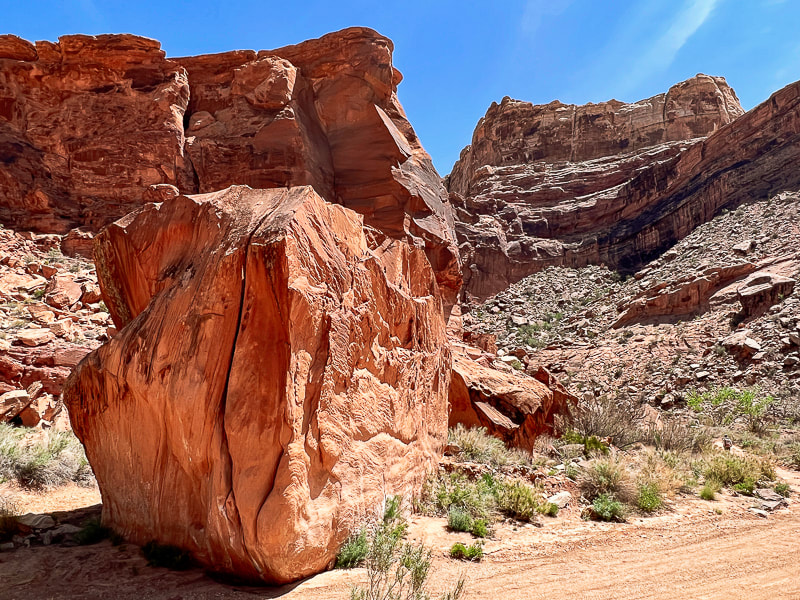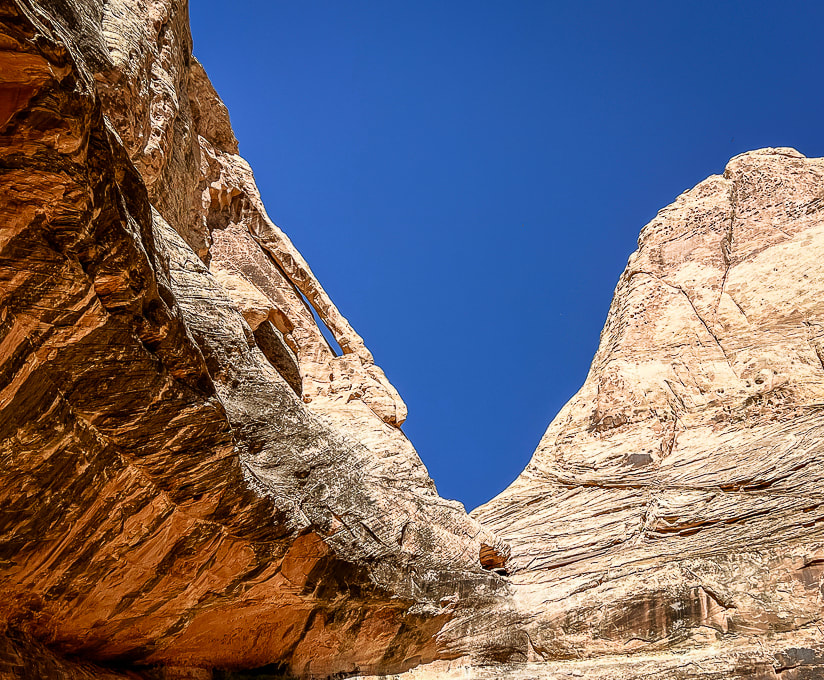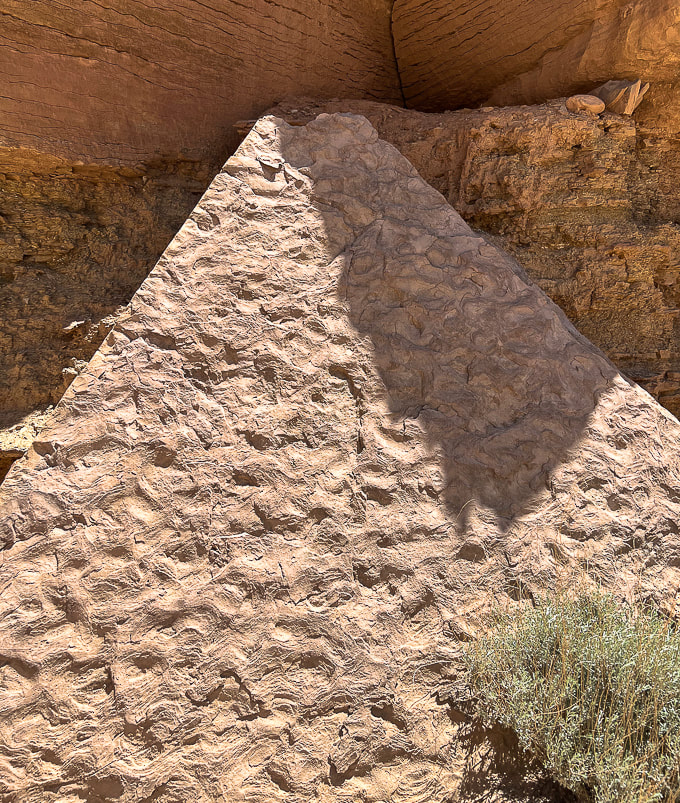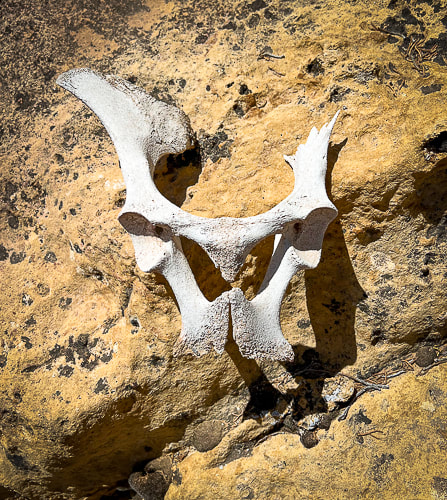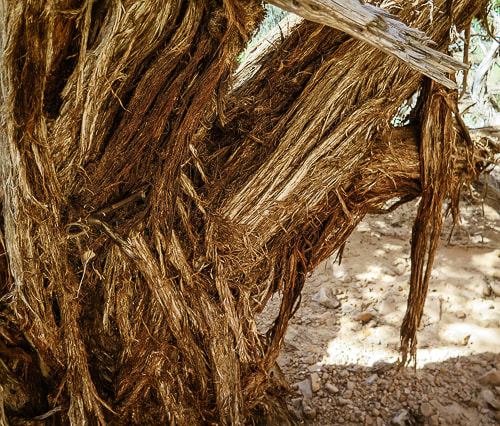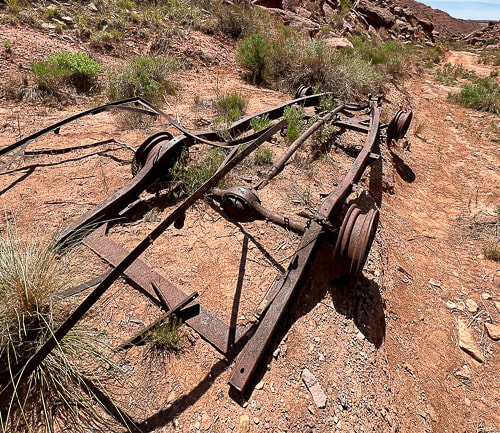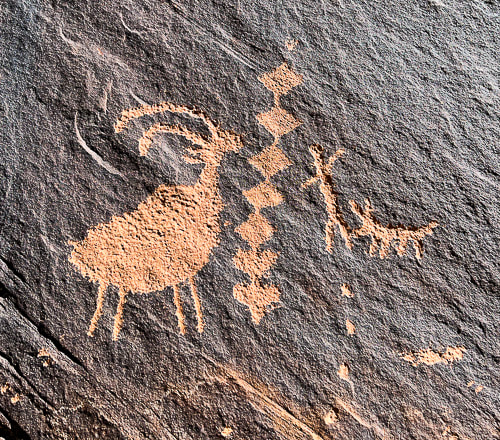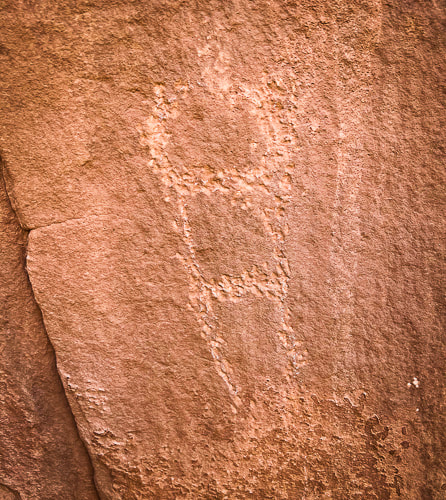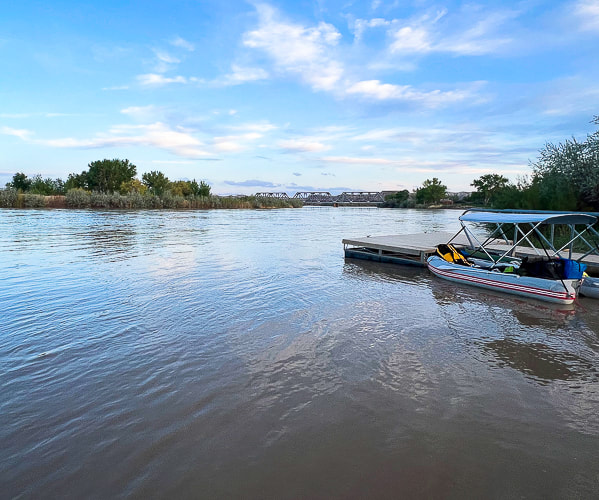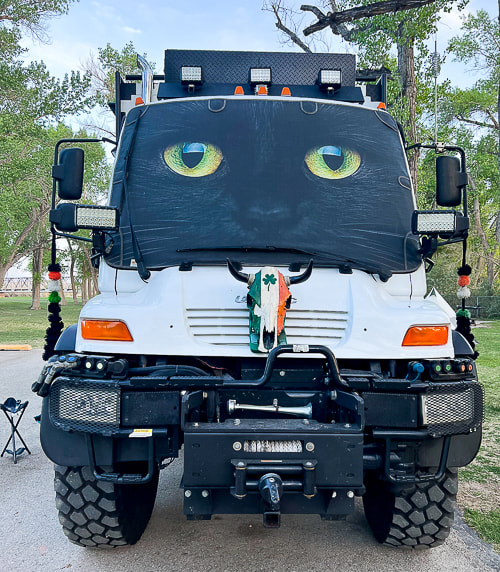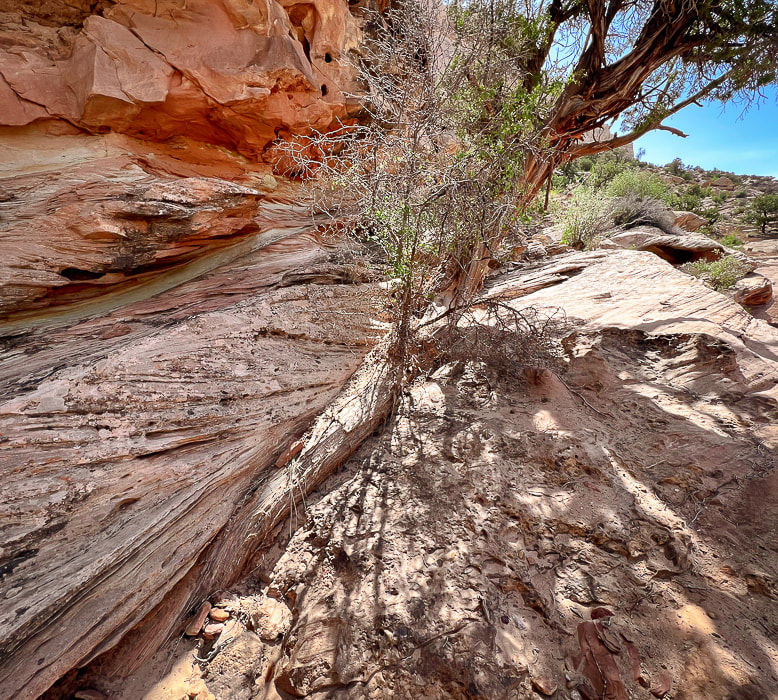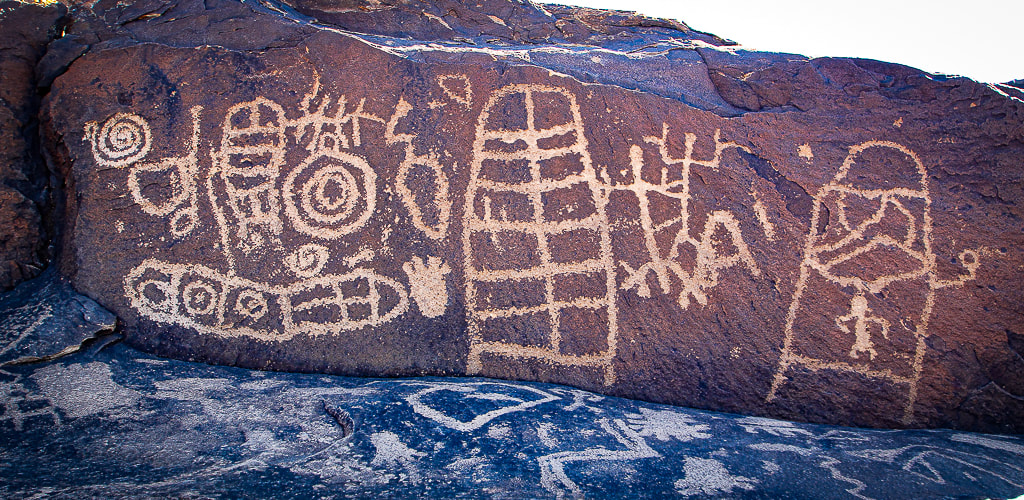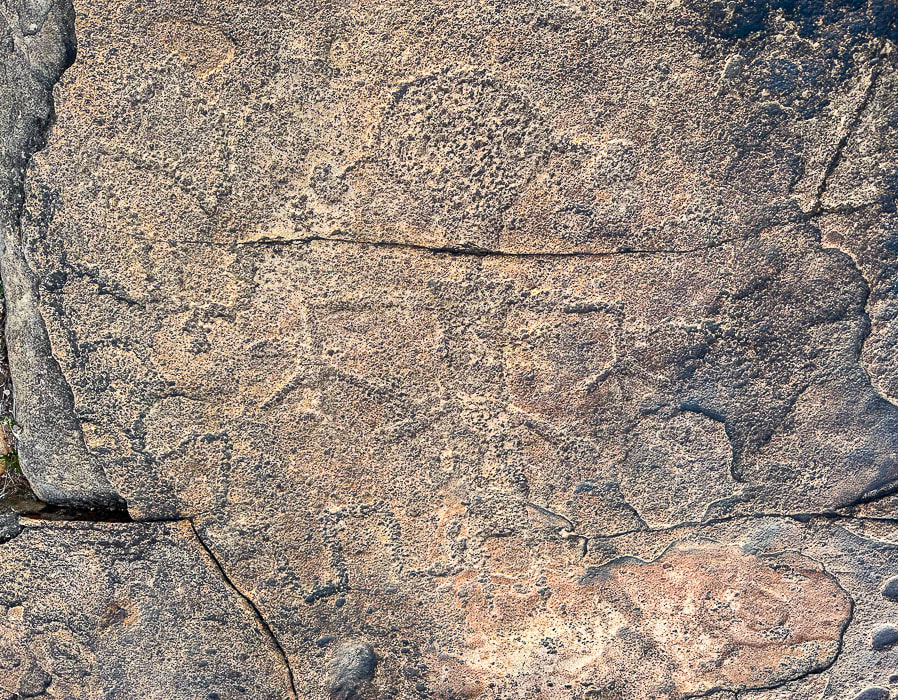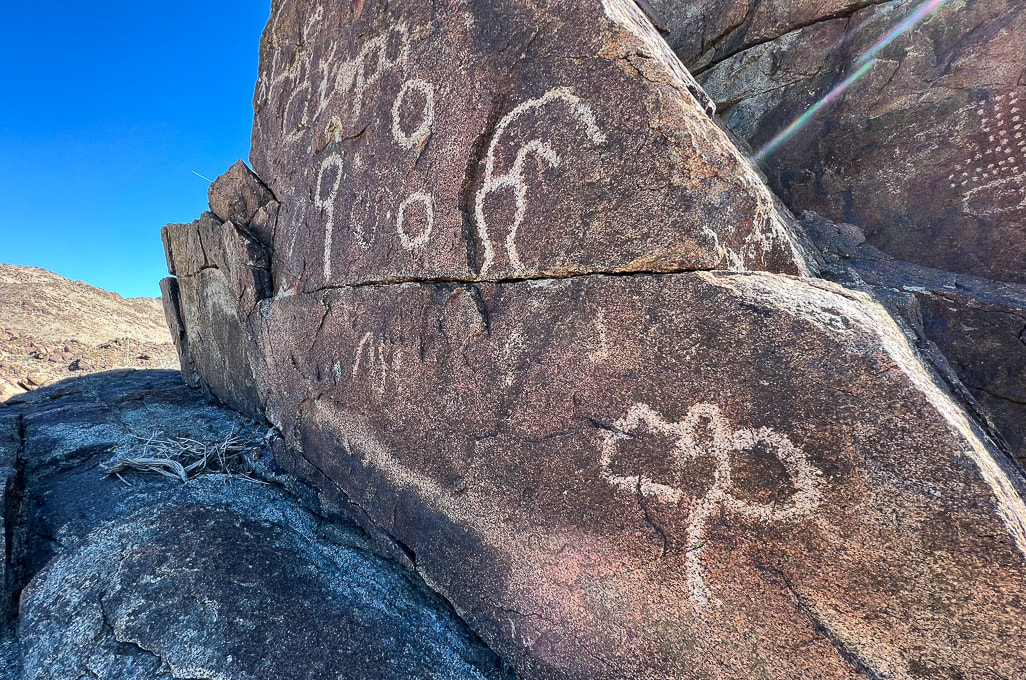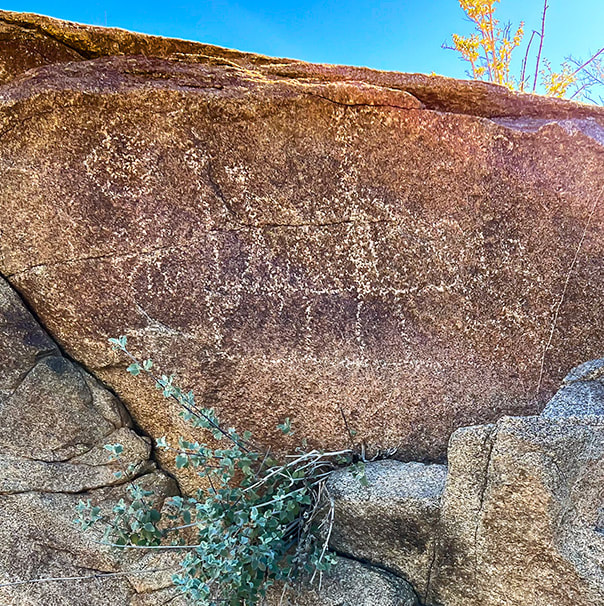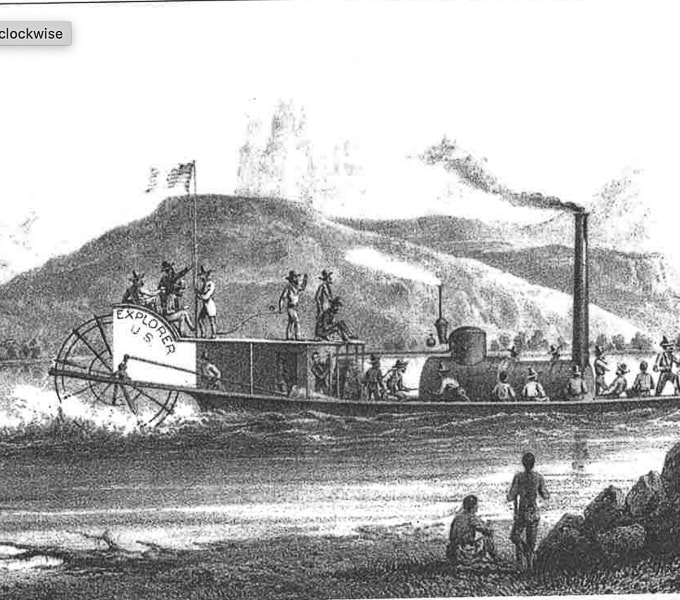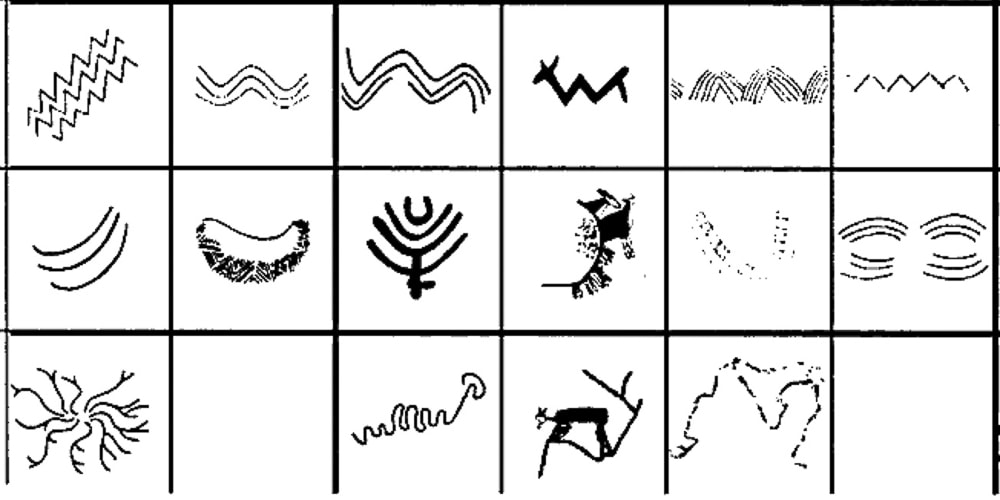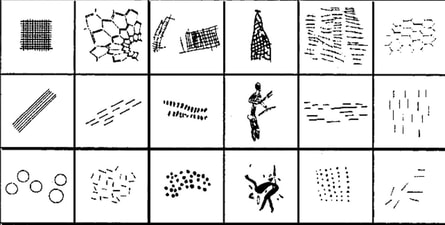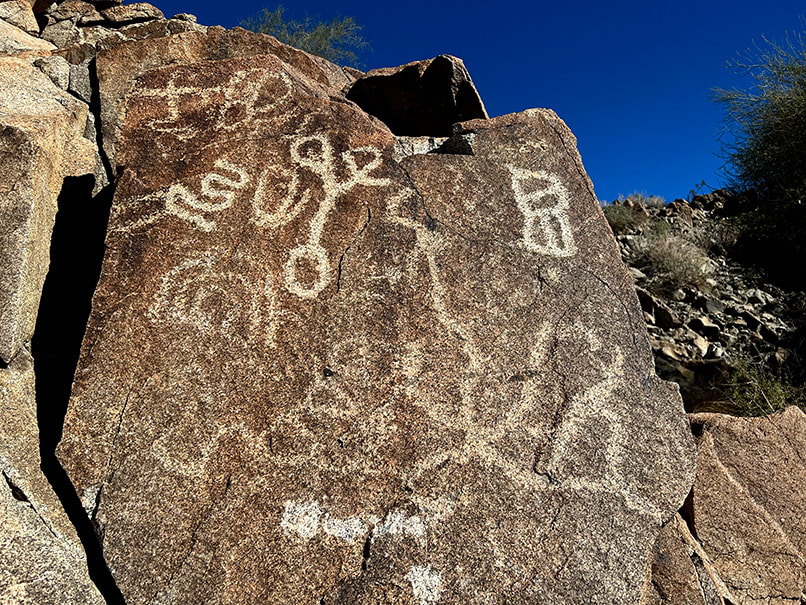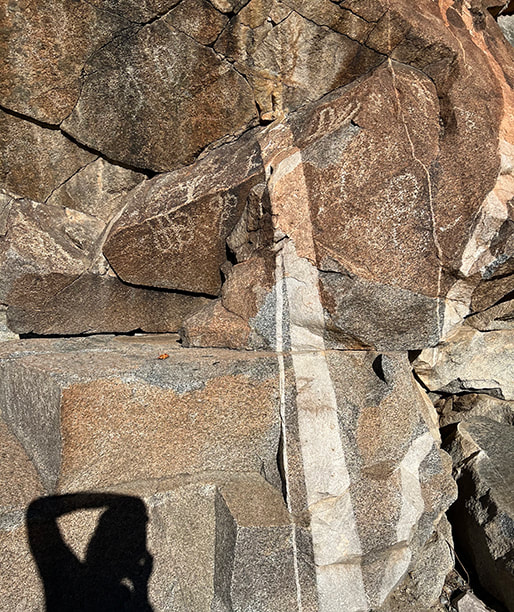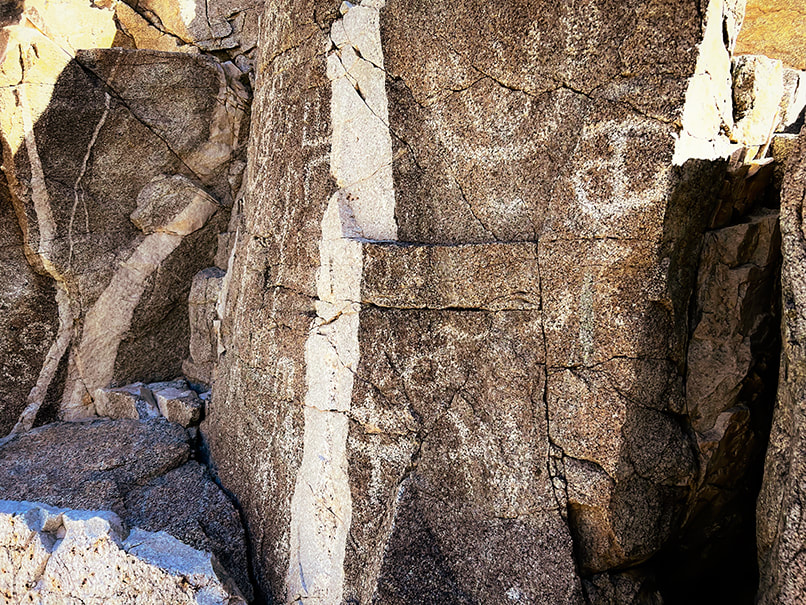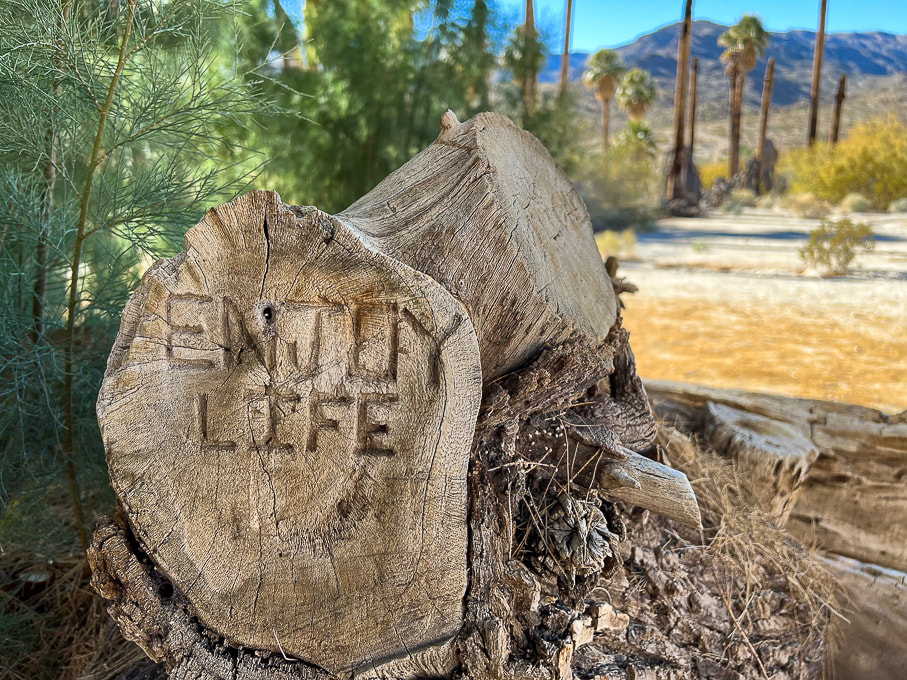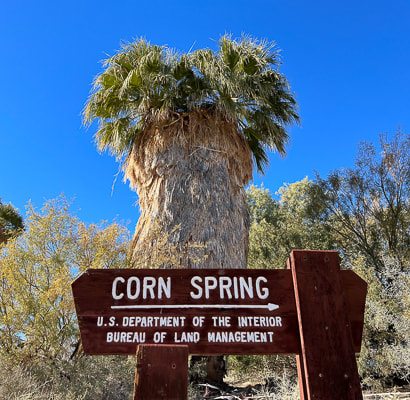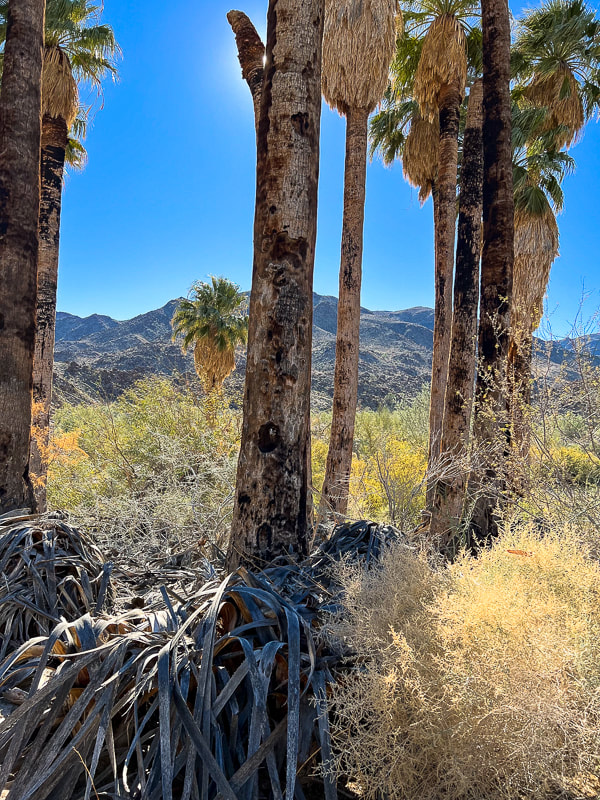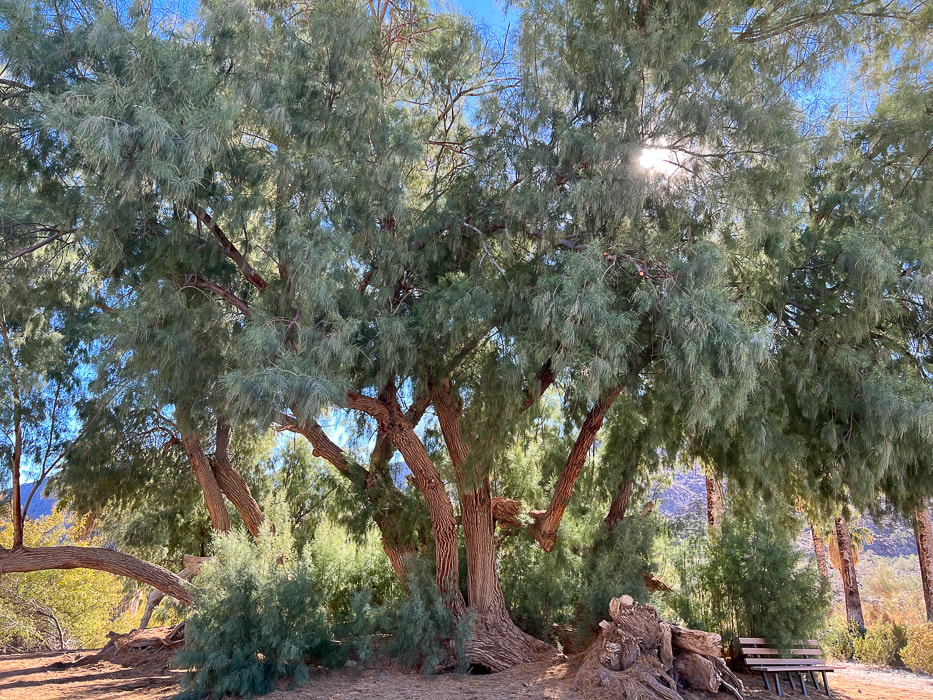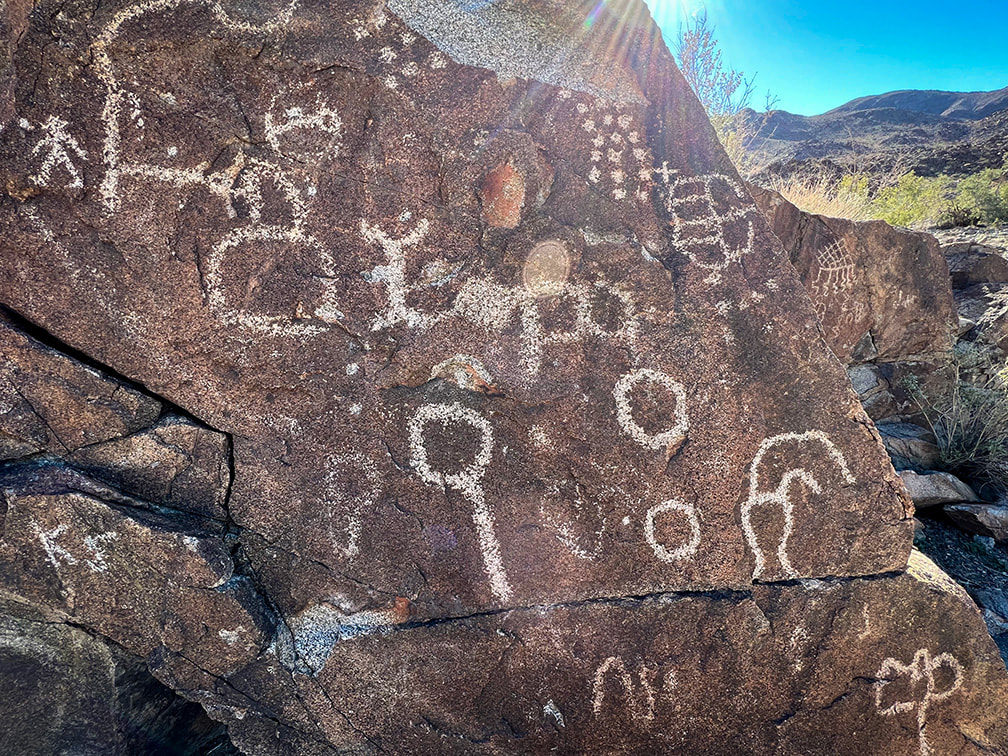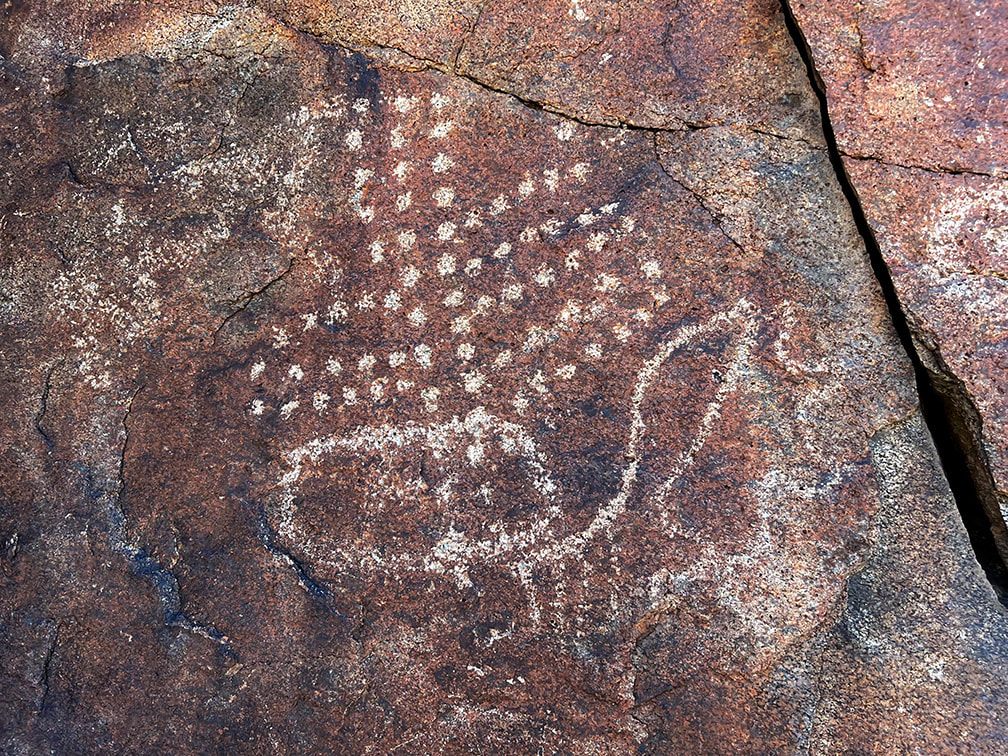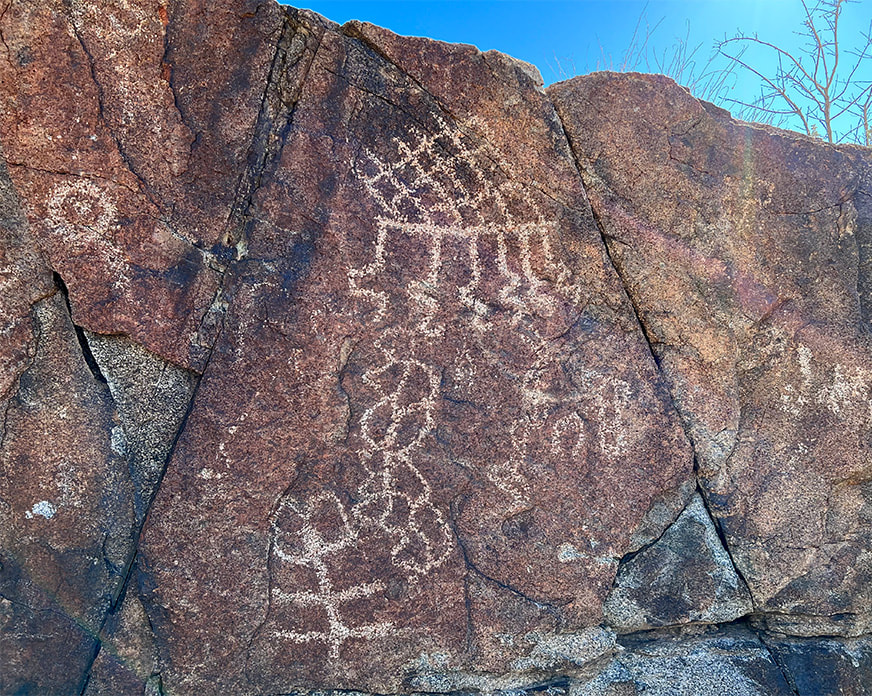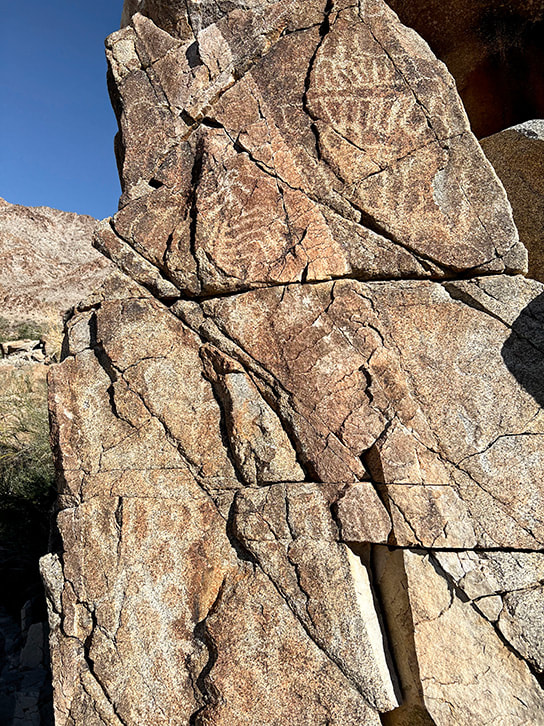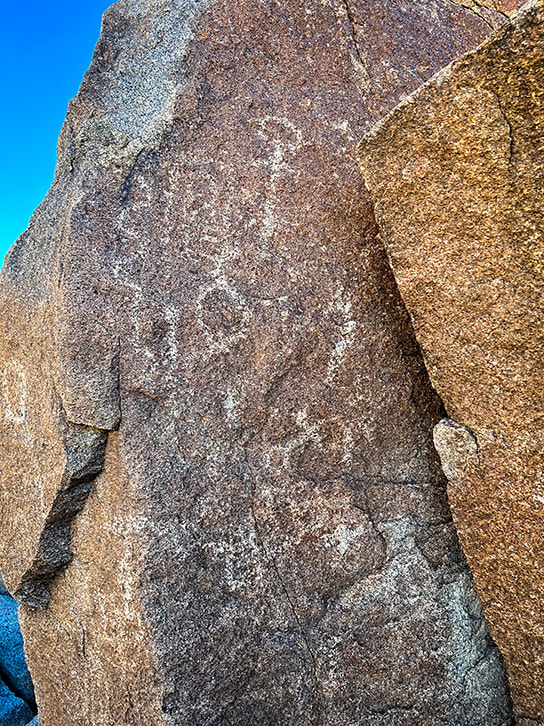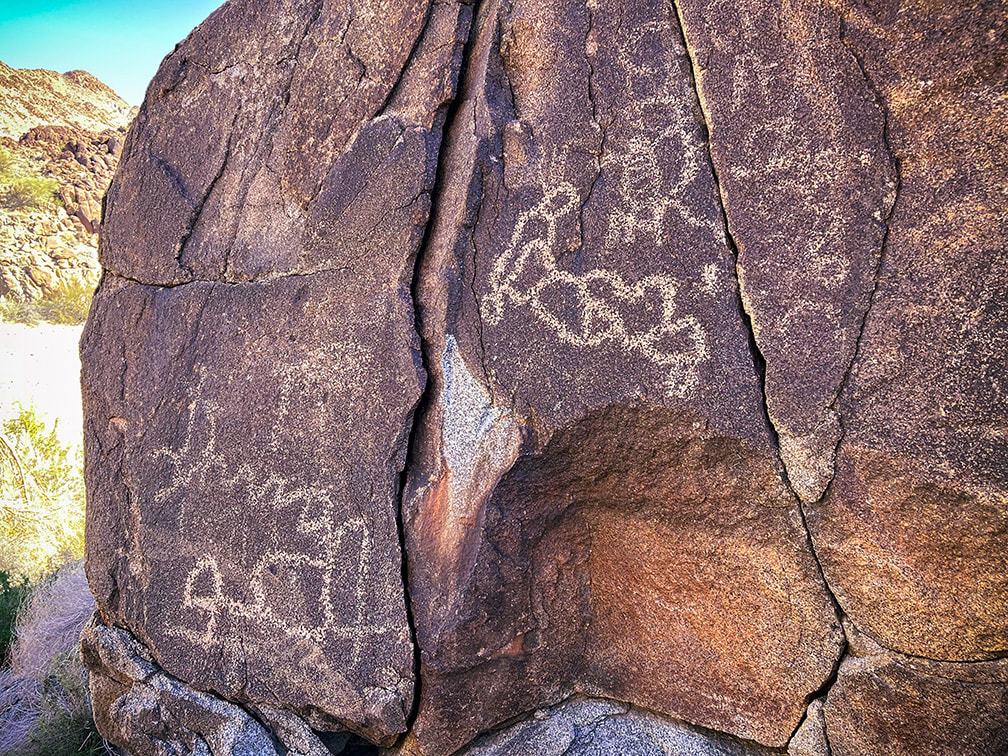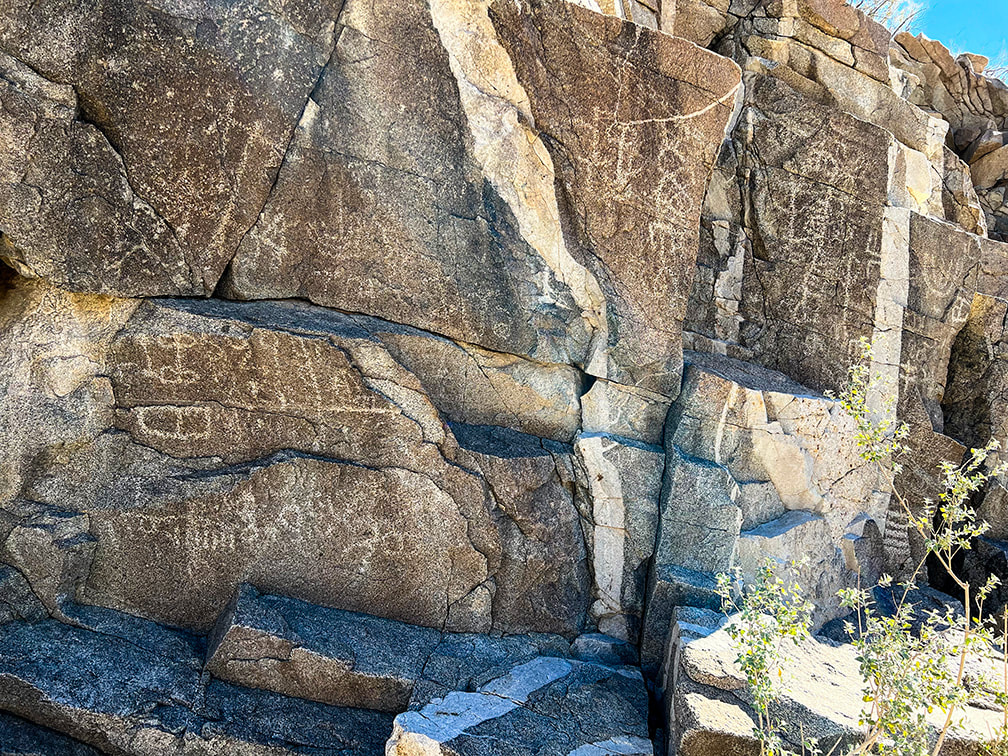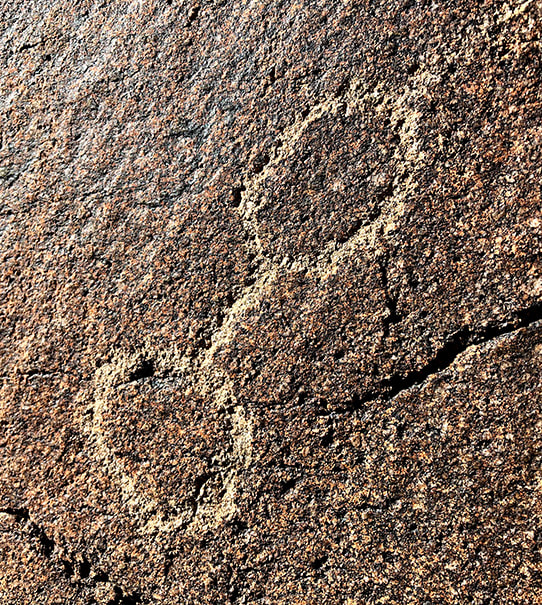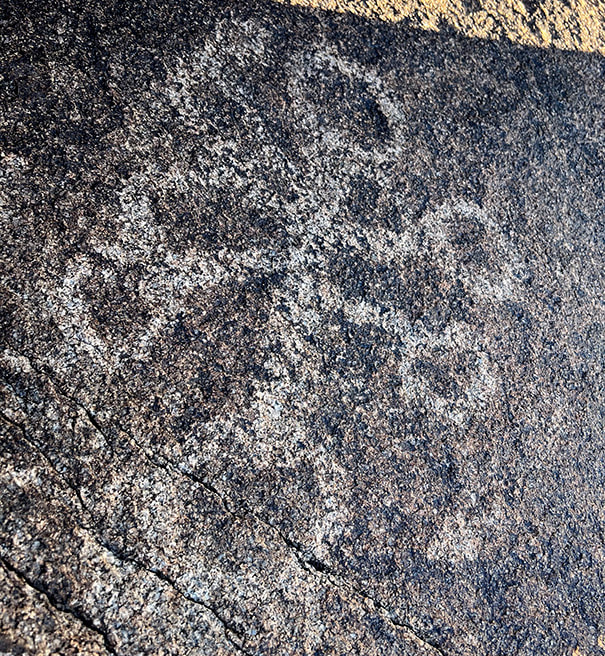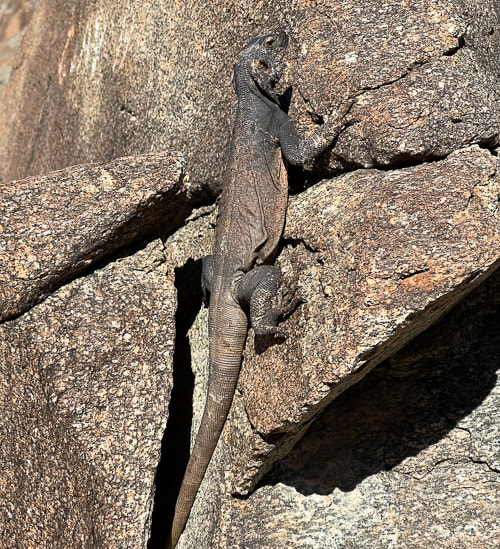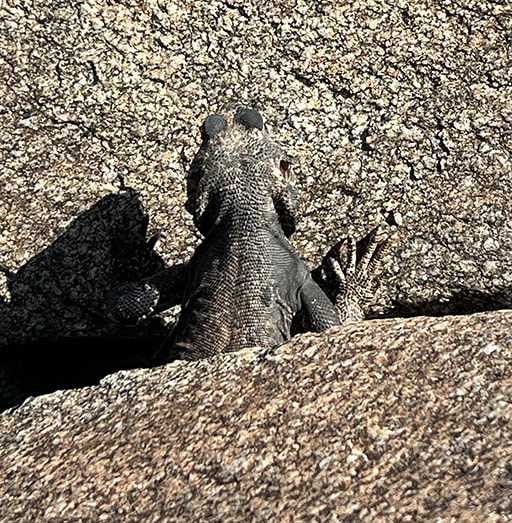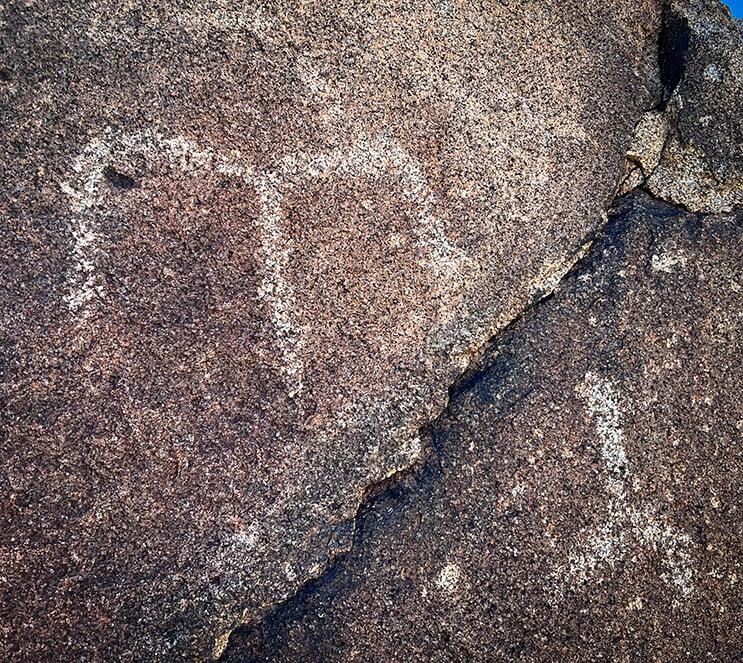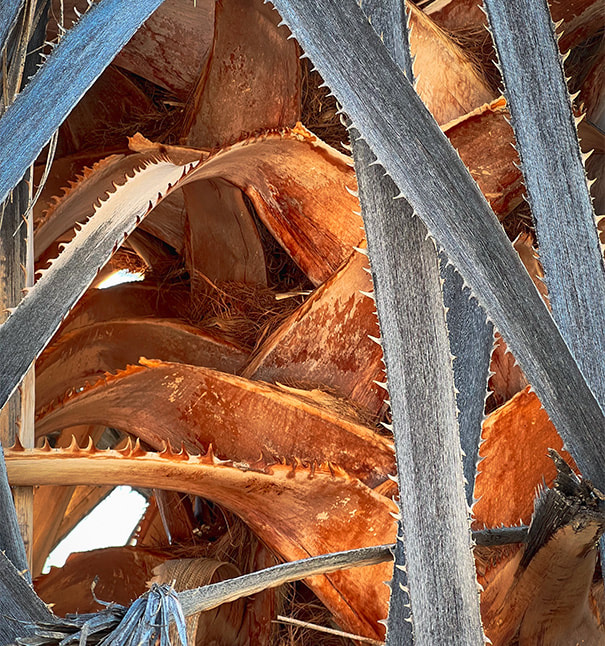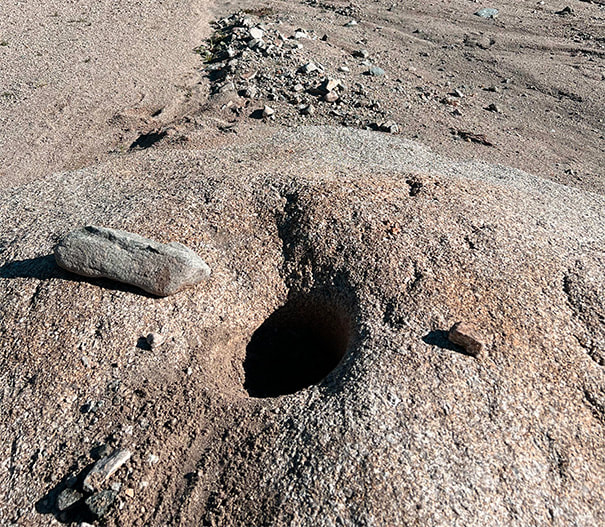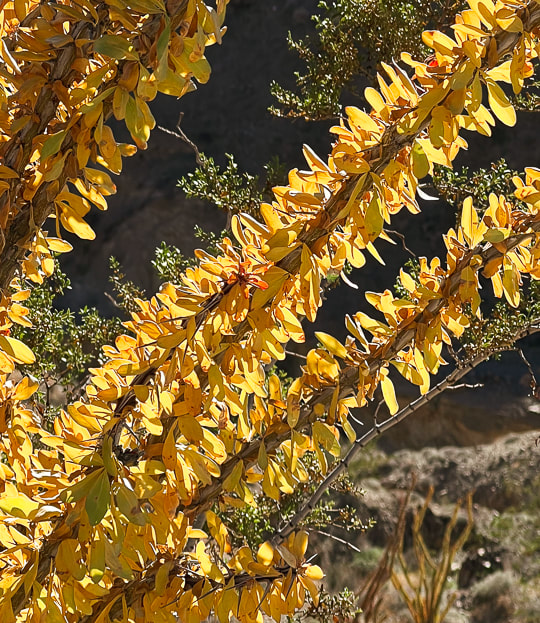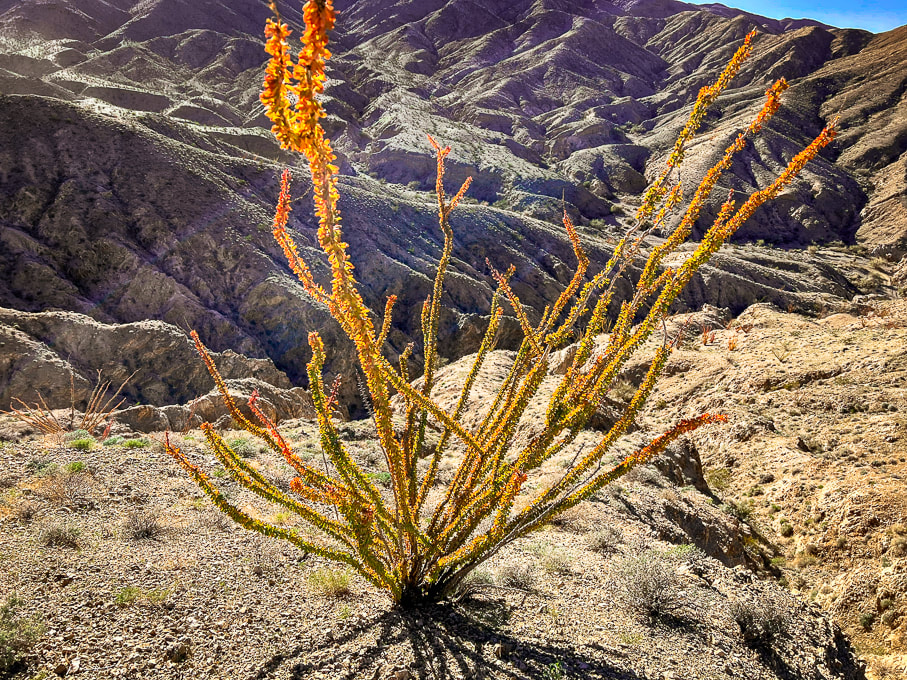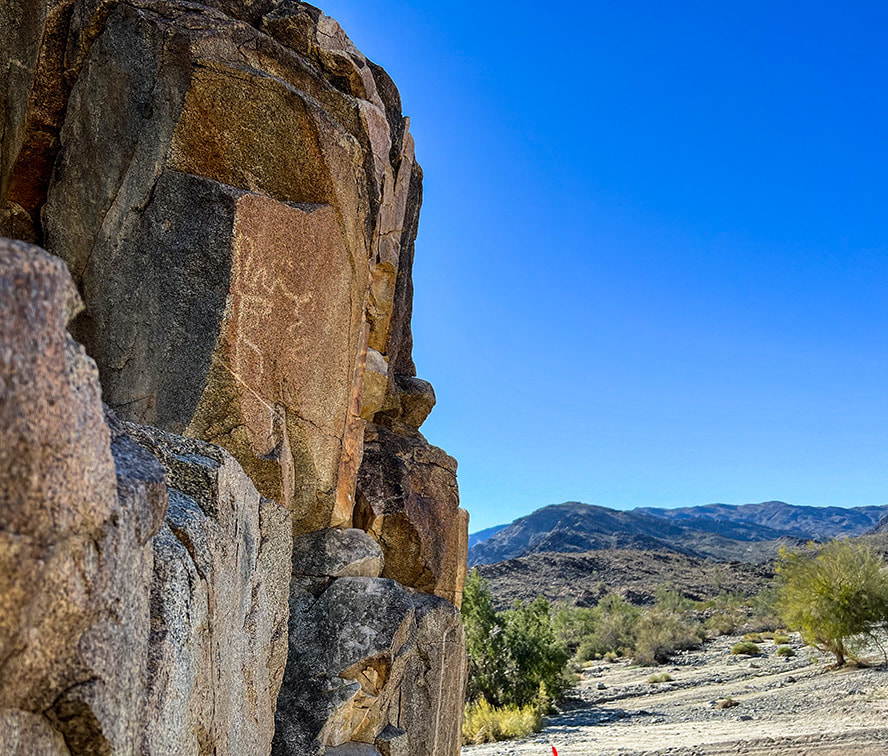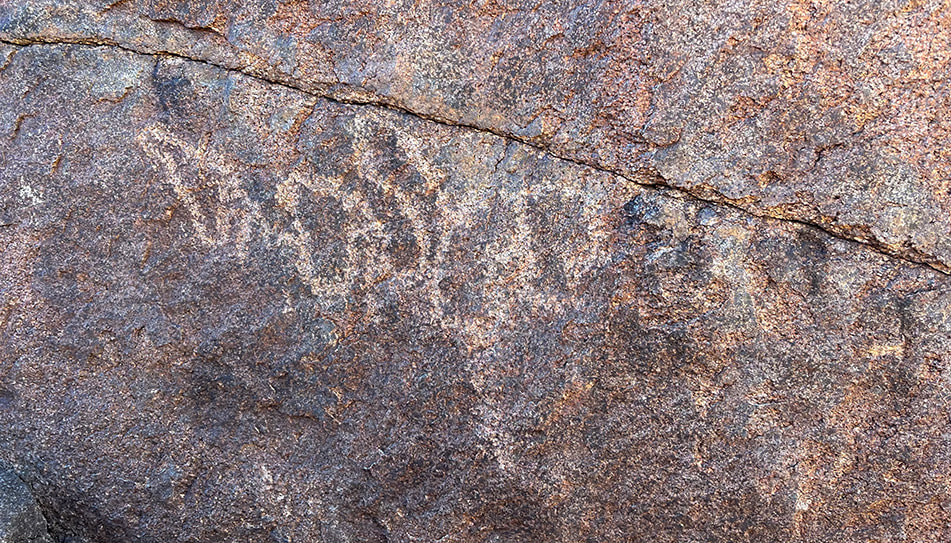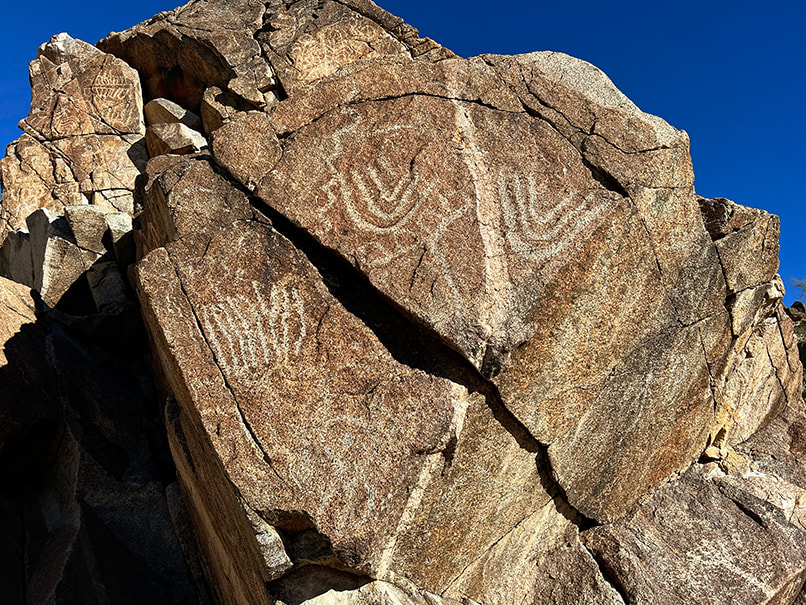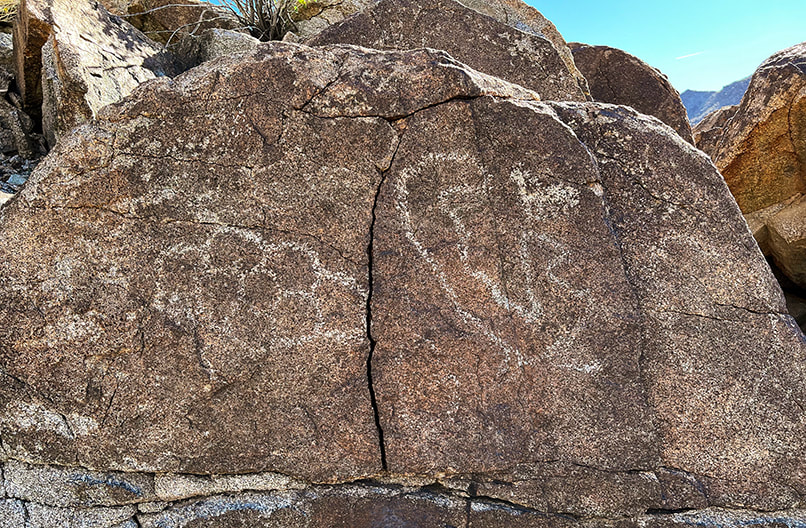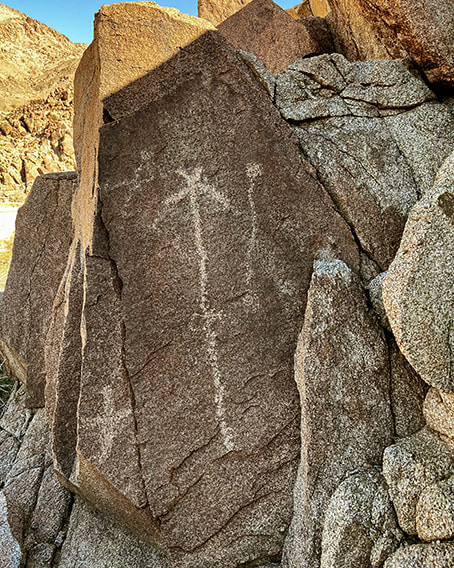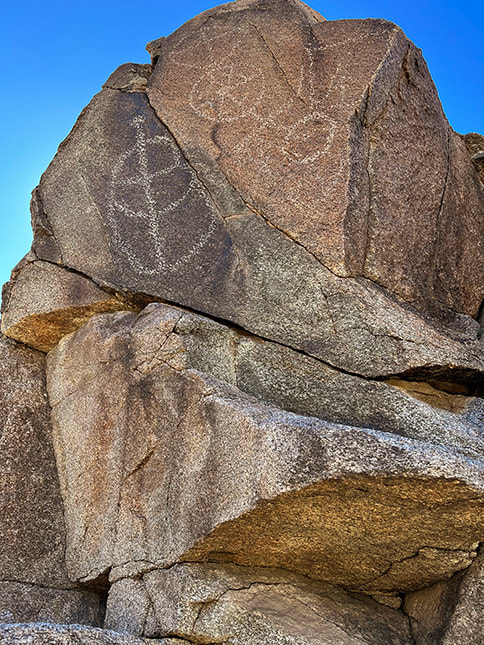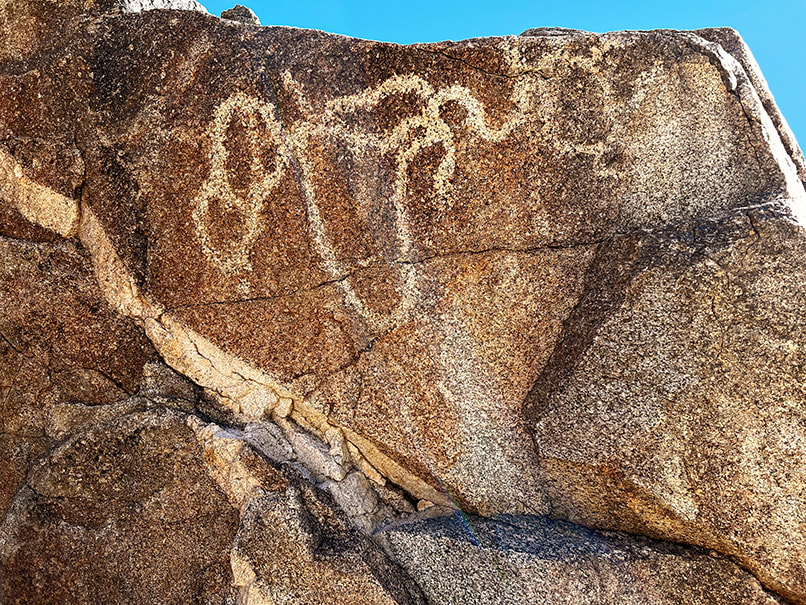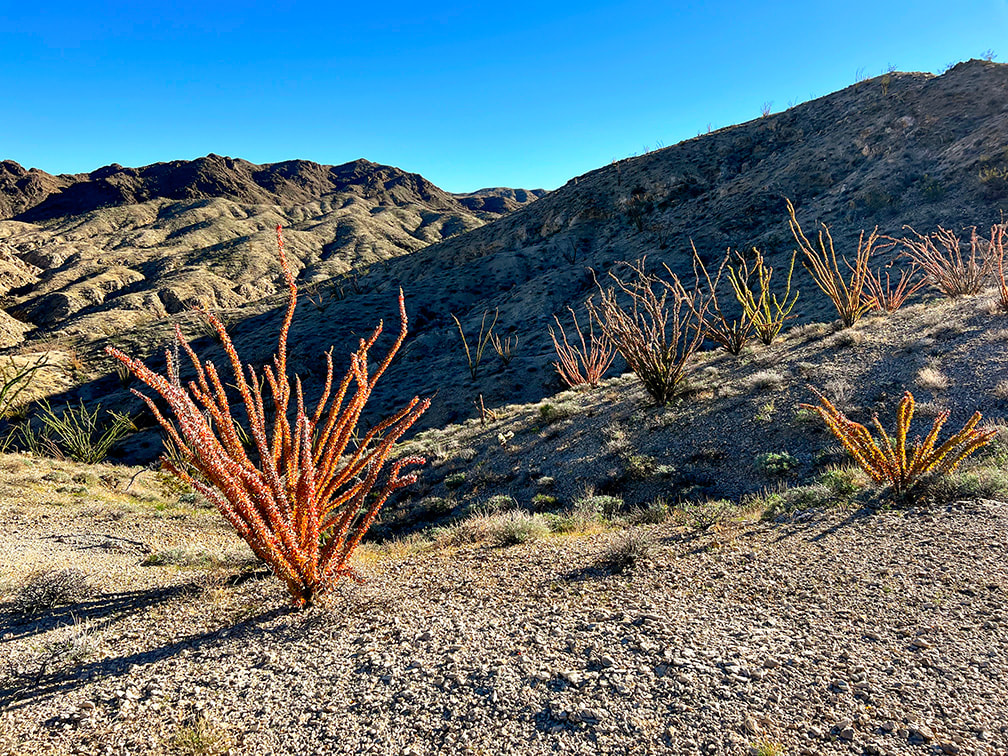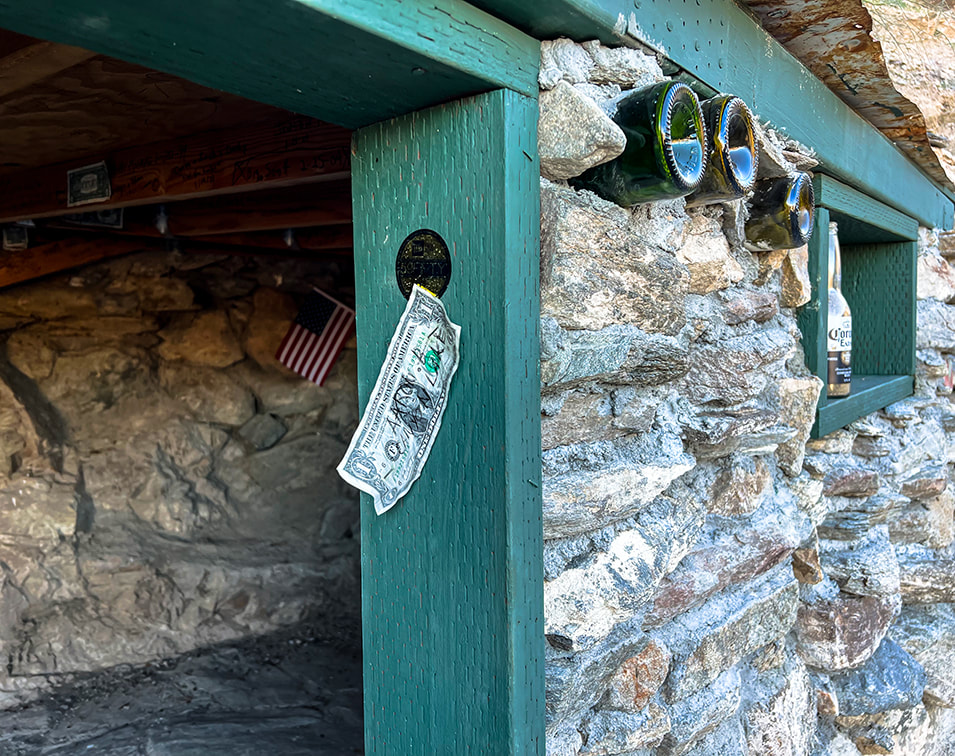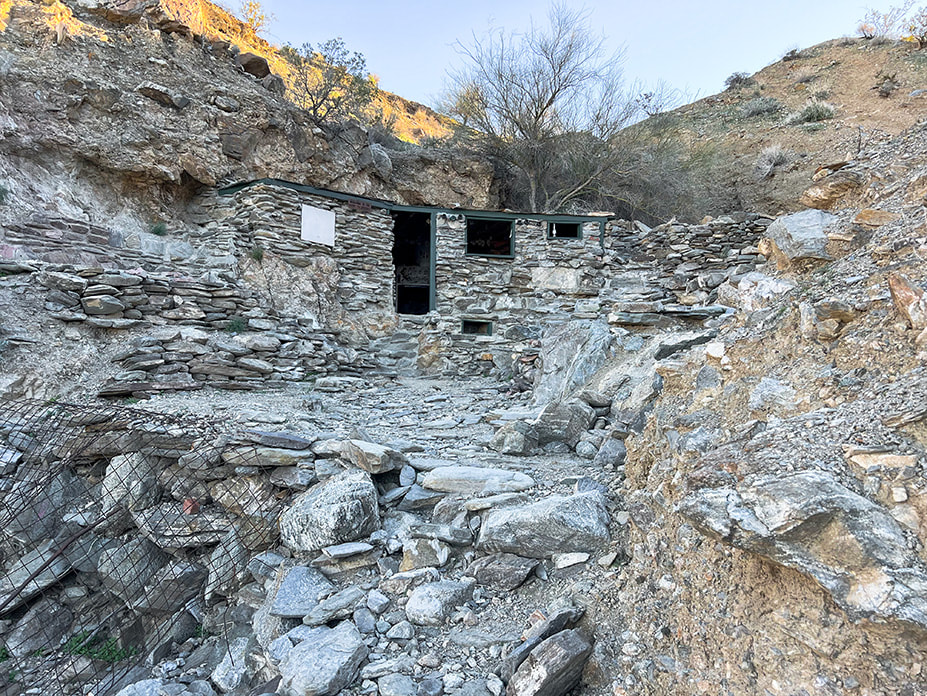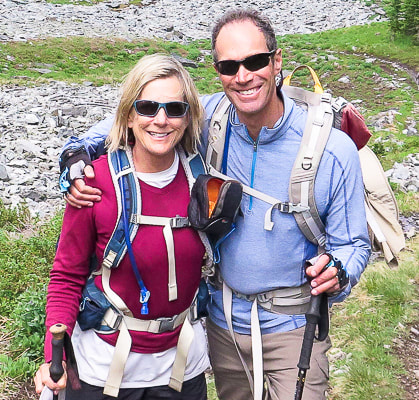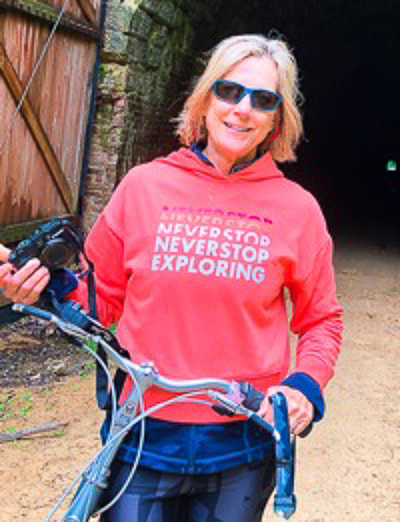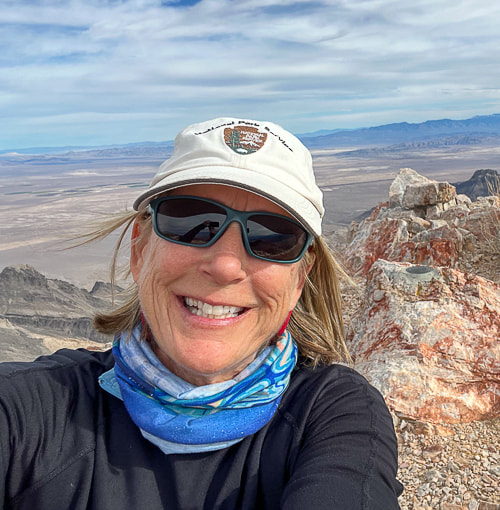|
Unravelling the mysteries of two unique, older petroglyph sites that I found along the Santa Clara River in Utah. Abstract petroglyph overlooking the Santa Clara River in the Santa Clara River Reserve.
This design closely resembles an Ancestral Puebloan (formerly Anasazi) petroglyph found in Arizona. Checkerboard designs are associated with Glen Canyon Style 5 made before 1050 A.D. by Ancestral Puebloans including Basketmaker cuture. Related Posts:
Trip Stats Location: Santa Clara River Reserve near Ivins and Santa Clara, Utah - Land Hill. Trailheads: Anasazi Valley Trailhead (north) and Tukupetsi Trailhead (south). Distance: The distance that includes all of the petroglyphs described here is ~ 5+ miles (top of Land Hill and along the Santa Clara River). Some interesting books: A Field Guide to Rock Art Symbols of the Greater Southwest by Alex Patterson. Early Rock Art of the American West: The Geometric Enigma by Ekkehart Malotki and Ellen Dissanayake. The Rock Art of Utah by Polly Schaafsma Links: Santa Clara River Reserve Map Santa Clara/Land Hill is designated as an Area of Critical Environmental Concern (ACEC). Geology: Petroglyphs are located in the oldest rocks of the Santa Clara Quadrangle Geologic Map: - Shinarump Member Upper Sandstone unit and Shinarump Conglomerate Member of the Chinle Formation: Upper Triassic (~ 200 million years ago). Petroglyphs in sandstone and dinosaur tracks in conglomerate. -Cliffs below Land Hill along the Santa Clara River: Upper Red Member of the Moenkopi Formation: Lower Triassic (~ 250 million years ago). The fascinating rock art on the Tempi'po'op Trail (Anasazi Valley Trail) in Ivins, Utah, made by the Virgin Ancestral Puebloan and Southern Paiute cultures thousands of years ago can be discovered for more than two miles along the cliffs of Land Hill, overlooking the Santa Clara River. Additionally, many more petroglyphs are pecked into huge boulders and sheer walls beneath Land Hill, next to the river. Each time I explore this part of the Santa Clara River Reserve, I find new petroglyphs. On a recent wander, I discovered two intriguing petroglyph sites that I had previously passed by.
Five bighorn sheep on the right side of the boulder along with two large columns made with parallel vertical lines bisected incrementally with horizontal lines are pecked next to the older-appearing, lichen-filled and more highly eroded geometric glyphs. Who made these abstract/geometric petroglyphs and what do they "mean"? Various theories include shamanistic visions, recording of phosphenes, and communication of vital information like water sources. The Paiute word for them, Tumpituxwinap, translates roughly as "storied rocks."
Huge boulder on flat area near Santa Clara River predominated by abstract/geometric petroglyphs, possibly of the Great Basin Curvilinear and Rectilinear style. The right side of the boulder; these deer and sheep petroglyphs seem to be younger than those on the left side because they are not as eroded. The plant-like image (upper left) looks like a corn tassle to me. Petroglyph on top of boulder (left). It reminds me of a necklace: it's similar to those that are pecked into a boulder nearby. It looks like a chain of circles, which might indicate the Great Basin Curvilinear style. In Search of the Rattlesnake Petroglyph. Back of boulder with what I could find as the easiest route to the top.
Phosphenes are lately being proposed by scientists as the catalyst for the creation of abstract designs. All humans experience phosphenes that occur during hyperventilation, migraine headaches, meditation, use of hallucinatory drugs, fatigue and hunger and pressure put on a closed eye. The idea is that geometric petroglyphs and pictographs depict an innate visual grammar (Engel in Fein, 1993) that we all share, ingrained in the biology of our brains. My earlier post Corn Springs Petroglyphs: Vision Quests, Steamboats, and Ringing Rocks explains a few theories for the creation of the Western Archaic Tradition rock art. The Santa Clara Boulder and the "Abstract Enigma" I found two photos of petroglyphs very similar to that of the spoked circle design on the large boulder by the river. One illustrates the Western Virgin Kayenta style and the other illustrates Great Basin Carved Abstract petroglyphs. This spoked circle seems less prevalent than the spiral petroglyphs that appear frequently on the cliffs above the river. Great Basin Abstract tradition rock art spans the Archaic and the Late Prehistoric (8,000-150 years ago). The Great Basin Carved Abstract style occurs in St. George, Utah area. It's characterized by purely geometric petroglyphs that fill boulders so that little unmarked space is left. Art includes various circle configurations, grooves, grids, lattices, herringbone shapes, ladder-like shapes, chevron, hatchmarks and dots. This boulder along the Santa Clara River contains some of these elements. Since this style is found not only in Nevada's Great Basin, but throughout the American West, some scientists call it "Carved Abstract". The rows of vertical lines cut with horizontal lines, surrounded by a line are similar to "gridiron" petroglyphs seen in New Mexico. The parallel wavy lines above the spoked circle are considered Great Basin Curvilinear, which I read is another way to say Great Basin Carved Abstract. The grids and cross-hatchings, and perpendicular form is known as "rectilinear." These styles are associated with the Archaic style and also occur in styles associated with Puebloan and Fremont groups. Two authors state that the Great Basin Abstract petroglyphs appear to be made as a part of "magic hunting ritual and were related to subsistence practices..." (Heizer and Baumhoff). Abstract designs predominate this style, with a limited depiction of animals. The most common animal portrayed is the bighorn sheep. I also noticed what appeared to be cupules (pit and groove style) on the back side of the boulder. Or are these holes just natural weathering? Or both? One pit placed on the side of the boulder looks too symmetrical to be made by weathering. Theories for their creation include fertility enhancement and the use of powder produced from making them. Cupules or natural weathering? Cupules are associated with very early Carved Abstract Style. It's assumed that cupule sites identify places of significance. Anthropomorphic (Human-like) petroglyph on a flat boulder near the Een'oog Trail and the cliffs overlooking the Santa Clara River. Size is ~ 14 inches tall. Is a Snake Biting the Figure with the Drooping Hands? The second amazing petroglyph I found is on top of Land Hill along the Een'oog Trail, on the cliffs above the Santa Clara River. It's totally repatinated, blends into the rock, so it's easily missed (see above). Its drooping arms, termed "pendant" by scientists, round head, hair bobs, long rectangular or slightly trapezoidal (wider at the shoulders), and feet and hands pointing down match the description I found of the Anasazi Basketmaker culture - 500 BC - 800 AD. The term "Anasazi" has now been replaced by "Ancestral Puebloan." A serpentine-like line winds its way from the left side of the figure to the figure's leg. These “representational” styles are typically associated with Fremont and Western Puebloan cultures (ca. 2,000-750 years ago) in southeastern Nevada, Utah, and the Colorado Plateau. These semi-horticultural groups made rock art that featured human-like forms portrayed by trapezoidal, rectangular, or triangular body shapes. These were often portrayed with bodily decoration such as headgear, jewelry, or decorated clothing. In my research, I found the Classic Vernal-Style (a sub-set of Fremont Style) Anthropomorph has large heads and trapezoidal torsos with well-defined extremities. The Fremont style tends to have round earbobs and arms and hands held down, commonly with splayed fingers. In western Utah, there is an intermix of Great Basin Curvilinear and Fremont styles. Ancestral Puebloan farmers lived in the Land Hill area in permanent settlements ~ 1,000 years ago. The Santa Clara River gave them a good water supply to irrigate their crops. During A.D. 700 - 1100, population on Land Hill thrived, but then around 1200 A.D., population decreased possibly due to changing climatic conditions. I found an old corn cob in a grassy area beneath the cliffs next to the river (see photo below). Every kernel had been removed. It couldn't have survived hundreds of years! Or could it have been exhumed after the record-setting rains of 2022-2023 that caused a major landslide at an area close to it? A Land Rich in Culture, Stories, and Mystery Dinosaur tracks have been documented on Land Hill. At first glance, you wouldn't imagine that the Santa Clara River Reserve holds so many stories among its cliffs, plateaus, and rock art. If you look closely, you will see abstract and representational communication made by different cultures during different times. In my quest to figure out who made these fascinating petroglyphs and why, I realize that if anything, they still remain an enigma. I'll let you know if I find the dinosaur tracks and more corn cobs! Keep Exploring! When I went to look at the figure with the round head and the ear bobs again (lower right), I shared the petroglyph rock with a goose. Petroglyphs (walls on right) overlooking the Santa Clara River. Land Hill on the right and a path that runs along the Santa Clara River. Beaver Dam Mountains in the distance. Petroglyphs are found on the flat surface rocks, in the steep cliffs of Land Hill, and on boulders along the river. Finding a route down from the top of Land Hill with my friend Laura. We are headed to the Santa Clara River below. Notice the Shinarump conglomerate rock in the right foreground. When we got near the river, we found this boulder with what looks like Great Basin Curvilinear style and a family of anthropomorphs (human-like) figures. Petroglyphs on the Anasazi Valley Trail in Ivins, Utah. The Glen Canyon Style 5 (Ethnic groups are Early Puebloan and Basketmaker). Bighorn sheep have large rectangular bodies disproportionately large compared to their small heads, tail and legs. Laura and some really cool sandstone boulders along the Santa Clara River. Some Cool Stuff on the Trail Clockwise from upper left: slickensides created from scraping against other rocks in a fault, bivalve fossil near the Een'oog Trail, a corn cob, a desert-varnished panel on an eroded sandstone boulder. Sandstone boulder detail. References Bureau of Land Management. Land Hill Heritage Site. Malotki, Ekkehart. The Rock Art of Arizona: Art for LIfe's Sake. From website: Bradshaw Foundation. Mangum, M.E. 2018. Lithics and Mobility at Land Hill and Hidden Hills: A Study of the Stone Tools and Debitage at Sites in the Santa Clara River Basin and on the Shivwits Plateau. Brigham Young University ProQuest Dissertations Publishing, 2018. 28107515. National Park Service. Reading Rock Markings. Schaafsma, P. 1971. The Rock Art of Utah. Scotter, T. Bowen , N. 2017. The Rock Art of Utah. The Nevada Rock Art Foundation - Styles and Themes Willis, J.C., Hayden, J.M. 2015. Geologic Map of the Santa Clara Quadrangle, Washington County, Utah.
6 Comments
This prominent gap in the Red Hills has one of the most abundant collections of American West petroglyphs, including the most unusual of all - the Zipper Glyph.
Iconic Parowan - the "Zipper Glyph"
Interpretations of this petroglyph include a solar calendar because it has 180 notches coinciding with the 180 days it takes for the sun to move between summer and winter solstices. The Paiute Indian Tribe of Utah interprets this as the story of a great Leader during a migration where many people experienced famine, drought, water crossings, cold and ice.
Trip Stats
Overview: At the western edge of the Parowan Gap, in the "Narrows", over 1,500 petroglyphs made by different indigenous cultures are carved in the Navajo sandstone. Location: Parowan, Utah, just north of Cedar City, in the Red Hills west of Little Salt Lake. Petroglyphs are in the notch at the west end of Parowan Gap. Managed by Bureau of Land Management. Petroglyph Coordinates: 37.909722 112.985556 Native Americans: Fremont culture, Paiute, Hopi. Recognition: Listed on National Register of Historic Places. Geology: the petroglyphs are pecked into Jurassic Navajo sandstone, deposited 190 million years ago.
Related Posts:
Petroglyph "Heaven"
To rock art aficionados, Parowan Gap must be petroglyph heaven, not only because of its famous "Zipper Glyph", but also the amazing quality and number of petroglyphs there - rock after rock, panel after panel (90 of them!). Some believe that this site has the most concentrated petroglyph assemblage of any in the American west. Some of the rock carvings may be as old as 5,000 years, the majority of them made by the people of the Fremont culture. To today's Paiute and Hopi tribes, this is a spiritual site. The Parowan Gap is a stream-cut valley and narrows through the Red Hills, just west of Little Salt Lake, north of Cedar City, and 10 miles northwest of Parowan, Utah. The petroglyphs are located in a dramatic V-shaped notch at the western edge of this gap, a great place for indigenous peoples to carve their petroglyphs during their migrations. I was looking forward to seeing the Zipper Glyph in person. With two "arms" and 180 notches, people who believe in the astroarchaeological (AKA archaeoastronomy) interpretation see this mysterious petroglyph as a solar calendar. If you look closely at the Zipper Glyph, it resembles the notch in the Parowan Gap. It is believed that this glyph is a map with relating equinoxes and solstices. However, the modern Paiute Tribe of Utah had a different interpretation: a migration of the old world to the new. The Paiutes say that the Zipper Glyph represents a long trail of hardship in which their great Leader was killed. The two "arms" in this case are the Leader's body shown upside down with his head at the bottom.
An interpretive sign illustrating the belief that the "Zipper Glyph" was used to chart celestial movements.
Interpretive sign that describes the Utah Paiute Tribe's interpretation of the Zipper Glyph.
Parowan is nicknamed "the Mother Town of the Southwest." It's a city that has gone through a lot of changes since it first began mining iron in the 1800's. Now its main industries are tourism and recreation, including Brian Head, a year-round resort where we like to go skiing. It was first called "City of Little Salt Lake," because of its proximity to Little Salt Lake, a now salty playa to its west. It was renamed "Parowan," a native American word meaning "evil water." This lake is a key geographic feature relating to the formation of the Parowan Gap.
Fred and I had just hiked the astonishing Cosmic Ashtray in Grand Staircase-Escalante the day before, so we were on our way home. I had to talk him into seeing Parowan Gap; he doesn't normally want to go too far out of the way to see petroglyphs but with these he was pretty darn impressed. On the same Grand Staircase trip, we also hiked to a huge petroglyph panel along the Escalante River in Grand Staircase-Escalante National Monument, near the opening to Neon Canyon. Bear paws march up out of sight on this tall rock face, a rattlesnake slithers, and Fremont-culture warriors stand as just a few petroglyph examples. If you don't mind slogging through four miles of sand and slick rock, wading, and navigating, you can find these remote glyphs. It's believed that the Fremont culture made most of the Parowan Gap rock carvings 700-1,500 years ago, although the area has been inhabited for thousands of years before that. Typically the designs are abstract and geometric, although there are some lizards, snakes, and mountain sheep pecked into the Jurassic Navajo sandstone. Many petroglyphs are located very high, out of reach on the hillside. Check it out - you won't be disappointed! The interpretive signs make this a nice site. A great place to go afterwards if you are hungry is Centro Woodfired Pizzeria in downtown Cedar City.
Keep on Exploring!
For the Geo-curious: Creation of a Unique Land Feature
So, what created this peculiar notch in the hills — so noteworthy that ancient peoples over hundreds of years decided to engrave hundreds of petroglyphs as they migrated through the area? Two clues — the gap's rock orientation and Little Salt Lake help geologists to make sense of its creation. The ancient stream that for millions of years carved this gap through the Red Hills on its westward journey to the Great Basin became blocked by the rising Red Hills fault block. Its flow then accumulated to form Little Salt Lake, just east of the Parowan Gap. Either the fault block rose too quickly for the stream to keep incising through the rocks, or the region became drier and the stream had less volume, or both. Clues that faulting occurred are seen in the rock layers. North-south trending faults through the Red Hills caused east-dipping and west-dipping beds; some were left in their original horizontal position. The rocks here — Claron Formation (dominant Bryce Canyon rock), Navajo Sandstone (Zion's main rock), Carmel Formation, Iron Springs and Grand Castle formations first underwent mountain-building during the Sevier Orogeny 45-100 million years ago, when the Pacific tectonic plate collided and slid under the North American plate. The stream through Parowan Gap then carved a passage through the Red Hills. More recently, beginning 20 million years ago, Basin and Range extension (stretching of Earth's crust) began, which caused the Red Hills fault block to rise, blocking off the Parowan Gap stream's passage. Water collected to form Little Salt Lake, now a playa (a dried-up lake).
Geologic Map of Parowan Gap Quadrangle (USGS).
Little Salt Lake (lower right) was formed when the westbound stream that created the Parowan Gap (larger yellow, curving line (lower left) became blocked by the rising Red Hills. Note the parallel dark lines (faults) running mostly north-south and the long line extending from middle bottom to top right (Red Hills Fault), raising that fault block and providing a barrier to stream flow westward .
The "narrows" at the west end of the Parowan Gap. Ancient waters carved this opening in the Red Hills.
Extensive abstract petroglyphs on both sides of Gap Road, which passes through the Parowan Gap.
Interpretation of the panel above by Paiute Indian Tribe of Utah, from interpretive signs at the site.
Another Parowan Gap interpretive sign.
References:
Maldonado, F., et al. Geologic Map of the Parowan Gap Quadrangle, Iron County, Utah. U.S. Geological Survey. Wilkerson, C. 2018. Geosights: Parowan Gap, Iron County. Orndorff, R.L., et al. Geology Underfoot in Southern Utah. 2020. Mountain Press Publishing Company. Parowan City Corportation website. Wadsworth, Rueben. 2019. Parowan Gap day; Interpretations and Mysteries of a Petroglyph Heaven. Cedar City News Archives. A four-mile journey across pristine slickrock brings you to this wondrous geologic feature in remote Grand Staircase-Escalante National Monument. Nearby, a huge petroglyph panel representing various cultures looks over the Escalante River near Neon Canyon. The Cosmic Ashtray, aka Cosmic Navel - a huge 200-foot wide pothole filled with orange sand. Small sample of many petroglyphs on huge panel near the confluence of Neon Canyon and Escalante River.
Cosmic Ashtray The Cosmic Ashtray, AKA "Cosmic Navel" is an astonishing sight to behold after a suspenseful four-mile hike across a sea of slick rock, when it suddenly appears as a huge white sandstone pothole filled with deep orange sand, a large rock stashed inside it. This "weathering pit", also called "Inselberg (island mountain) Pit" because of its 10-meter high rock pedestal is the largest on Earth. It has erosional features that resemble similar discoveries on Mars. Wind continually changes the pit dune's orange sand shape and depth. Based on Colorado River erosion rates, a study estimates this pit is 216,000 years old. We talked to a bartender, a life-long Escalante rancher who had hiked Cosmic a few times. He has climbed into the pit sand by tying a rope to a shrub! We didn't find a hook in the pit wall. We got to talking about Hole-In-the-Rock Road, one of the few that gives access to Grand Staircase-Escalante and the Egypt trailhead we used for Golden Cathedral. After we complained that the road was very wash-boardy and rough, he said the county (Garfield) used to keep it in better condition before it became a National Monument. We've been down this road several times and this time it appeared to be in the worst condition. If you look at an aerial photo of the Cosmic Ashtray (check out the Netoff study), an open tunnel into the pit indicates wind has carved this channel smooth, creating wind-abraded flutes on its sandstone walls. Cosmic Ashtray is situated on a topographical high, between bedrock knobs. Wind funnels through these sandstone knobs enhancing wind speed (the Venturi effect). The orange dune sand comes from distant areas; it's larger-grained and therefore heavier than the sand of the eroded pit walls, so it accumulates in the pit. Fred hadn't seen photos of the Cosmic Ashtray weathering pit so he was amazed when we came upon it. The beautiful journey across miles of undulating bare Navajo sandstone makes you feel small and remote in the middle of the Jurassic-age buttes, knobs, and deep, narrow canyons. Moqui marbles, black embedded half-shells of iron concretions, and weird stained patterns pop up in the bleached and orange slick rock. Polygonal fractures that resemble honeycombs decorate the white sandstone all the way to the top. It will be fun to take friends next time without showing them a "preview" of Cosmic Ashtray just to see their astonishment at the sight of it. A sequence of ducks (small rock pile trail markers) led us up a steep pitch where Cosmic slowly came into view as we climbed to a lookout (Point 5847). At first, the northern-facing pit wall appears, followed by the tip of the pedestal rock in its center, and then finally its orange sand pit. Great vantage point for photos. Then you can climb back down and access the pit from its north entrance.
Deeply pecked abstract geometric petroglyphs from the Archaic culture (3,000 BCE) have been on this wall for so long that they are "re-patinated," or covered with dark desert varnish. Glen Canyon linear style anthropomorphs (resembling humans), and animals make up most of the glyphs. Bear paws and human feet march to the top of the slab. Ancestral Puebloans pecked bighorn sheep and broad-shouldered anthropomorphs during 1,000 BCE - 550 CE. We approached Neon Canyon from the Egypt trailhead along the "standard" trail which entailed three or four Escalante River crossings. BEWARE OF QUICKSAND when walking in low water levels. Our plan next time is to hike the Beeline route from Egypt trailhead to Golden Cathedral - this means only one river crossing near Neon Canyon entrance. With each Grand Staircase/Escalante visit, our list of places to explore expands as this spectacular ever-changing land seems to do. As I write this, I'm sitting in Las Vegas airport waiting for a Chicago flight. I keep thinking of the magnificent land of Grand Staircase-Escalante, feel a yearning to return to it. As its silty yellow and orange rivers flow, the scent of pine and juniper fill its air, and its landscape turns bright orange and vermillion with sunrises and sunsets, I wish I was there to see it. As always, so much to see and do, so little time.... Cosmic Ashtray Images The "Cosmic Ashtray" is an inselberg pit (insel = island, berg = mountain in German). The orange sand blows in from remote places. The center pedestal is ~ 10 meters high. Climb knob 5847 to the north for a good view of its sand dune. photo by Fred Birnbaum View of Red Breaks during first mile of hike. Vast juniper-dotted slickrock sea to the north. Indian Ricegrass haven and the Red Breaks. One beautiful reminder of life cycles in the slickrock desert. So many eroded Navajo sandstone features. Looking north toward flat "meadow." Potholes, tinajas, waterpockets, ephemeral pools are all names for these eroded sandstone depressions. Following duck trail markers to the top of Point 5847 that looks directly into Cosmic Ashtray. The "unveiling" of Cosmic Ashtray, aka Inselberg Pit from Point 5847. Moqui marbles and other weathered-out iron concretions making an interesting pattern. Movement of fluids through sandstones, especially Navajo Sandstone can create "bleaching" or removal of hematite (white bands). Neon Canyon/Escalante River Petroglyphs Looking down at "Egypt" from the trailhead. The route goes through alternating sand and slickrock. Aim toward the dark round dome upper left in photo - along the Escalante River. Neon Canyon's opening is at the base of this dome. I couldn't find the origin of the name "Egypt". This is an old stock route, so possibly an original rancher, upon seeing this wide, sandy bench said, "Sure the heck looks like Egypt!" Walking from Egypt Bench into Fence Canyon, which empties into Escalante River. Dropping into Fence Canyon, where a short hike leads to Escalante River for a short river walk. Short Escalante River wade before catching trail on right side of river. These abstract petroglyphs are more deeply incised and re-patinated (covered with desert varnish); they probably older than the anthropomorphic (representing humans) petroglyphs seen on left side of panel. Lots of petroglyphs superimposed over older ones. Some of the more recent are from cowboy Charles Hall in 1881, who made his cursive signature under the undulating snake petroglyph. These petroglyphs are located toward the left part of the panel and are lighter (desert varnish has not fully re-covered them), so they are probably made more recently than the abstract, re-patinated images. Hiking on Beeline Trail out of Escalante River, back to the trailhead. Petroglyph panel on left side of photo, Neon Canyon opening in notch below the round dome, aka Point 5,270'. Duck (left) marking the Beeline Trail back to trailhead. Related posts
The Fremont culture's expressions in volcanic rock, explosive geology, and a peaceful stay at Castle Rock Campground.
Fremont Indian State Park's Sheep Shelter, an alcove that uses a mirror to view its petroglyphs. Semi-circles and dots pecked on a line that extends the length of the alcove wall may have represented observations of the sky.
"Castles" at Castle Rock Campground weathering out of the Sevier River Formation that's made of sediments including ash, sandstones, siltstones, and lava flows.
Trip Stats
Overview: Massive volcanic ash ejections 19 million years ago provide the "canvas" on which the Fremont peoples carved numerous petroglyphs along Clear Creek Canyon, an ancient passageway between Utah's northern Pahvant range and the southern Tushar mountains. On the other side of Clear Creek, Castle Rock Campground's weathered sediment hoodoos make a unique backdrop to explore. Location: Central Utah - Fishlake National Forest - Tushar Mountains - Clear Creek Canyon along Interstate 70. Dates visited: May 27-30, 2023 Trails: most petroglyph sites involve short hikes on dirt/gravel. The Alma Christensen Nature Trail is a one-mile loop that hooks up to the petroglyph-viewing trails close to the museum. Google Map for Fremont Indian State Park and Castle Rock Campground: Closest town is Richfield, Utah. Exit 17 from Interstate 70 - take FR478: on south side is Castle Rock and on north side is Fremont Indian SP. Additional links: Fremont Indian State Park Brochure, Castle Rock Campground, Geologic History of Fremont Indian SP Books to Read:
- Kenneth Olsen Kohler
Related Posts:
As mysterious as some of their rock art is, much of the ancient Fremont culture who lived in Utah ~ 300 - 1,300 A.D. also remains an enigma. Archaeologists use the word "Fremont" to refer to a "culture" or a "label," not a homogenous people because the Fremont territory included many ethnic groups and linguistic variation. "Fremont" is a generic term for people that lived in varied geographical locations, and had a diversity of lifestyles but seemed to have shared behavioral patterns such as subsistence. Some people were settled farmers; some were nomads that hunted and gathered; and some may have moved between these lifestyles. David B. Madsen, in his book Exploring the Fremont describes the Fremont lifestyle one of "variation and flexibility." They lived in natural rock shelters and pit houses dug into the ground, covered with brush roofs.
Four distinctive artifact classifications distinguish the Fremont from other prehistoric societies:
Since I love pottery (Fred says that our home can't fit any more pots!), I found an interesting Masters thesis, Fremont Ceramic Designs and their Implications by Katie K. Richards that was well worth the read if you are interested in the Fremont pottery and the evolution of research and archaeologists' changing philosophies about the Fremont throughout the decades since the late 1920's, when this culture was first identified along the Fremont River in south-central Utah. This article has a lot of great museum photos of Fremont pottery.
Fremont Indian State Park
I got the idea to visit Fremont Indian State Park after seeing it just off Interstate 70, coming back from the San Rafael Swell near Green River, Utah. I had read about this park in Geology Underfoot in Southern Utah, an informative book that features 33 "vignettes," three of which describe geology at Fremont Indian State Park and nearby Castle Rock Campground, where we stayed a few nights. Fred and I had already explored some of the places highlighted in this book, and I vowed to explore the rest of them, using it as a guide. Well, here's the first! I've seen petroglyphs carved into sandstone, basalt and granite, but not into tuff, a type of rock made of compacted ash as these are at Fremont Indian State Park, along Clear Creek. Why did the Fremont peoples carve so many petroglyphs along this Clear Creek Canyon corridor? Clear Creek provided ample water, and an old village with artifacts was uncovered during the excavations for building Interstate 70. This valley was a natural route between northern and southern mountains.
Voluminous amounts, ~ 150 cubic kilometers of ash flow explosively extruded from present-day Mt. Belknap to the south to fill the ancient Clear Creek Valley 19 million years ago. The ash was so hot - at least 1,100° F - that it "welded" and produced solid rock - hence the name "welded tuff." This rock, on which the Fremont peoples carved their petroglyphs is called the Joe Lott Tuff, named for an early Mormon pioneer who settled in this Canyon, building a cabin with orchards in the 1880's. When you look closely at this rock you can see the angular rock fragments of granite, biotite, feldspar, and pumice.
Petroglyphs carved into tuff at Fremont Indian State Park.
Being the geology nerd I am, the towering columnar cliffs, part of the Joe Lott Tuff near the east end of Clear Creek Canyon Road proved interesting. The six-sided columns are broken off at various heights along the walls where weaker bonds in the rock succumbed to erosion. These are jointed ignimbrites - thick, massive, lava-like sheets of volcanic rocks made mostly of glass particles. The process for this columnar jointing: volcanic eruption and ash flow --> cooling lava --> stress caused by cooling --> contracting lava forming cracks --> growing crack perpendicular to surface of flow --> columns are formed --> erosion and change --> columns break and tumble.
Columnar jointing in the volcanic Joe Lott Tuff. When this lava flow was cooling, vertical fractures developed to create the six-sided columns. Clear Creek Canyon has cut down through this tuff; erosion continues causing the columns to fall.
Claret cup hedgehog cactus and circular petroglyph on the Canyon of Life Rock Art Trail.
I liked the many petroglyph sites and their variations; some were close to the road but most involved short-distance hikes, enough to keep us busy the entire day. Outdoor interpretive signs at the museum present a time-line of the petroglyphs in this canyon and key components to look for in the designs made during different time-periods, with the Great Basin Abstract style being the oldest type (1,000 B.C.E.) in this area.
Fremont Indian State Park Petroglyphs
Cave of a Hundred Hands has 31 handprints. Metal bars protect it from further defacing.
Unless you want to climb the rocks across the freeway, you view this pictograph from binoculars or the view pipe provided at the viewpoint. It's called a blanket because it reminded the first Mormon Settlers of a blanket design.
Castle Rock Campground (Map)
Castle Rock Campground is located just a few miles from Fremont Indian SP, in the volcanic Tushar Mountains. Last year we shared this range's highest peaks, Delano Peak and Mount Holly, with mountain goats in a wind storm. It felt good to be among the pines, cottonwoods and junipers in this clean campground. Eroded rock towers, AKA "hoodoos" or in this case "castles" provide an interesting backdrop. Mix in the soothing sounds of Joe Lott Creek flowing near many campsites and you've got a relaxing, back-to-nature getaway. Geology Underfoot instructed us to go behind campsite 23 to view the sediments of the hoodoos from the Sevier River formation, deposited between 15 and 4 million years ago by streams and sculpted by wind, water and ice. Right away I saw a pile of white ash mixed with sediments on the ground along with dark grey rocks that had weathered out of the walls. These hoodoo walls, when touched, crumble easily because these sediments have poor cementation. Periodic ash fall deposits blanketed these sediments; you can actually see two bright white ash layers, one near the top and the other near the bottom of these hoodoos. Another striking feature of these hoodoos is their interesting shapes caused by vertical carving and channeling. This Clear Creek drainage was uplifted because of Great Basin faulting that continues today. This uplift produced a slope, and the stream was invigorated, washing away the soft, poorly-cemented rock of this formation. Where there is a weakness in the rock, a small channel is started; heavy rains become concentrated in these channels, causing them to grow. So, the Sevier River formation was deposited onto an eroded Joe Lott Tuff, illustrating the law of superposition in stratigraphy - that is, the older layer of rock is under the younger layer. This principle is turned on its head, so to speak, however in the presence of compressive thrust faults that push older rocks over younger rocks, but not in this area. Oh be Joyful This is the actual name of a trail out of Crested Butte, Colorado that Fred and I have hiked a few times in July among the wildflowers. "Joyful" and "grateful" describe how I feel when we get to explore these intriguing Utah places, are able to use our legs to see incredible sights in person, and our imagination to wonder about the person who carved the petroglyph in the tuff hundreds of years ago. We've got 30 more Geology Underfoot locations to explore, including Valley of the Gods, the Goosenecks of the San Juan River, and the Virgin Anticline. Plus getting up to more Utah summits! How are we going to fit everything in?
"One night, a full moon watched over me like a mother. In the blue light of the basin, I saw a petroglyph on a large boulder. It was spiral. I placed the tip of my finger on the center and began tracing the coil around and around. It spun off the rock. My finger kept circling the land, the lake, the sky. The spiral became larger and larger until it became a dance of stars in the night sky above Stansbury Island. A meteor flashed and as quickly disappeared. The waves continued to hiss and retreat, hiss and retreat. In the West Desert of the Great Basin, I was not alone."
Terry Tempest Williams - from Exploring the Fremont
Never Stop Exploring!
Sevier River formation - layers of basin-fill deposits
Crumbling hoodoos (left), and a close-up of large rocks embedded in the walls (right), indicating more powerful water flow caused by storm events when these were deposited.
A chunk of ash (foreground) mixed with sediments that has weathered out of the eroded Sevier River formation. Note the layer of white ash present near the bottom of these hoodoos.
Interesting shapes in the Joe Lott Tuff.
"Castles" at Castle Rock Campground. Large dark volcanic rocks that protrude from their walls attest to the power of water flow during large storm events.
Claret Cup Hedgehog
Tuff texture - honeycomb weathering
Joe Lott Creek - Trail #051 goes from the south end of Castle Rock Campground to the Silver King Mine interpretive area.
One source said that Joe Lott helped build the arastras that ground the silver ore produced from the mine.
References
Case, W. Geosights: Fremont Indian State Park, Sevier County, Utah (from Utah Geological Survey website, vo. 42 #2, May 2010. Cunningham, C.G., Steven, T. A. 1979. Mount Belknap and Red Hills Calderas and Associated Rocks, Marysvale Volcanic Field, West-Central Utah. U.S. Dept. of the Interior - Geological Survey. Fremont Indian State Park Trail Guide. State of Utah Office of Museum Services. The Historical Marker Database - Pioneering Utah Madsen, D. B. 1989. Exploring the Fremont. Utah Museum of Natural History. Orndorff, R.L., et al. 2006. Geology Underfoot in Southern Utah. Mountain Press Publishing Company, Missoula, Montana. Simms, S. R. 4/22/2016. The Fremont Period. From historytogo.utah.gov website.
Utah's quiet San Rafael Swell has awe-inspiring Archaic Period pictographs and the alleged "winged monster" high on the walls of Black Dragon Canyon.
Temple Mountain Wash pictographs near Goblin Valley State Park
These figures are Barrier Canyon Style and date to the Archaic Period: several proposed dates include as far back as 8,000 BC or a younger time of 1,100 AD (see interpretive sign below).
Trip Stats
Black Dragon Canyon: (Northeastern San Rafael Reef) Driving west on I-70, 12.5 miles from Green River, Utah, turn off at mile marker 147 onto a dirt road with a closed gate. Close the gate after entering. The road quickly crosses over the wash on the left. We went a short distance along the right side of the wash until we found a better crossing and got back on the main, well-traveled road that heads north in the direction of the reef. The entrance to Black Dragon Wash is on the left at the Mexican Mountain Wilderness sign, 1.1 mile from the interstate. We drove 4x4 truck on good sand to the fenced at base of pictographs and parked. Temple Mountain Wash: (Southeastern San Rafael Reef) From Green River, Utah on I-70, travel west to the junction with highway 24 that goes to Hanksville. Go toward Hanksville (south) for about 25 miles to Mile Post 135. Turn left (west) at road to Goblin Valley State Park and drive 5.1 miles to junction. Drive straight for 1.0 mile - the panel is on your right with an interpretive sign. Maps/Books: Hiking and Exploring Utah's San Rafael Swell by Michael R. Kelsey/San Rafael Swell Map (Price Field Office)- National Geographic Trails Illustrated #712. Dates Hiked: May 9-11, 2023.
Utah I-70 piercing the San Rafael Reef (tilted light sandstone).
The Swell was caused by a vertical fault in ancient Precambrian basement rocks that lifted the western block higher than the eastern block of the fault, causing the younger layers of overlying rocks to drape over the fault zone creating an anticline, or "swell".
The San Rafael Swell and its near-vertical tilted sandstone beds named the San Rafael Reef is a Utah adventurer's paradise. Many steep and scenic canyons like Crack, Chute, and Zero Gravity cut through the reef. There's the Upper and Lower Black Boxes, old homesteads, mines, the San Rafael Knob, pictographs and petroglyphs from Archaic and Fremont cultures. The last time Fred and I visited this area, we stayed in Goblin Valley Campground and explored the Archaic Great Gallery/Holy Ghost pictograph panels in remote Horseshoe Canyon.
You're on your own in this remote part of Utah; there aren't many services, campgrounds or signs in the San Rafael Recreation Area (which has several official Wilderness Areas). And not many people ;). We barely scratched the surface with a few hikes and petroglyph/pictograph viewings. We trailer-camped in nearby Green Valley, Utah. One day, we stumbled upon the amazing Temple Mountain Wash pictographs when driving to hike Wild Horse Creek Trail. You can see where much of the pictograph panel has spalled off because of the elements of water and minerals. On another day, we drove the sandy roads to see the Spring Canyon petroglyphs and the Black Dragon Canyon pictographs and then walked up-canyon from there. It was here we saw the fabled "winged monster", a disconcerting pictograph that prompted scientists to unravel its mystery.
Temple Mountain Wash panel
These pictographs are Fremont style (AD 100 - AD 1300) and located to the left of the Barrier Canyon pictographs (above). Spalling, the breaking off of the surface of the rock, has removed previously-painted pictographs.
Interpretive sign at the site.
The "Dragon" Controversy In Black Dragon Canyon: a winged monster, a man, a grebe - what is it?
The sandy road leading to the pictographs in high-walled Black Dragon Canyon was in good shape, so we were able to park in the large space adjacent to these astounding pictographs. The left-most figures are in the characteristic Archaic Barrier Canyon style, with tall dark red mysterious-looking figures. To the right of these are Fremont Style pictographs featuring animals, abstract lines including concentric circles, lines, dots and zig-zags. It's always fun to imagine how the native peoples applied these red pigments. In this case, however, it wasn't fun to see the annoying white chalk lines drawn around some of the weathered pictographs. A large rockfall under the Archaic pictographs allowed the creators to paint their images high on the wall. There's a camera present with a sign. With apparent wings and a long tail, an unusual pictograph looks like a dragon/dinosaur creature, hence the name Black Dragon Canyon. In 1928, it got a reputation as a "winged monster", when amateurs discovered it. In the 1940's, John Simonson drew a chalk line defining his interpretation of a winged monster or dragon, and published a paper describing his methods. Decades later, a geologist said it resembled a pterodactyl, so the Young Earth Creationists started using this as evidence that Native Americans and pterodactyls lived at the same time.
The "dragon" in Black Dragon Canyon - mistaken identity
Chalk lines drawn around separate Fremont style pictographs to define a dragon. Modern diagnostic techniques revealed five separate pictographs that were previously outlined together as one "winged monster" - possibly a pterodactyl. For instance, the "head" of this creature is actually a supplicating man. (I didn't include the furthest-left pictograph in this photo).
Enter modern technology: diagnostic tools to image the red pigment and iron that has faded over the years and not seen by the human eye. Dstretch enhances photographs of pictographs by revealing faded pigments, and x-ray fluorescence measures the iron concentration in the red pigment to see where Native Americans applied the pigment to the rock.
Conclusion: There are five separate pictographs encircled by the white chalk outline (see Dstretch illustration below), so the single "winged monster" pictograph has been debunked. From left to right: a bighorn sheep, a dog, a large, bug-eyed anthropomorph with a snake in his hand, a small man bent at the waist in supplication with his arms outstretched, and a large, sinuous horned snake. All five are the Barrier Canyon style. Simonson had converted the small man pictograph into the head and neck of a dragon.
I also found a paper (no date, but spoke of trips to the site in the 1990's) that stated this pictograph is a representation of an eared grebe, a type of waterfoul that breeds in the area and may have been hunted. The person who painted it may have been summoning the spirit of the grebe to bring more water. But now this interpretation has been debunked.
Photo of an eared grebe courtesy of the Cornell Lab of Ornithology - Macaulay Library.
Dstretch technique illustration of all five of the images found in the "dragon" pictograph in Black Dragon Canyon
(from left to right): Bighorn sheep, dog, a tall figure, a smaller figure with arms outstretched in supplication, and a horned snake. Chalk lines currently include all of these pictographs into one image of a "dragon". Compare this to the now-discredited "dragon" above. (I drew this image from a photo in "The Death of a Pterodactyl," by Jean-Loïc Le Quellec, Paul Bahn and Marvin Rowe, from Antiquity, Volume 89, p 872-884, 2015). Here is the link to the real picture: https://www.livescience.com/51886-winged-monster-rock-art-deciphered.html
The largest Archaic Barrier Canyon style pictographs seen in Black Dragon Canyon.
Black Dragon Canyon pictograph panels
We walked up-canyon a few miles toward the Swell. Black Dragon Mine (uranium) is located on the south side of the canyon. We saw what looked to be the remains of an old truck and some mining tailings. We saw a few mountain bikers riding down-canyon; there's some great biking routes in the San Rafael Swell. So many reasons to love Utah and the American West: intriguing Native American rock art, infinite forms of warm-colored weathered sandstone, so much open area to move around in, and its beautiful peace.
As I write this post, I look forward to sharing our Crack Canyon adventure in this majestic and silent land. Silent, and I can feel every once in awhile the spirits of those who traveled these canyons and plateaus, who painted and pecked images on walls hundreds and thousands of years ago.
"Time and space. In the desert there is space. Space is the twin sister of time. If we have open space then we have open time to breathe, to dream, to dare, to play, to pray to move freely, so freely, in a world our minds have forgotten but our bodies remember. Time and space. This partnership is holy. In these redrock canyons, time creates space--an arch, an eye, this blue eye of sky. We remember why we love the desert; it is our tactile response to light, to silence, and to stillness."
- Terry Tempest Williams from Red: Passion and Patience in the Desert.
Both images above near Black Dragon Canyon at dusk.
Fertility petroglyphs?
Driving up Black Dragon Canyon a little further to park and hike up-canyon, we spotted these petroglyphs high up on a huge boulder - supposedly a man and a woman and Kokopelli, the fertility deity and flute player. The only reference I could find was a hiking website that described these as a "fertility scene". Kokopelli has a backpack with what might be seeds and the same small peck marks are arranged in a crescent shape beneath each figure, and on the man.
The hike up Black Dragon Road passes near the Black Dragon Mine, whose main commodity was uranium.
This road is a mountain-bike route to the plateau area of the San Rafael Swell.
Wild Horse Creek in the reef south of Black Dragon Canyon.
A camping spot surrounded by tall walls of honeycomb weathering in Wild Horse Creek Trail, a creek south of Black Dragon Canyon that transects the reef.
Sandstone detail in Wild Horse Creek.
Along the mining exploration road leading out of Black Dragon Canyon. A great road for mountain biking.
Arches in Spring Canyon, on the way to Black Dragon Canyon.
Some cool stuff on the trail and in the Green River State Park Campground.
Juniper tree trunk blending with sandstone cross-beds.
References
Allee, P.A. et al. The Black Dragon Solar Solstice Markers and Calendar. utahrockart2.org. Demarco, E. 'Winged Monster' on Ancient Rock Art Debunked by Scientists. Science website, August 25, 2015. Geggel, L. 2015. "Winged Monster" Rock Art Finally Deciphered. from LiveScience website. The Eared Grebe. From the Cornell Lab All About Birds website. Mitton, J. 2020. Controversial Interpretations of the Black Dragon Pictograph. Colorado Arts and Sciences Magazine. University of Colorado - Boulder. Sucec, David. The B.C.S. Project: Barrier Canyon Rock Art Style. www.bcsproject.org/barrierstyle.html One of the best petroglyph sites in the Colorado Desert, Corn Springs has rock art dating back 10,000 years and was a major water stop by traveling Chemehuevi, Cahuilla, and Yuma Native Americans. Vision quests may have occurred here. Related: Trip Stats Location: Colorado Desert section of the Sonoran Desert - Southern California, Chuckwalla Mountains, Corn Springs Wash. What: Bureau of Land Management Corn Springs Campground, at a California palm oasis that was a major occupation site for prehistoric Native Americans. Petroglyphs are on east and west side of the wash. BLM information and interpretive trail guide. Driving: Graded gravel road 10 miles south of CA interstate 10, near Desert Center, east of Joshua Tree NP south entrance (link for driving directions in BLM site above). Coordinates: 33.626046, -115.324935. Geology: The Corn Springs Wash is a strike/slip (transverse) fault, as are many other faults in southern California, including the nearby San Andreas Fault. The petroglyphs are carved into granitic rocks that include dikes of felsic (light-colored rocks), and mafic (dark-colored rocks) that cross-cut them (see photos below). Corn Springs Site scientific inventory: Clewlow, C. Rock Art at CA-RIV-981: Chronology, Imagery, and Function Great Comments on this Post If it wasn't for a petroglyph enthusiast who commented on my post In Search of the Rattlesnake Petroglyph, I might not have known about the fantastic Corn Springs rock art. He gave me good tips about where to find extraordinary petroglyphs and suggested I read the book, A Field Guide to Rock Art Symbols of the Greater Southwest, by Alex Patterson. I'm sure glad he contacted me; it's great to find someone who shares the same passion, curiosity, and appreciation of petroglyphs and the Native Americans' way of life. James Ponder also contacted me with links to two awesome feature articles he wrote for Inland Empire Magazine: -Aztlán in Our Backyard: The Southern California Origins of a Vanished Empire. (May 2023, p. 54). -Touring Coyote Hole: A look at Efforts to Preserve Ancestral Lands and Sacred Spaces in the California Desert. (January 2023, p. 62). He loves the Corn Springs site and writes about the work of the Native American Land Conservancy. Check out his Aztlán article - he reveals a concept that I hadn't heard of before - that the Aztec culture birthplace was near Desert Center (30 mins drive from Corn Springs site) and Blythe in California. He introduces Alfredo Acosta Figueroa's book, Ancient Footprints of the Colorado River: La Cuna de Aztlán, one that I'm planning to read. (His comments at end of this post). Fred and I were headed down to our annual Palm Springs, California visit anyway, so we added it to our agenda. Corn Springs is a 1.5-hour drive from Palm Springs, east on I-10, past the entrance to Joshua Tree National Park, near the Salton Sea, and well worth the trip if you are interested in American southwest history. Corn Springs was a reliable water source for Chemehuevi, Cahuilla, and Yuma Native Americans traveling between the Colorado River to the east and coastal areas and the Coachella Valley. Petroglyphs date as far back as 10,000 years, according to the BLM. This ancient trail has been traced to the Mule Mountains near Blythe, California. Steamboat Influences A noteworthy petroglyph appears to be a river paddle-wheel steamboat. My post reader suggested I try to find this petroglyph and sent me an interesting report, "Steamboats on the Colorado River, 1852 - 1916" by Richard E. Lingenfelter. Uncle Sam, a small steam tug was the first of many vessels to run the Colorado River, transporting miners, soldiers, ranchers, and merchants and their tools, supplies and millions of dollars of gold and silver extracted from mines. Native Americans, such as the Yuma and Mojave, depended on Colorado River resources witnessed the invasion of the Gold Rush of 1849. This steam boat mode of transportation caused the change and suppression of these ancient river peoples. Interestingly, the Yumas operated their own ferry at Yuma Crossing. Extensive steam boat travel on the Colorado and its tributaries ceased when the Southern Pacific Railroad completed tracks to Yuma in 1877, providing faster and cheaper shipping of goods. But river commerce still held on after that with the introduction of gas-powered boats and gold dredges. All river trade was finally ended with the damming of the Colorado River. Petroglyph of what may be a Colorado River paddle-wheel steamboat (left) and a drawing of the Explorer on the Colorado River in 1858 (right), from Steamboats of the Colorado River: 1852 - 1916. Vision Quests and Ringing Rocks In my quest to learn more about the Corn Springs petroglyphs, one article or research paper led to another and then another and soon I found myself reading about shamans, hallucinogens, and trance states. Sort of like falling down the Google Scholar rabbit hole. I hadn't intended on writing about suppositions that these petroglyphs are a result of vision quests and that one rock might have been used for acoustics, but it's too interesting and fun to pass up. Unlike Utah rock art with its many representational human- and animal-like forms, Corn Springs petroglyphs are geometric and abstract shapes and patterns that some rock art researchers believe are illustrations of trance-state mental imagery. The realm of neuroscience more formally defines these patterns as "entoptic" (within vision) and phosphenes, which some say is the universal language of the human brain throughout all cultures, since our nervous system has remained the same through human history. Entoptic images are visual effects that originate within the visual processing system anywhere between the eyes and the brain cortex. Certain symbols are common throughout locations all over the world. There seem to be quite a few entoptic images etched in these boulders. Rituals using dance, music, chanting and psychoactive substances to induce trance states where ancestors were visited and wisdom was enhanced may have occurred at Corn Springs. Visions and images were then recorded in the rock etchings. Grid, parallel lines, dots, zigzag lines, nested curves, and filigrees (thin meandering lines) are the six common forms seen in Upper Paleolithic art as a result of drug-induced visions, according to some researchers. Some say that a shaman would act as an intermediary between mortals and the supernatural by gathering power through the spiritual world. I attempted to correlate some of the petroglyphs in my images below to information I found in my search. But we can't assume that we know for sure what the intent was of the people who engraved these petroglyphs. We can only speculate. Some of these symbols may have been made to create communication for a good food harvest or for fertility. These ancient symbols were here long before the advent of formal language (for an interesting book on human relationship to the natural world and language, check out The Spell of the Sensuous: Perception and Language in a More-than-Human World by David Abram). Common entoptic forms as a result of drug-induced visions as recognized by contemporary researchers. from Altered States: The Origin of Art in Entoptic Phenomena by Eric Pettifor (who adapted from Lewis-Williams and Dowson). The curvy petroglyph upper left resembles a filigree form (examples on third row of first column in chart above) as does the large petroglyph bottom right that seems to radiate from a central point. A large flat rock, supported by small rocks, protruding from a small recess in the massive granitic outcrop on the west side of Corn Springs Wash amidst the biggest concentration of rock art is said to be a "ringing rock." A horizontal line of pecked marks extends across the top of this rock. "Ringing rocks," when struck with a small hammer-stone produce metallic, ringing, or gong-like sounds. Not much research has been done to understand exactly why some rocks are "ringers." One explanation is that clay minerals on the surface of the rock weather and cause a molecular-level change in the crust, which then increases new internal stresses. I need to go back to Corn Springs to see if that rock will ring, and while I'm there, climb the high summits in the Chuckwallas. The supposed "ringing rock" is the flat, slanted gray rock in the right of this photo. Probably a pegmatite dike cutting through granite. One source said that some petroglyphs seem to relate to these dikes. Fault (seismic) activity influences the water table and hence the availability of water for California fan palm trees. The infamous San Andreas Fault, a horizontally-moving fault where North American and Pacific tectonic plates meet extends just southwest of the Chuckwalla mountains. This desert has two personalities: peaceful, quiet and sedate, while at the same time unstable, waiting for its earth to move and shake things up. The Chuckwalla Mountains have an interesting gold mining history from the late 1800's, and in a separate hike in adjacent Orocopia Mountains (Spanish translation: "lots of gold"), Fred and I found what looked like an old miner's dwelling at the top of a long wash (see below), now called "Hotel California." Corn Springs was so named because early white visitors found feral corn plants grown by Native Americans, who at times were able to use the springs for growing food during years when water was abundant. The Love of Deserts: Liberation and Peace Nearby Chuckwalla Mountain and Black Butte, accessed by the historic Bradshaw Trail (now the Bradshaw Trail National Backcountry Byway), are two summits we added to our "to do" list. William Bradshaw built this trail in 1862, the first route across Riverside County, California to the Colorado River; it was used to transport miners to Arizona. "The love of mountains is best," a quote included in my Quotes on Nature page, was inscribed in Greek on one of the Swiss Alps summits in 1558. Perhaps I will inscribe "the love of deserts is best." on a lonely and bare desert summit someday. Corn Springs is a place to find solitude, and recharge if you need breathing space and respite from cities, televisions and smart phones. The desert allows you this: calm (usually), liberation, perspective and peace. "In sublimity - the superlative degree of beauty - what land can equal the desert with its wide plains, grim mountains, and its expanding canopy of sky!" - John C. Van Dyke, The Desert Huge tamarisk tree at Corn Springs. Dot images are one of the six common entoptic forms produced when in a trance or during vision quest. Some researchers claim dots indicate corn kernels, stars or rain. The top figure with horizontal line (sky line) and the six lines descending from (rain) it is thought to be a rain symbol. The slanted lattice is considered to be a basic entoptic (within vision) design. The horizontal line with parallel vertical lines under it (lower left) may represent rain. Beautiful dike cutting through granite. Some cool stuff at the site. Chuckwalla lizards have the ability to inflate their lungs to wedge themselves into rock cracks as a defense mechanism against predators, like the red-tailed hawks and coyotes. Native Americans used sticks made from the ironwood trees for retrieving chuckwallas from the cracks. The stick had a spear and hook, so the chuckwalla would be stabbed to deflate the lungs, and then would be pulled out of the crack using the hook. Fall colors of an ocotillo (Fouquieria splendens) preparing to go dormant for the winter. Yellow and red leaves are caused by a wet summer followed by a slow autumn drying period. Ocotillo in Orocopia Mountains. The orange and yellow leaves seem to occur when there is more late-season rain than usual. California fan palms (Washingtonia filifera) at Corn Springs. Ocotillos on Orocopia Mountains, a range west of the Chuckwalla Mountains. "Hotel California" is inscribed on a plaque nailed to this rock house. "Hotel California", located up long wash in the Orocopia Mountains near Joshua Tree National Park's southern entrance. References
Carter, L. 2021. Ancient rock art and psychedelics.., The language that connects us all. From website: www.roXiva.com. Corn Springs - Wikipedia. Crowell, J., et al. 1979. Tectonics of the Juncture Between the San Andreas Fault System and the Salton Trough, Southeastern California. Dept. of Geological Sciences, University of California - Santa Barbara. Devereux, P. 2008. The Association of Prehistoric Rock Art and Rock Selection with Acoustically Significant Landscape Locations. The Archaeology of Semiotics and the Social Order of Things. BAR International Series #1833. Freers, S. 2018. Simply Scratching the Surface: Petroglyph Chronology in the Colorado Desert. San Diego Rock Art Association. Rock Art Papers, Vol. 19. Gough, G. Sacred Landscape and Native American Rock Art. Lingenfelter, R. 1978. Steamboats on the Colorado River: 1852 - 1916. The University of Arizona Press. Powell, R. 1981. Geologic map of the crystalline basement complex in the southern half of the eastern Transverse Ranges, Southern California: Supplement 1 from "Geology of the Crystalline Basement Complex, Eastern Transverse Ranges, Southern California: Constraints on Regional Tectonic Interpretation". Ringing Rocks and Sonorous Stones. 2020. From website Spooky Geology. https://spookygeology.com/ringing-rocks-and-sonorous-stones/ |
Categories
All
About this blogExploration documentaries – "explorumentaries" list trip stats and highlights of each hike or bike ride, often with some interesting history or geology. Years ago, I wrote these for friends and family to let them know what my husband, Fred and I were up to on weekends, and also to showcase the incredible land of the west.
To Subscribe to Explorumentary adventure blog and receive new posts by email:Happy Summer!
About the Author
|
